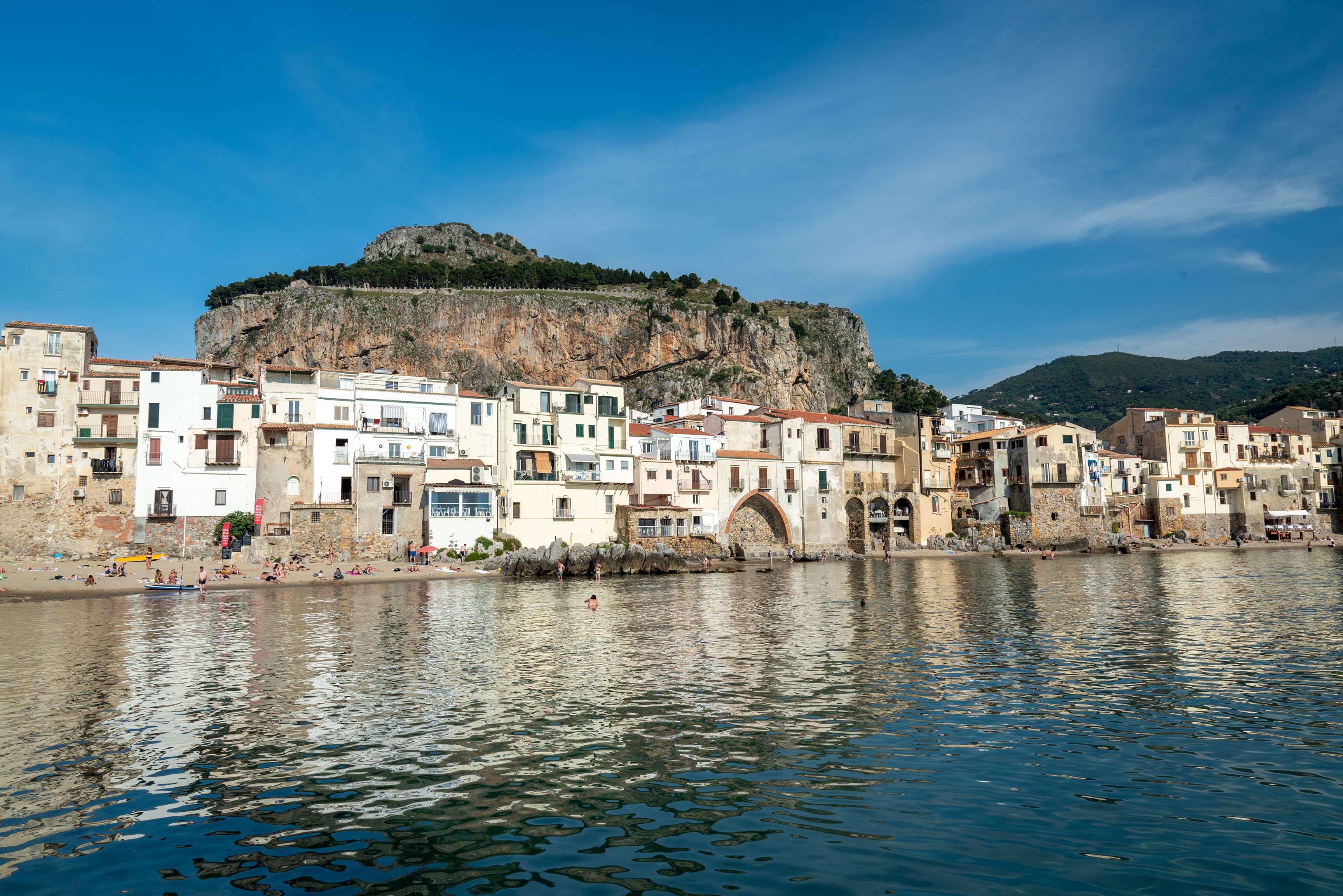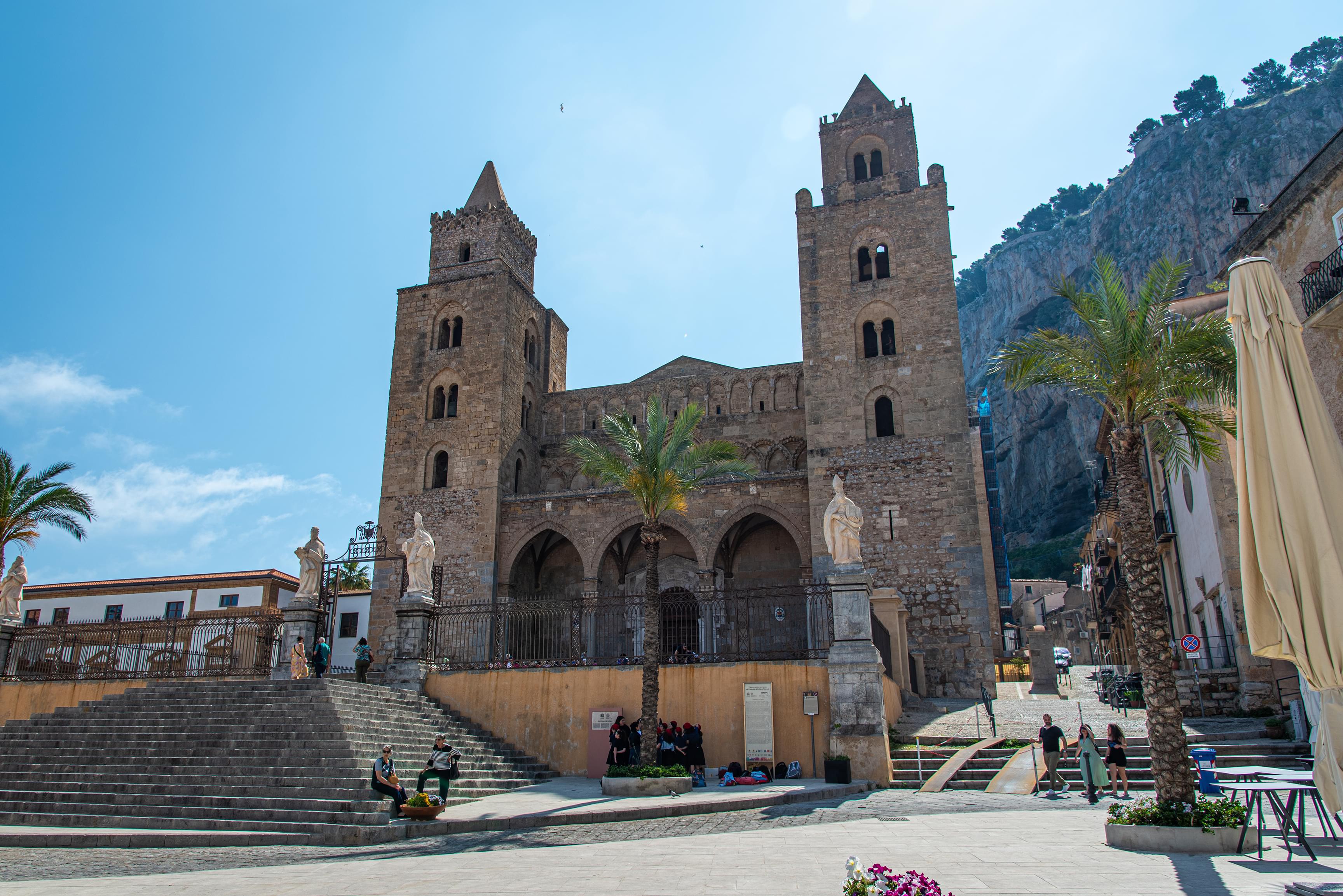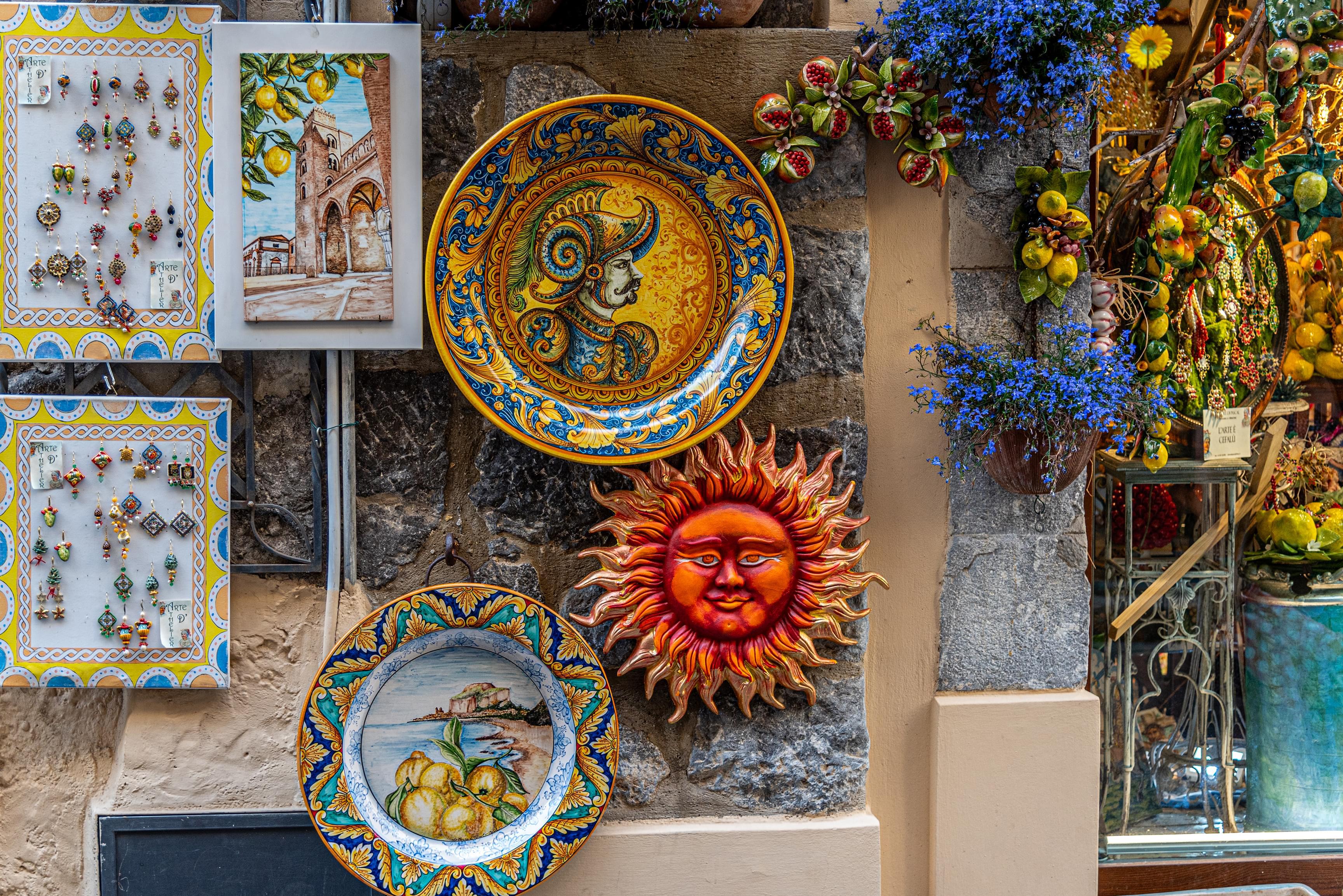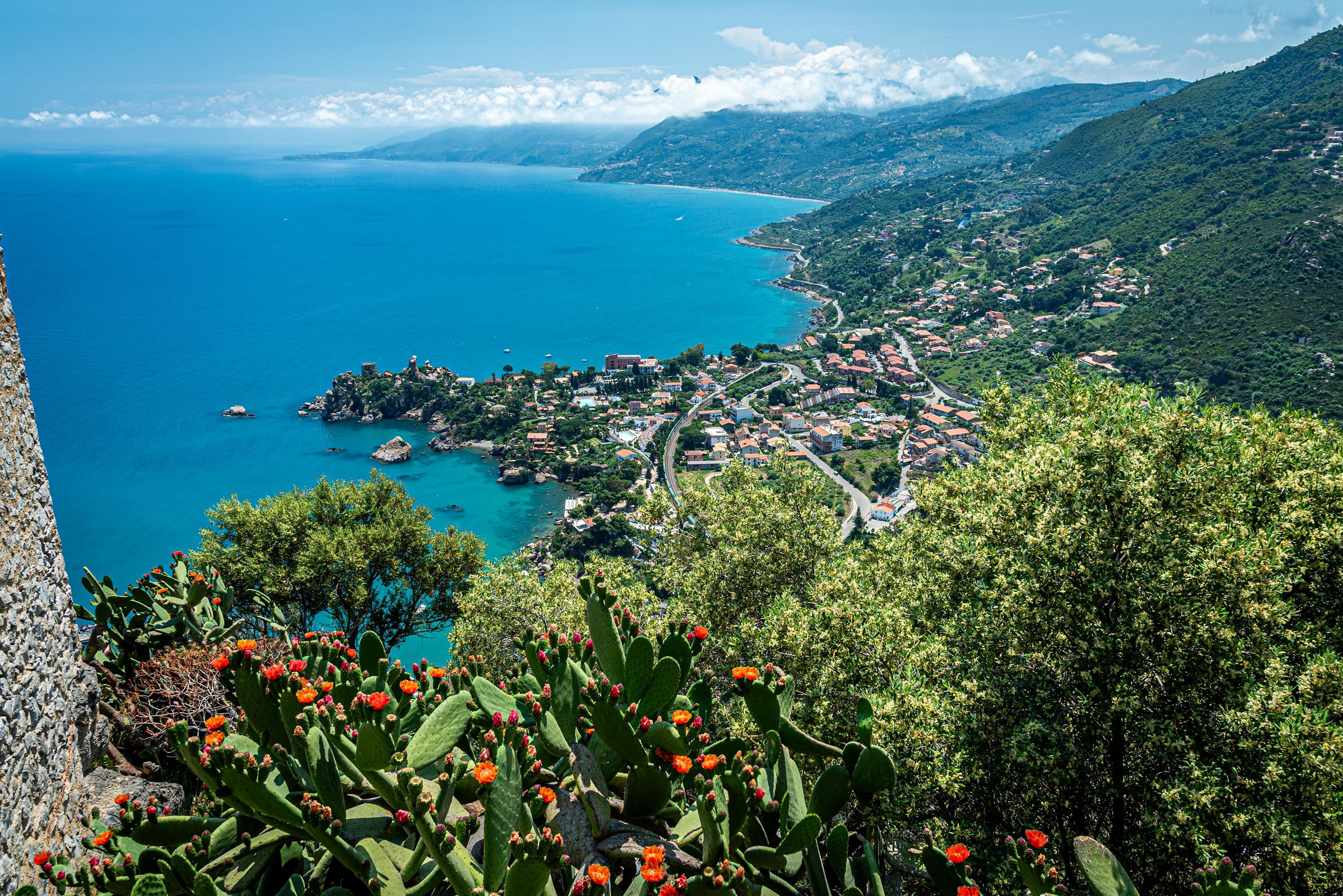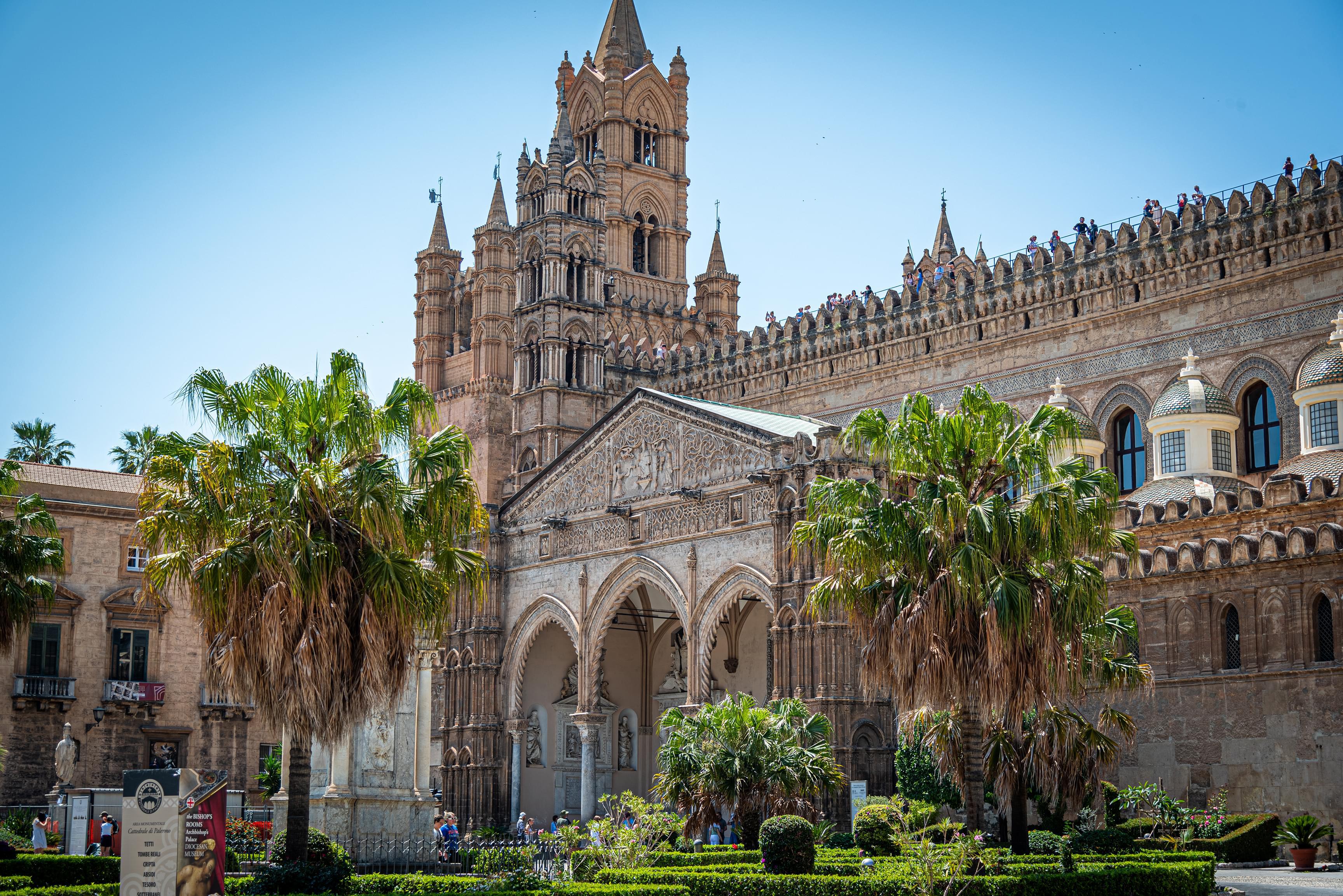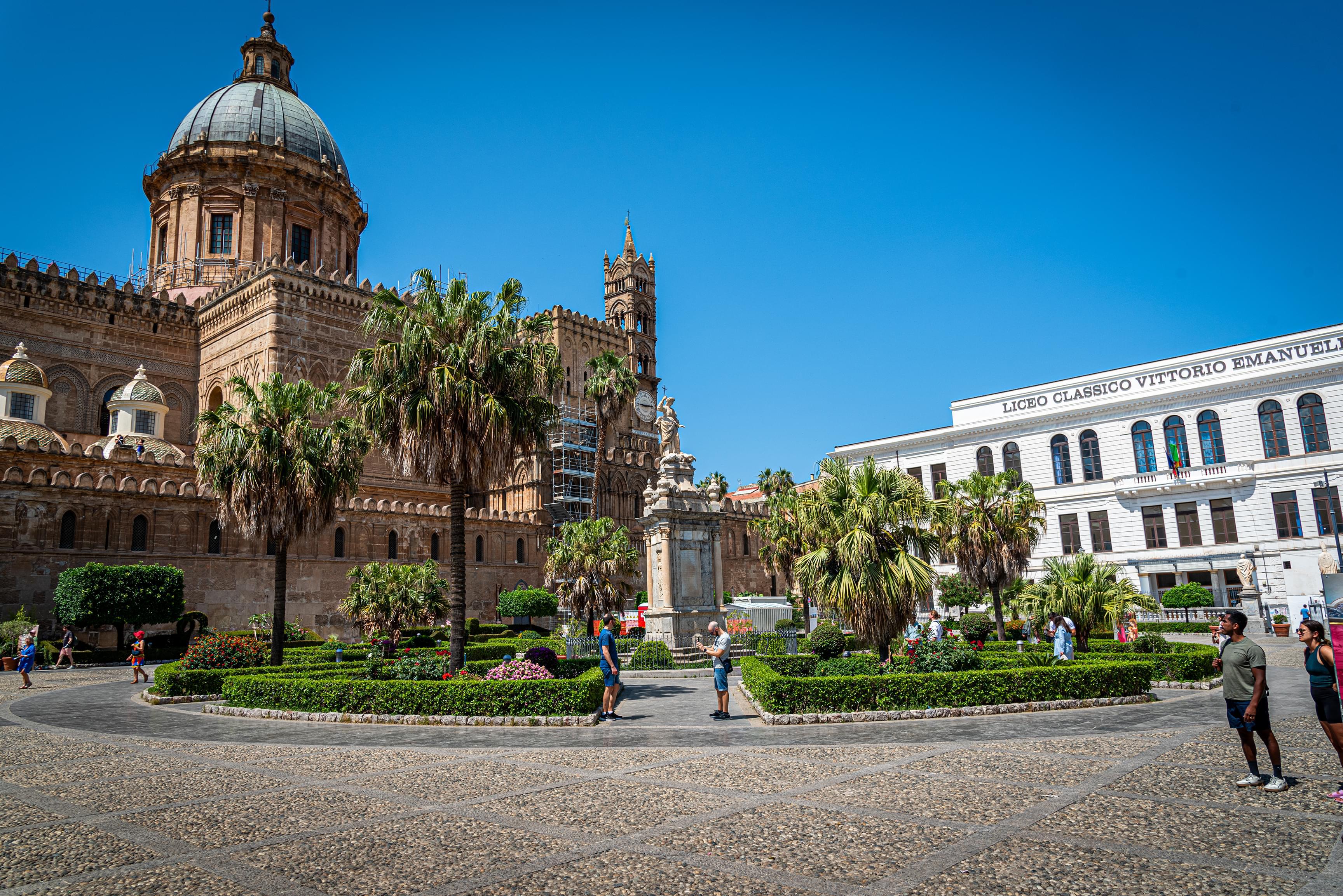Italy: Tuscany & Sicily in May 2023
Our 2023 travel plans centered around one keystone trip. We've been discussing a multi-week trip to Italy for a few years. This eventually evolved into a much larger trip in two unique regions of Italy. The first half of our journey would be a return to Tuscany after many years. The second half would take us to Sicily, where our family on my mother's side lived for many years before coming to the US. We spent eighteen days across many parts of Italy, eating excellent food, visiting priceless museums, and immersing ourselves in the beautiful culture.
From Roma to Orvieto
Our flight departed from New York and landed in Rome early on a slightly drizzly May day. Our villa in Montepulciano was a two-and-a-half-hour drive from Rome, and our check-in time was later in the afternoon, so we had a full day to fill in the meantime. We planned to make the best of our time by visiting a few places. Our first stop was in Rome, at the Parco regionale dell'Appia antica, or Appian Way and Parco degli Acquedotti. After a quick espresso and pastry, we rented bikes and road down this ancient Roman roadway. The Appian Way is a preserved road from the Ancient Roman Empire. Named after Appius Claudius Caecus, the road was founded around 312–264 BC and was a vital route for Rome's Legions. After a quick forty-five minute cruise in the on-again, off-again drizzle, we drove to Parco degli Acquedotti, which is in the same vast Parco regionale dell'Appia antica. You can walk among some famous Roman Aqueducts from around 52 BC here. The most well-known of the Aqueducts is Aqua Claudia. After this stop, it was time to head north and stop for lunch. About halfway between Rome and Montepulciano is the town of Orvieto, in the region of Umbria. Orvieto is a well-known wine producer, which we got to sample at our afternoon lunch at Ristorante Maurizio. While we were merely passing through, we did make sure to stop at the beautiful Orvieto Cathedral. Finally, with jet lag kicking in, it was time to make our way to our villa, where we spent the next three days exploring the Tuscan countryside.
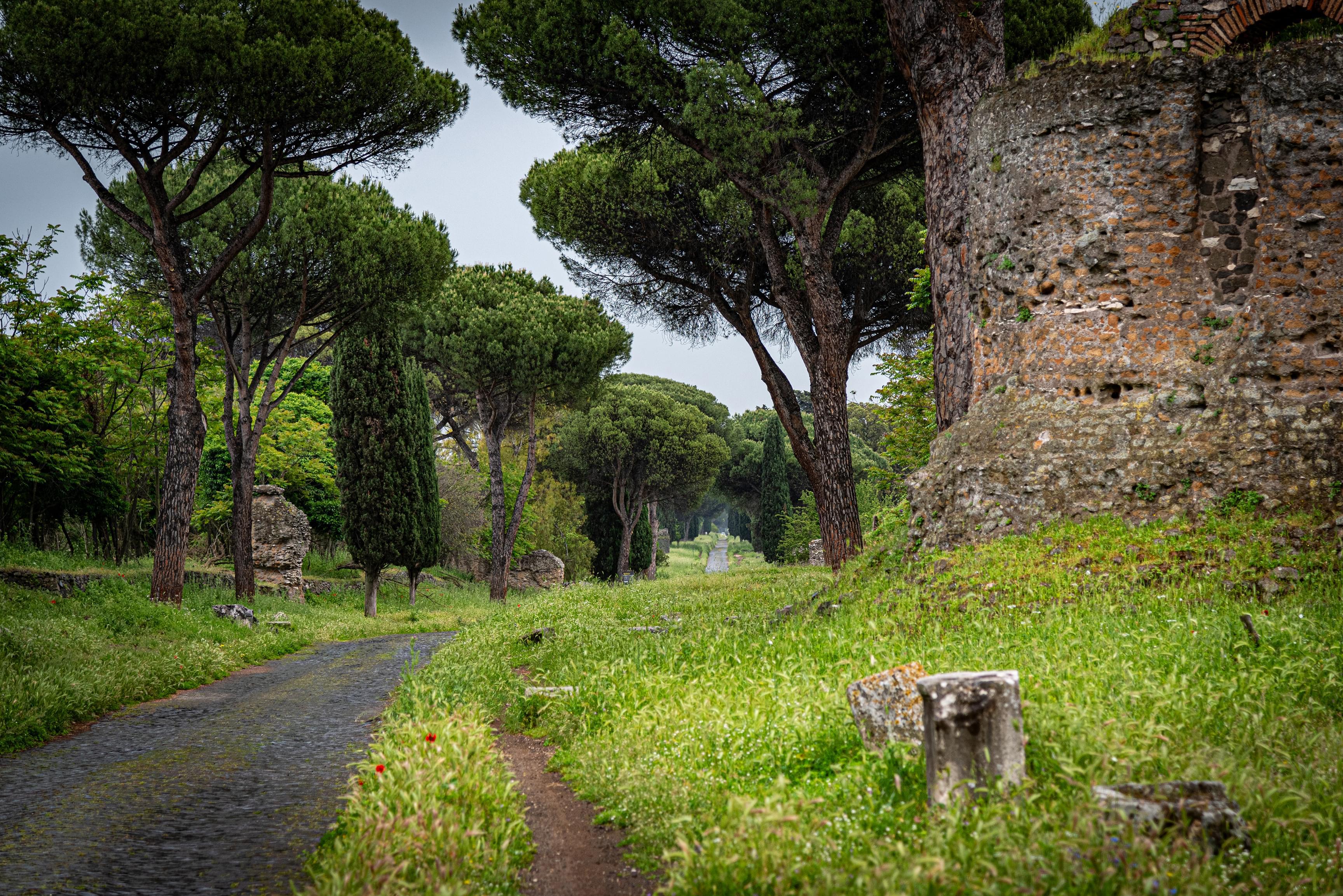
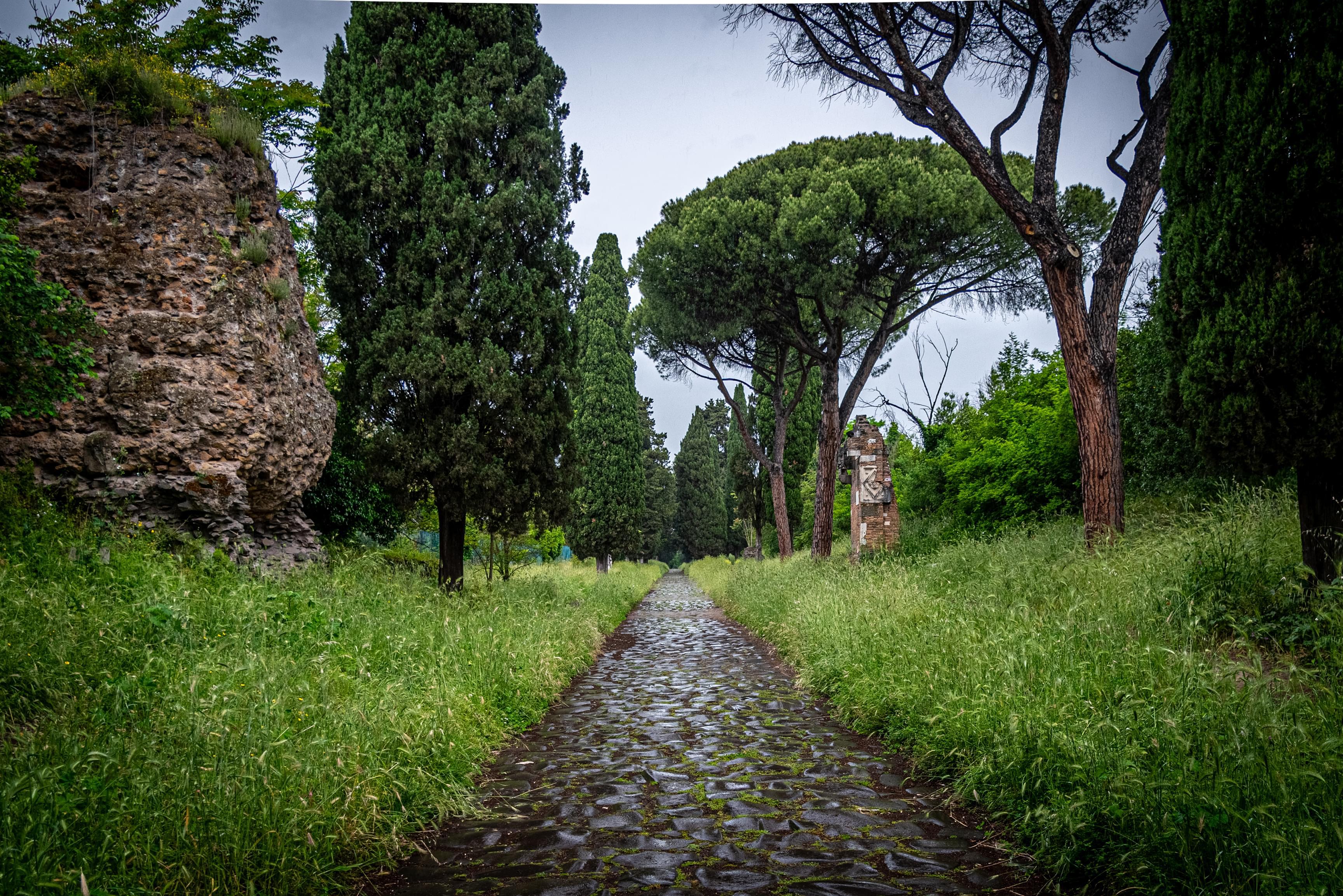
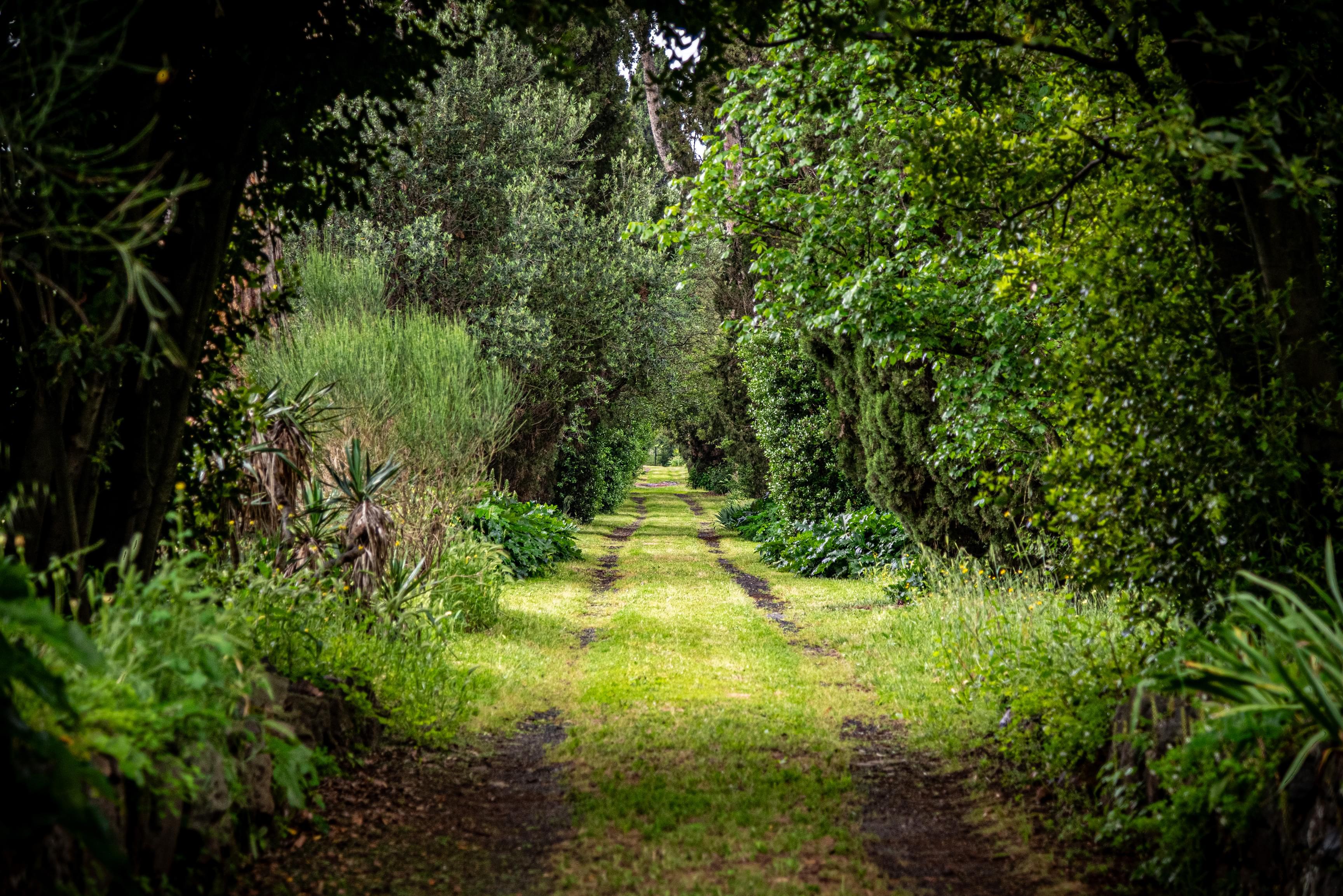
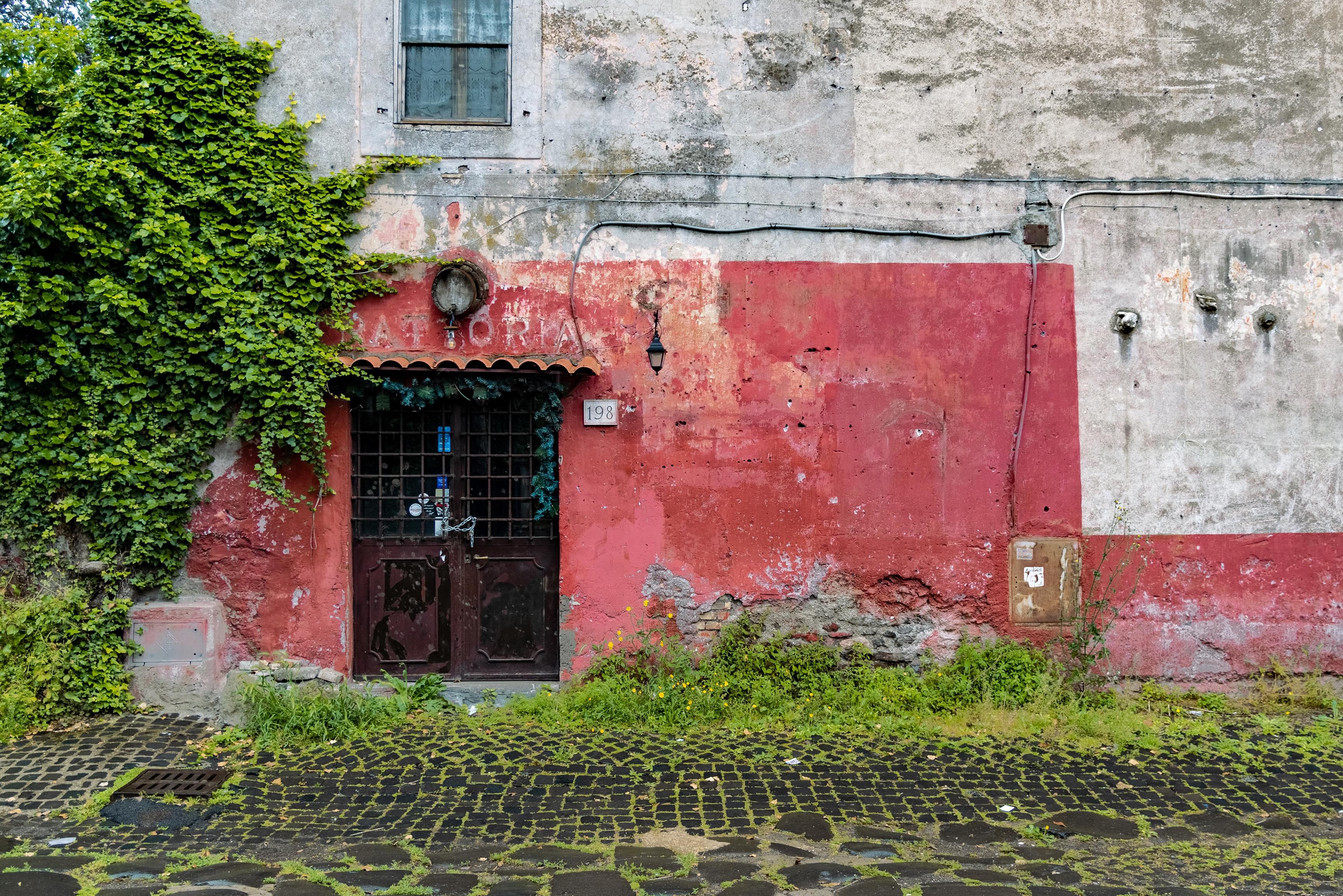
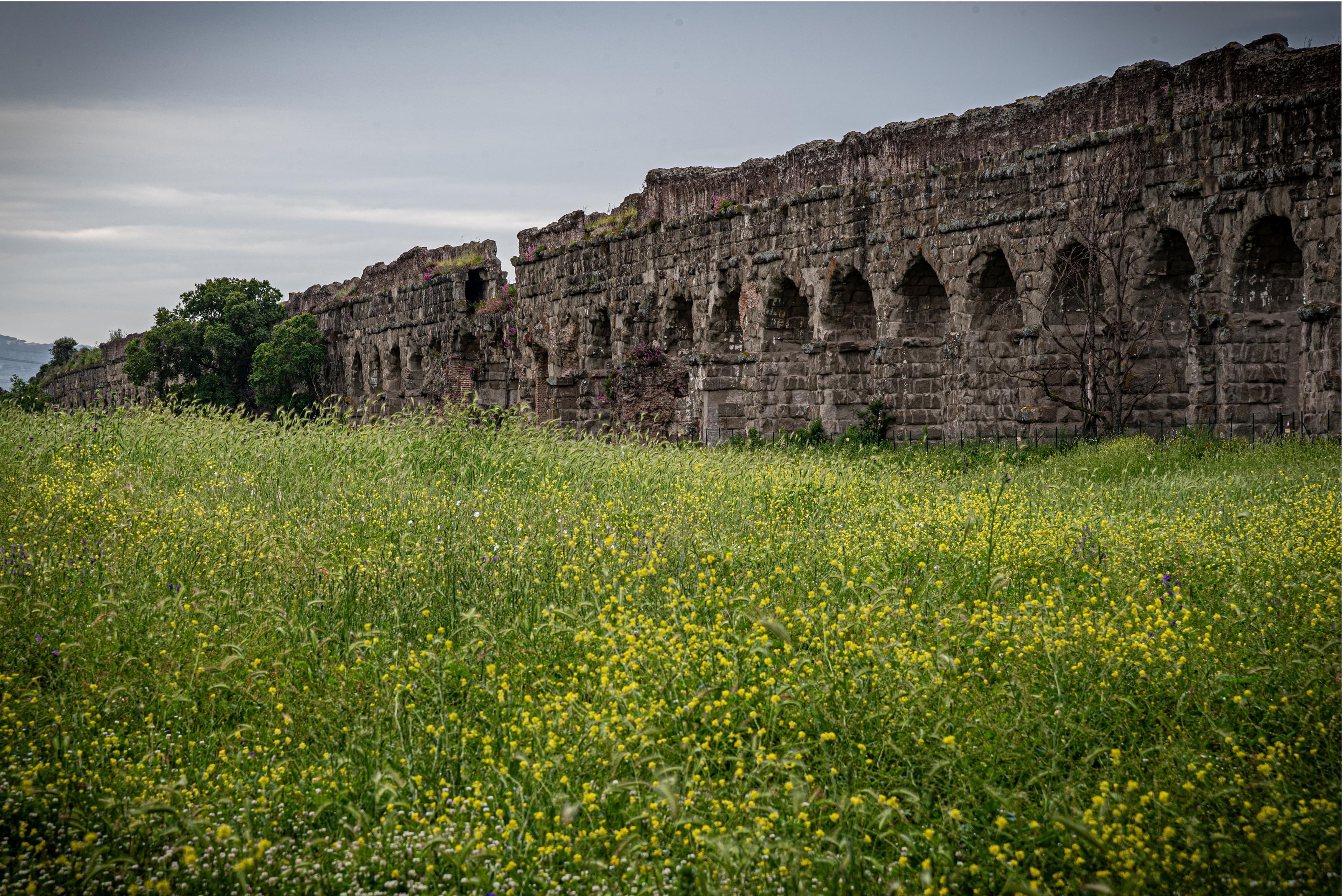
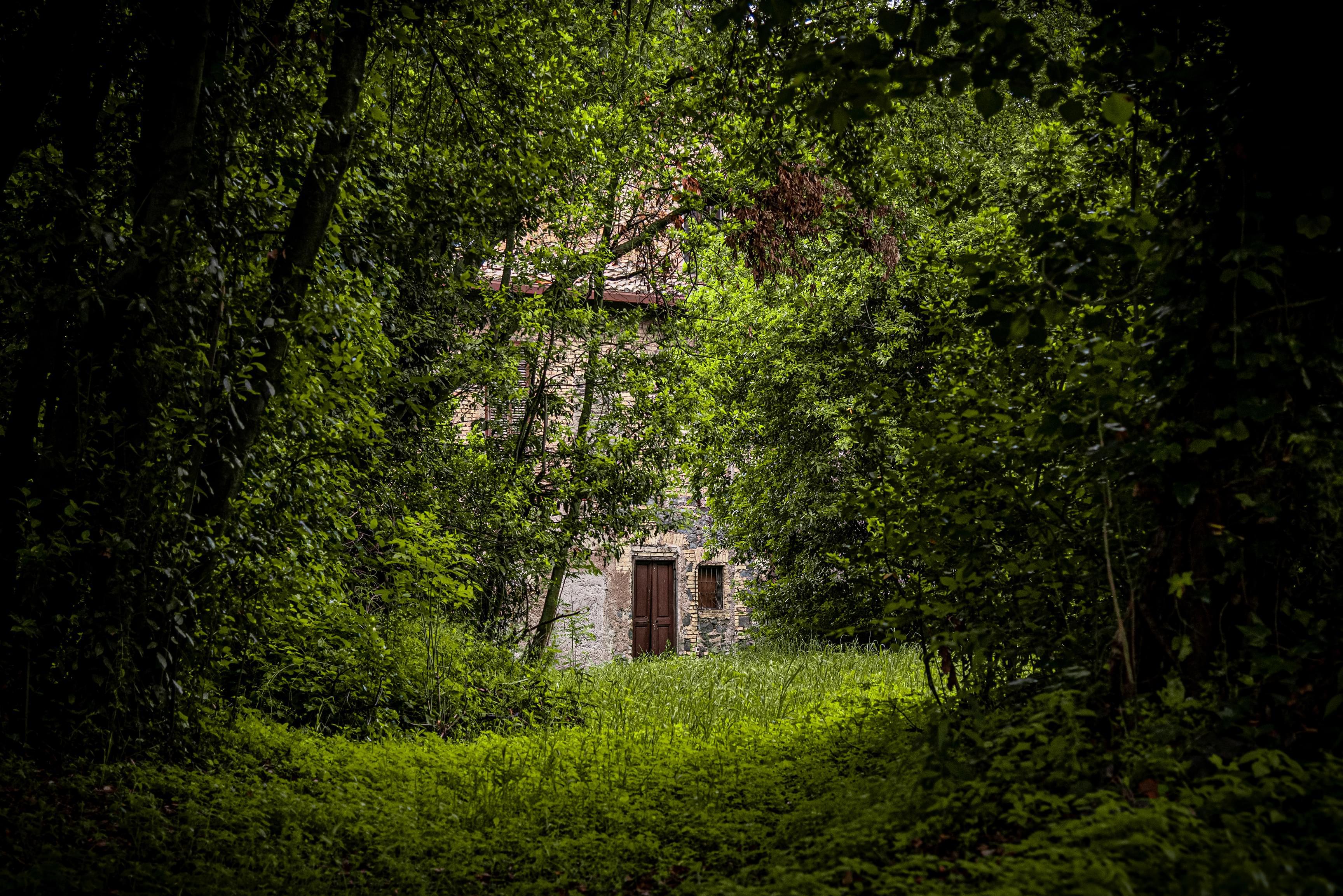
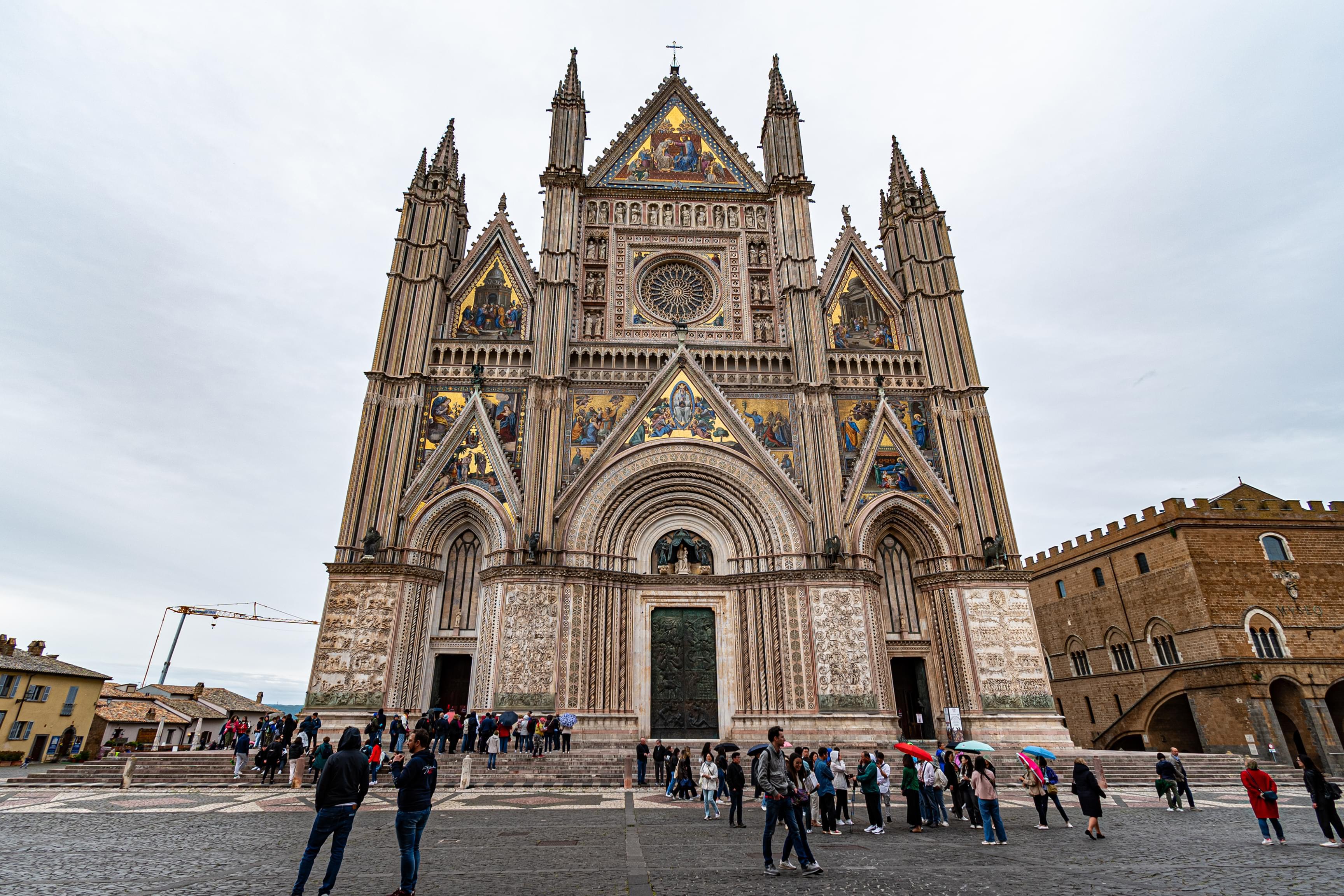
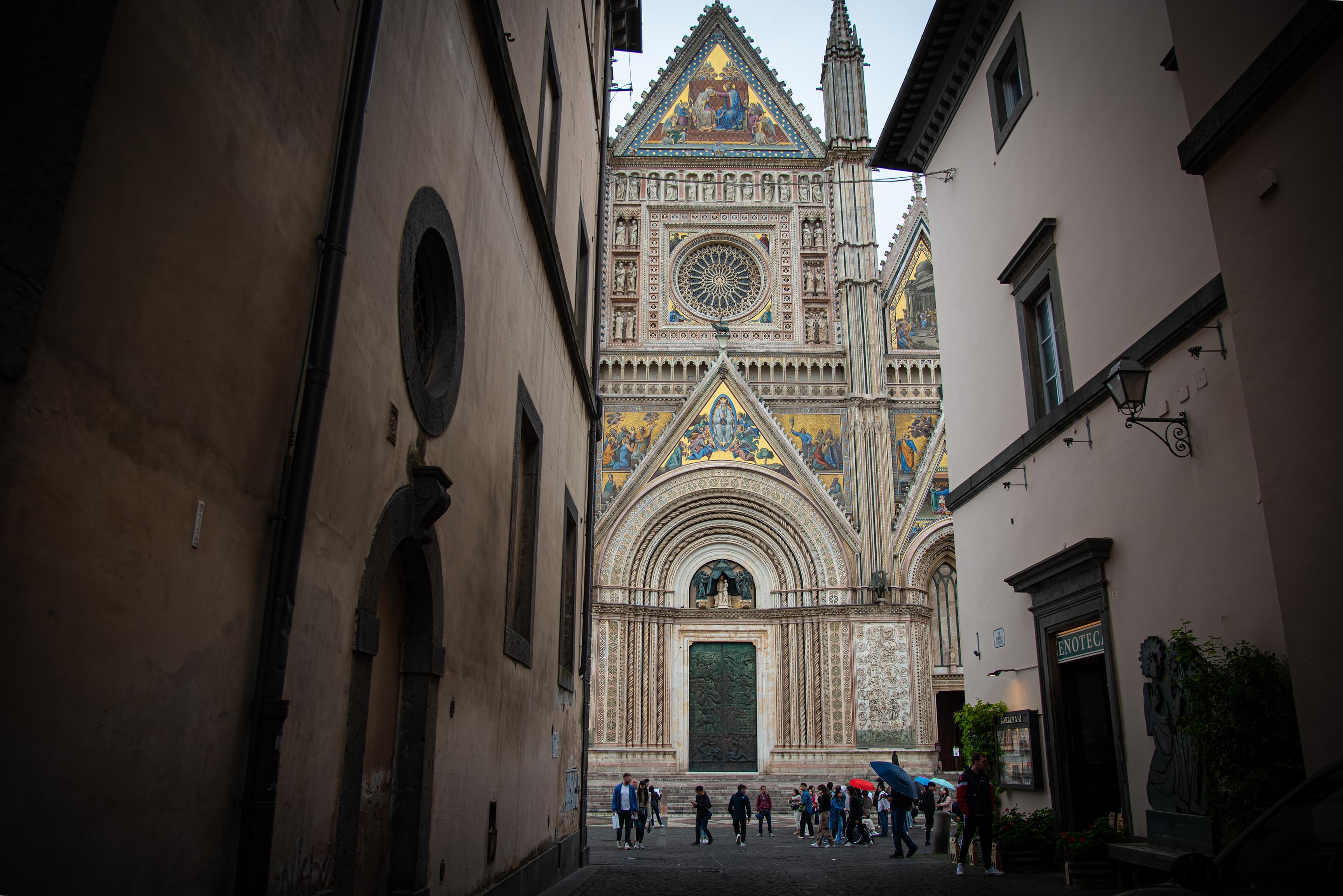
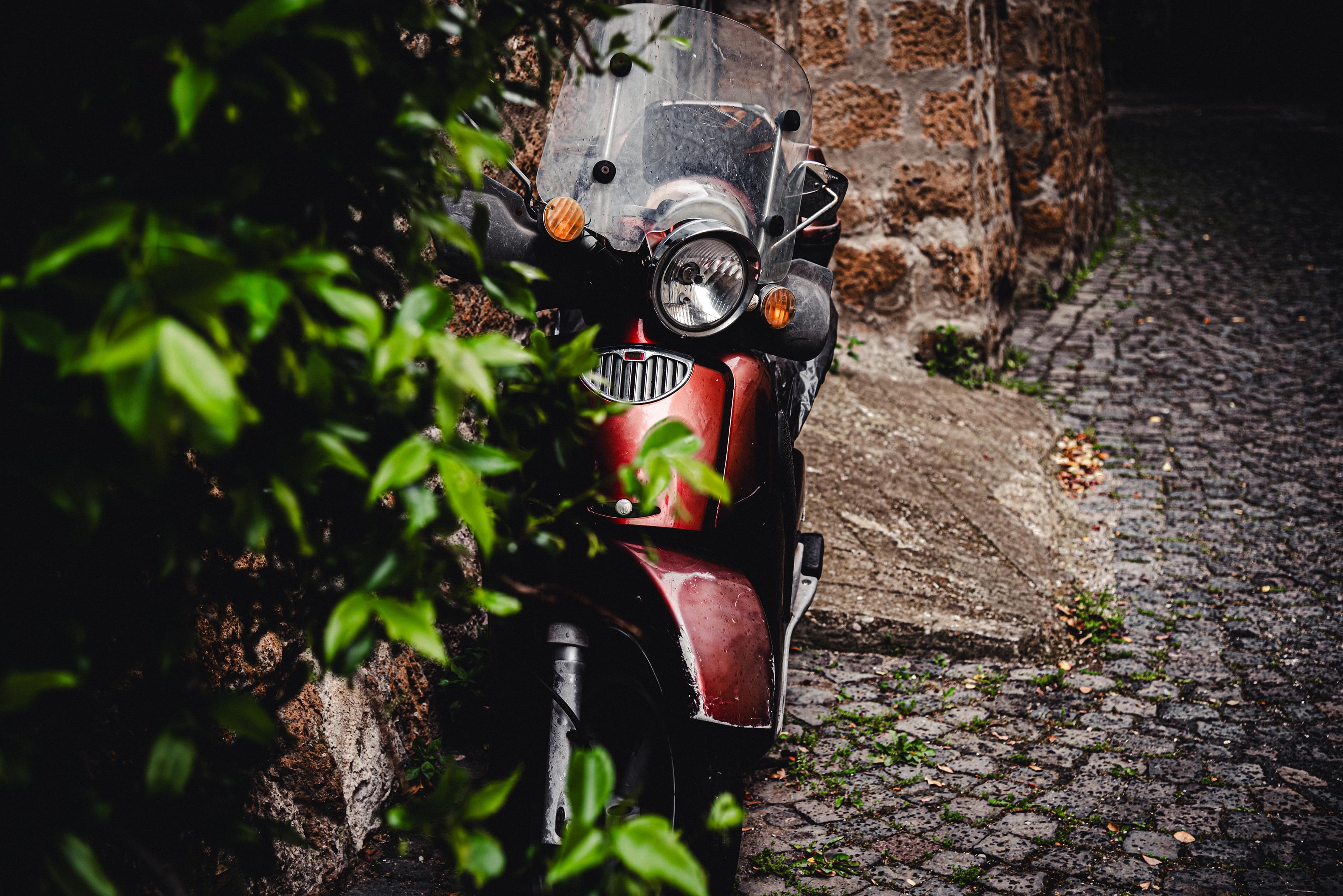
Toscana (Tuscany)
Our home base for the next three days was Villa Talosa, located on a vineyard in Montepulciano overlooking incredible Tuscan scenery. That first morning, the rain subsided, and the skies were crystal clear. Our first day comprised a bit of Tuscany and a bit of Umbria. We started our morning off in Arezzo. Arezzo was established by the Etruscan civilization but also has a rich Roman history and became known as a city of gold and fashion. We had a nice lunch in Piazza Grande before driving to our second stop that day, Perugia. Perugia is the capital of Umbria and is known as a university town and the Baci, the famous chocolate. We spent the afternoon shopping and taking in the architecture and the local cuisine. We enjoyed a fantastic porchetta panini at Antica Porchetteria Granieri 1916. Our last stop, this first day, was the town of Assisi. It was the place of many famous Italians, such as Propertius and St. Francis, who founded the Franciscan religious order. Many architectural structures established by the Franciscan order are designated UNESCO World Heritage sites.
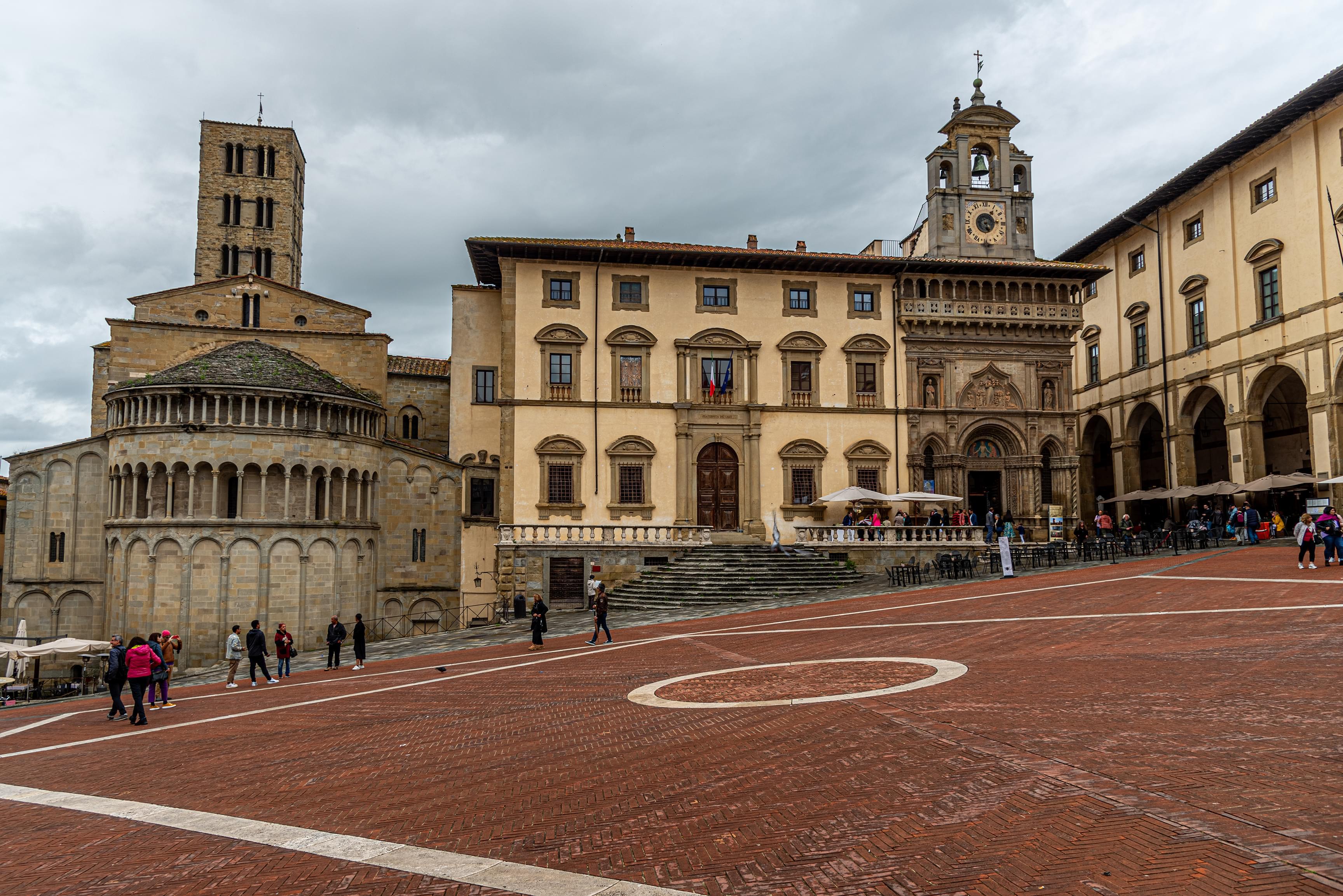
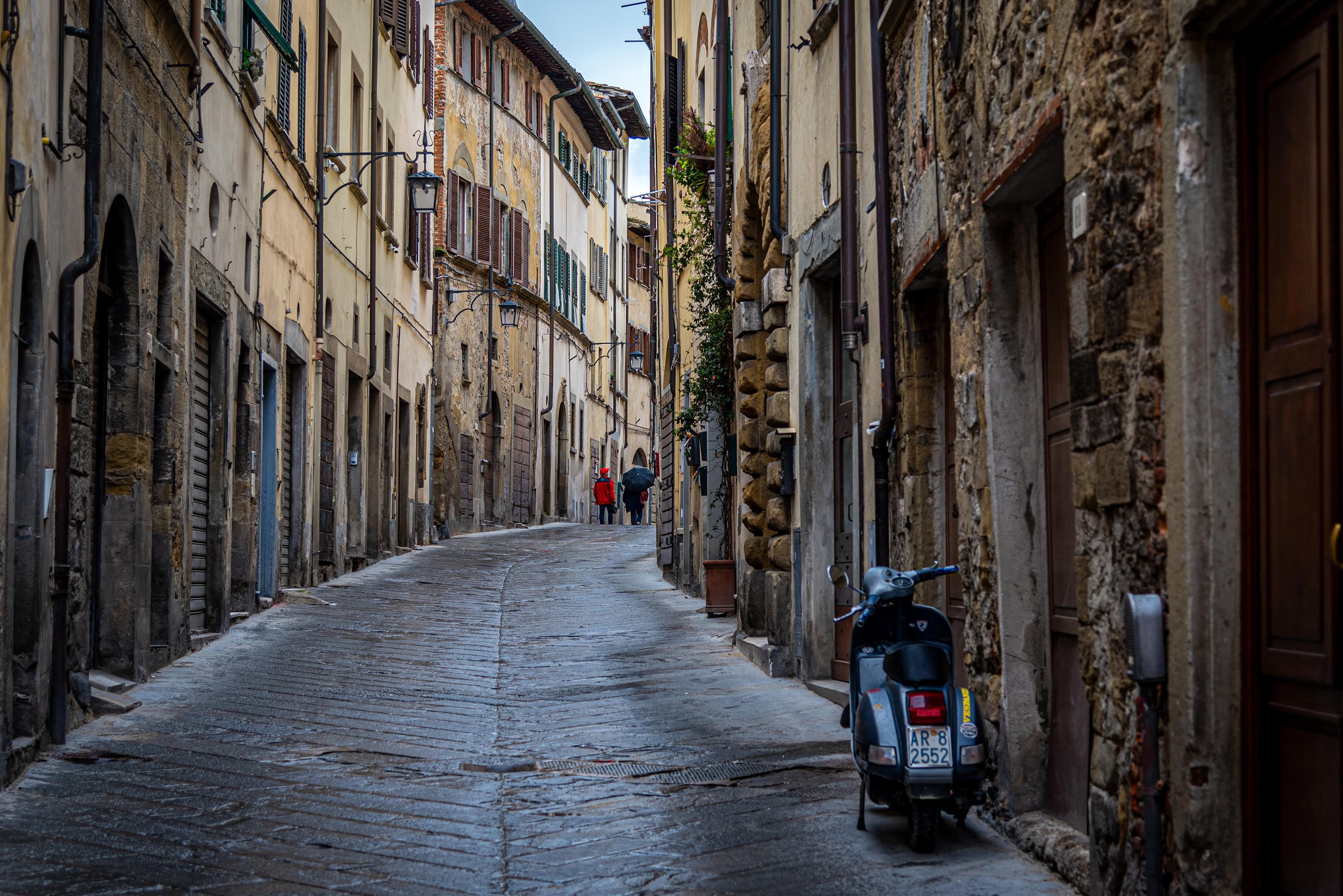
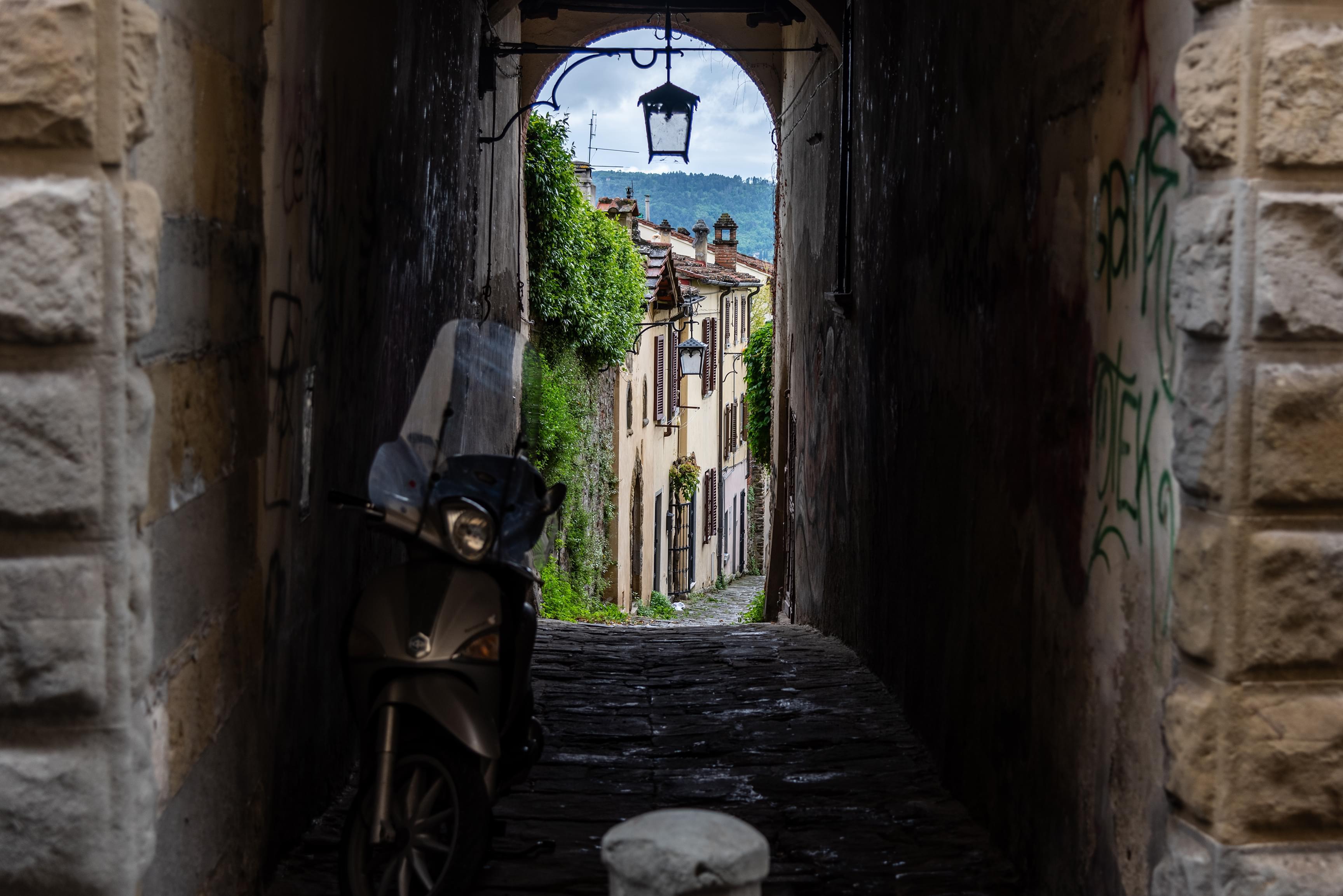
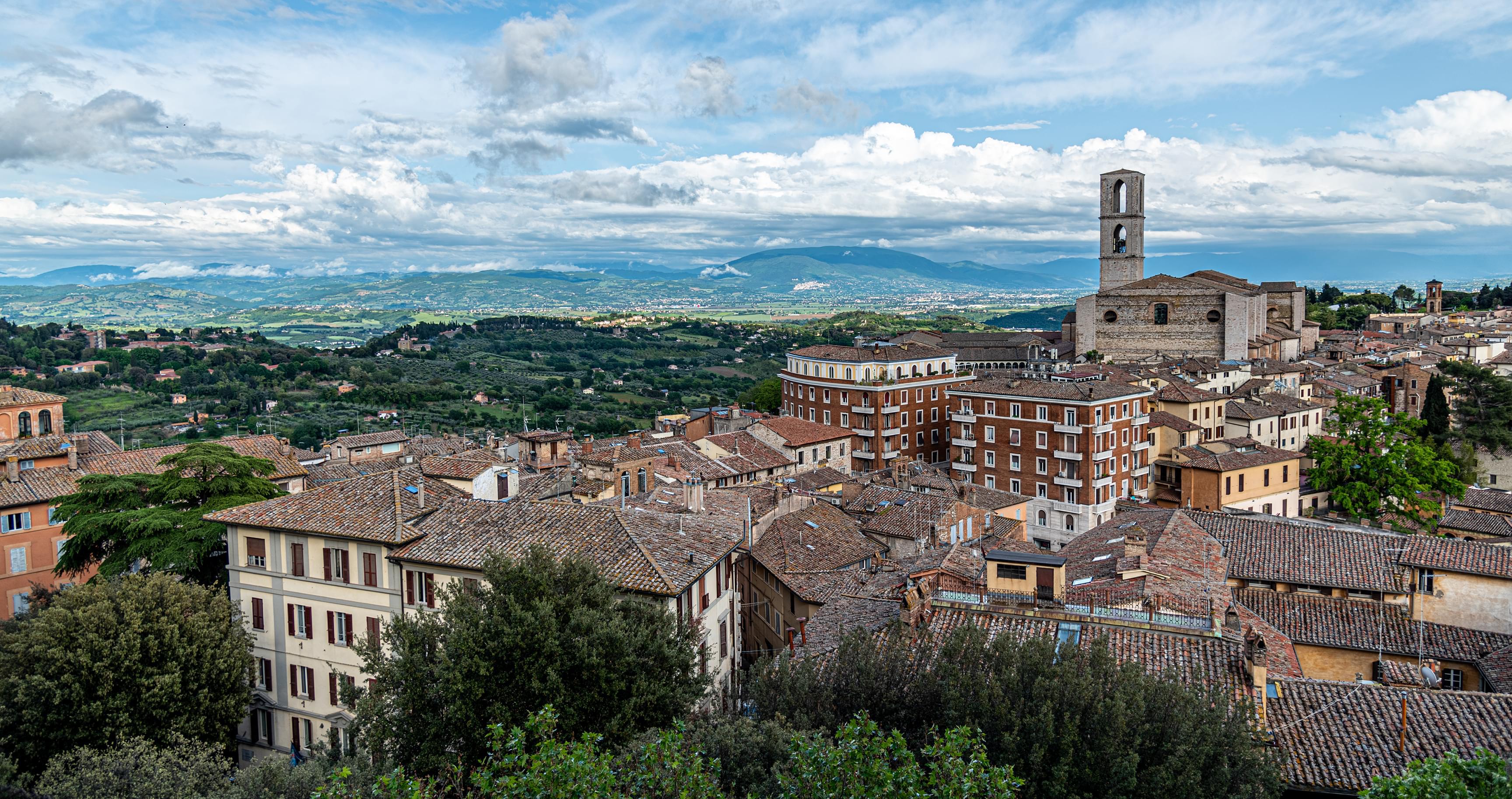
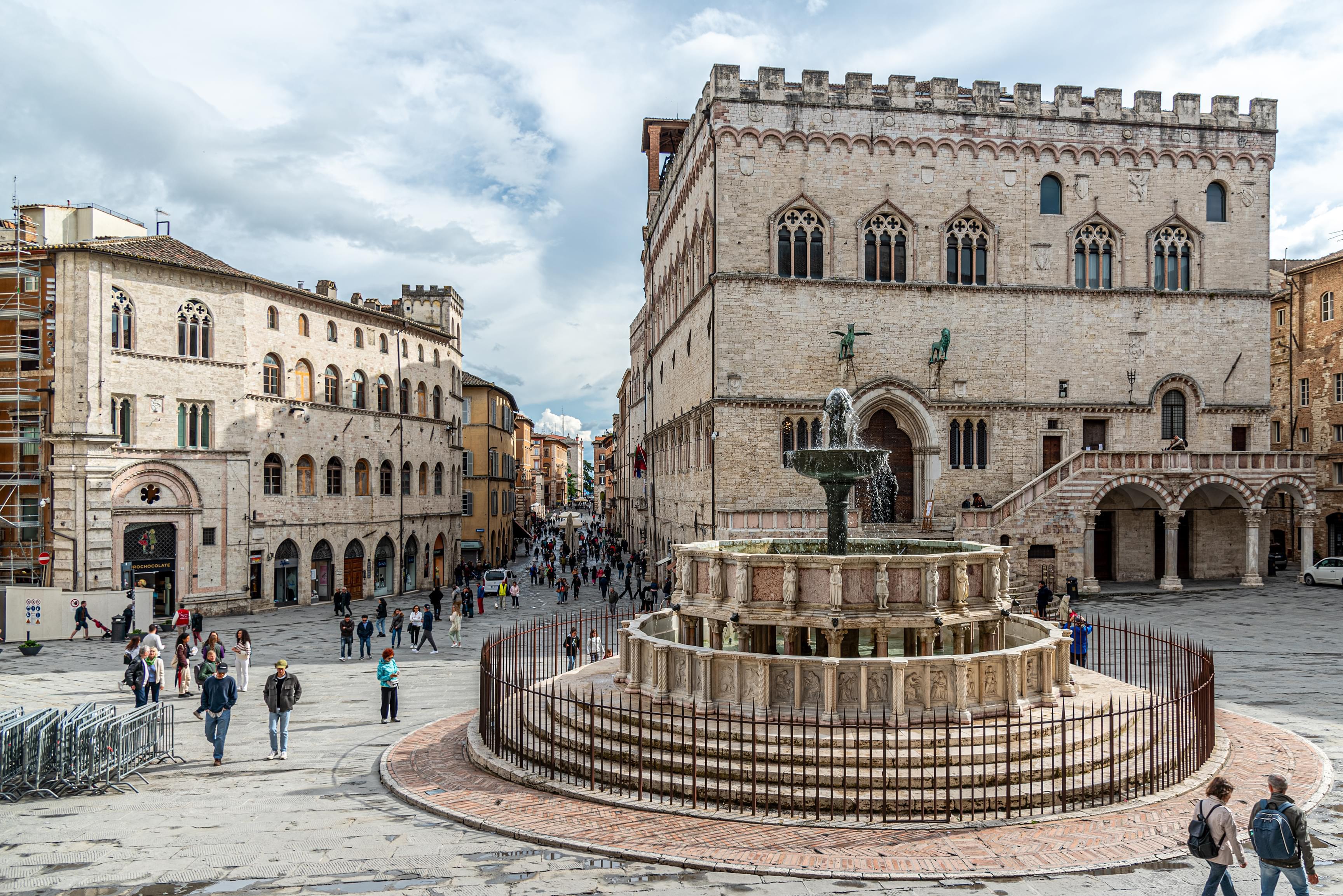
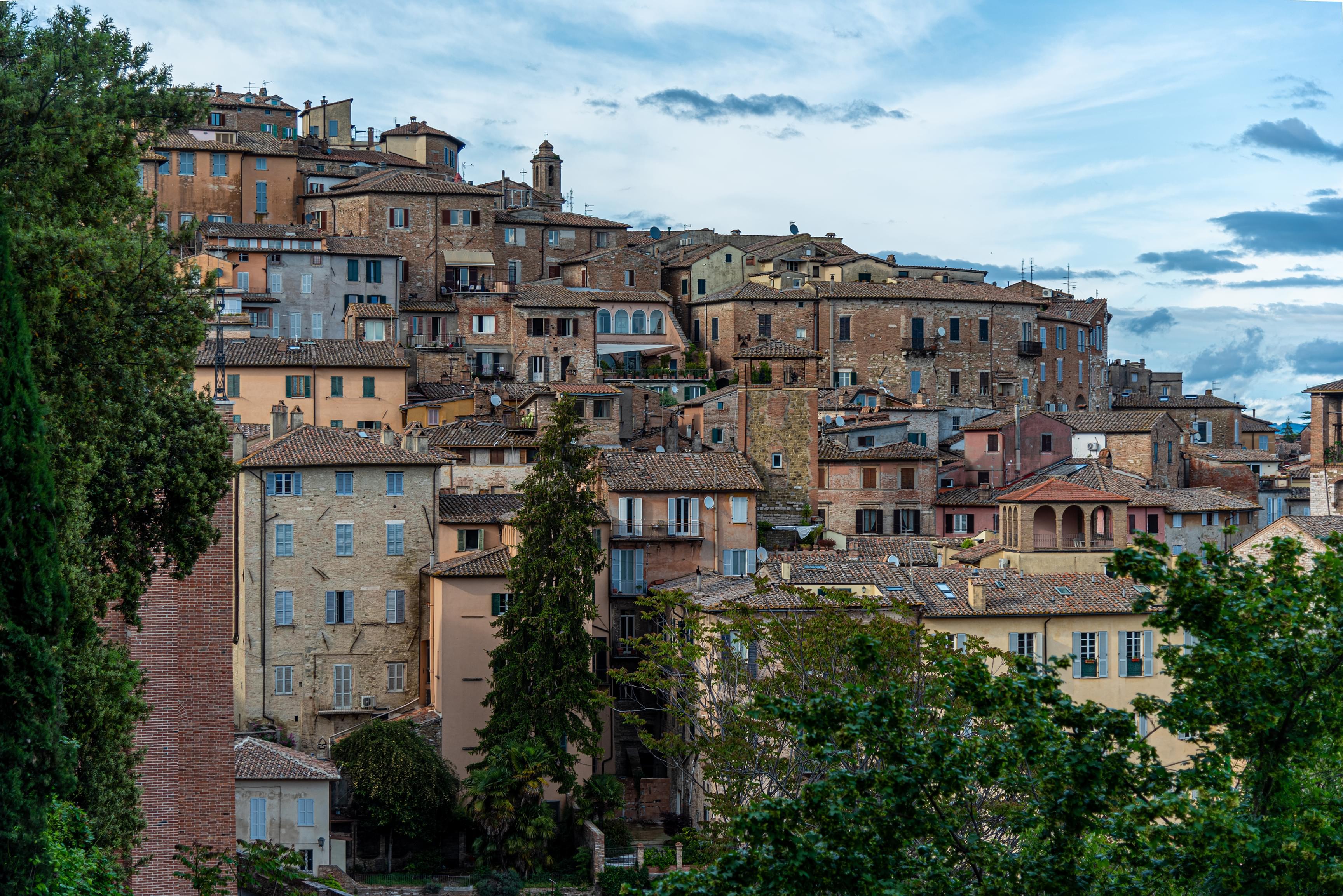

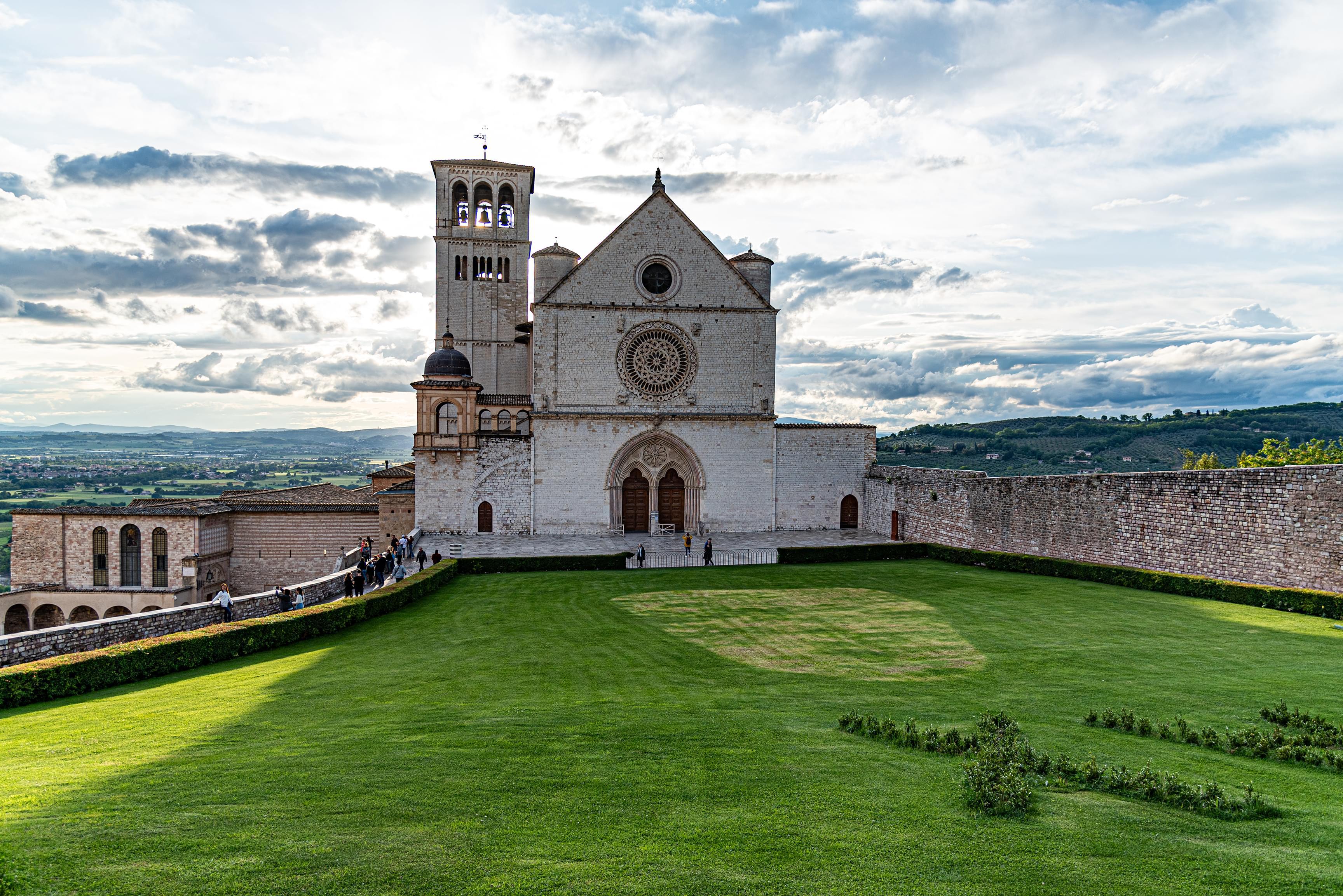
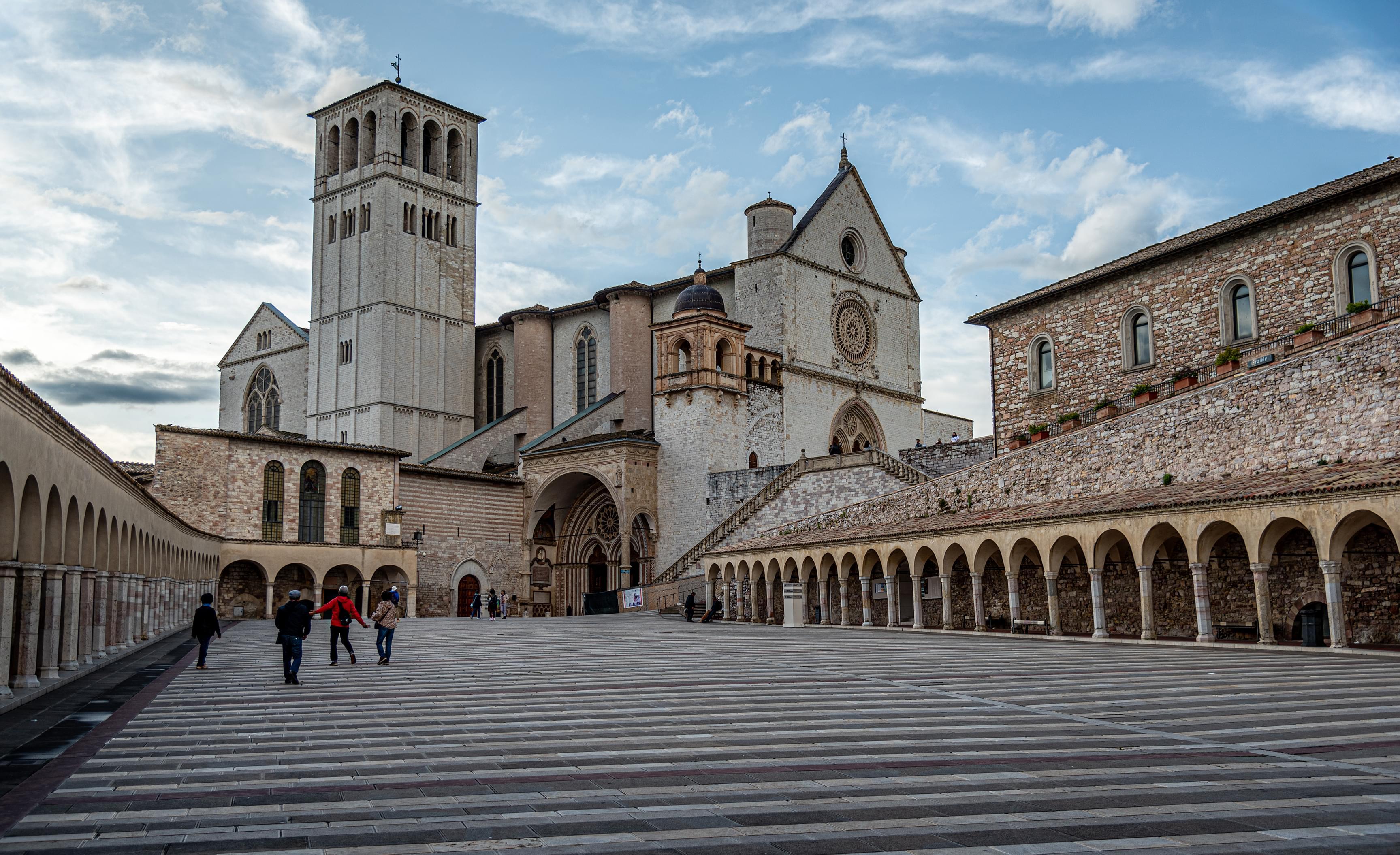
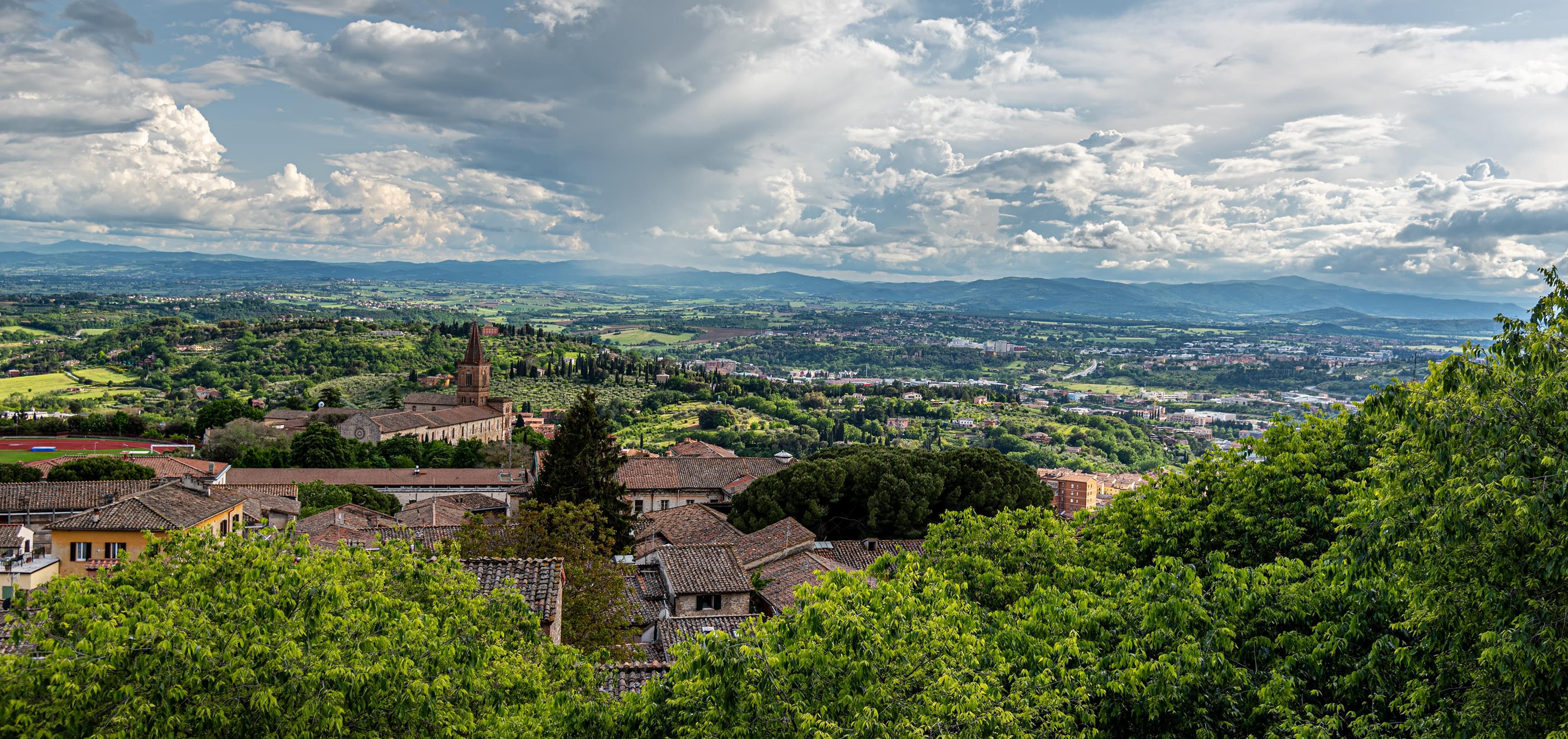

Our second day was spent in the heart of classic Tuscany. Driving through the Val d'Orcia, our first stop was in Pienza. Along with the the Val d'Orcia, Pienza was declared a World Heritage Site in 2004. Architecturally, Pienza is considered a cornerstone of Renaissance urbanism. We had a deliciously simple lunch at Sette Di Vino on Piazza di Spagna, a short walk from Pienza Cathedral. Our second stop was the hilltop town of Montalcino, where the exceptional Brunello di Montalcino wine comes from. There is an excellent wine-tasting experience in the Fortress in Montalcino, where you can sample the regional wines along Charcuterie with local Formaggio. Lastly, we went into Montepulciano after a short rejuvenation at the villa. We needed more time, but we did manage to have a delicious dinner at La Pasion. The staff was engaging and accommodating, and the food and drinks were excellent.
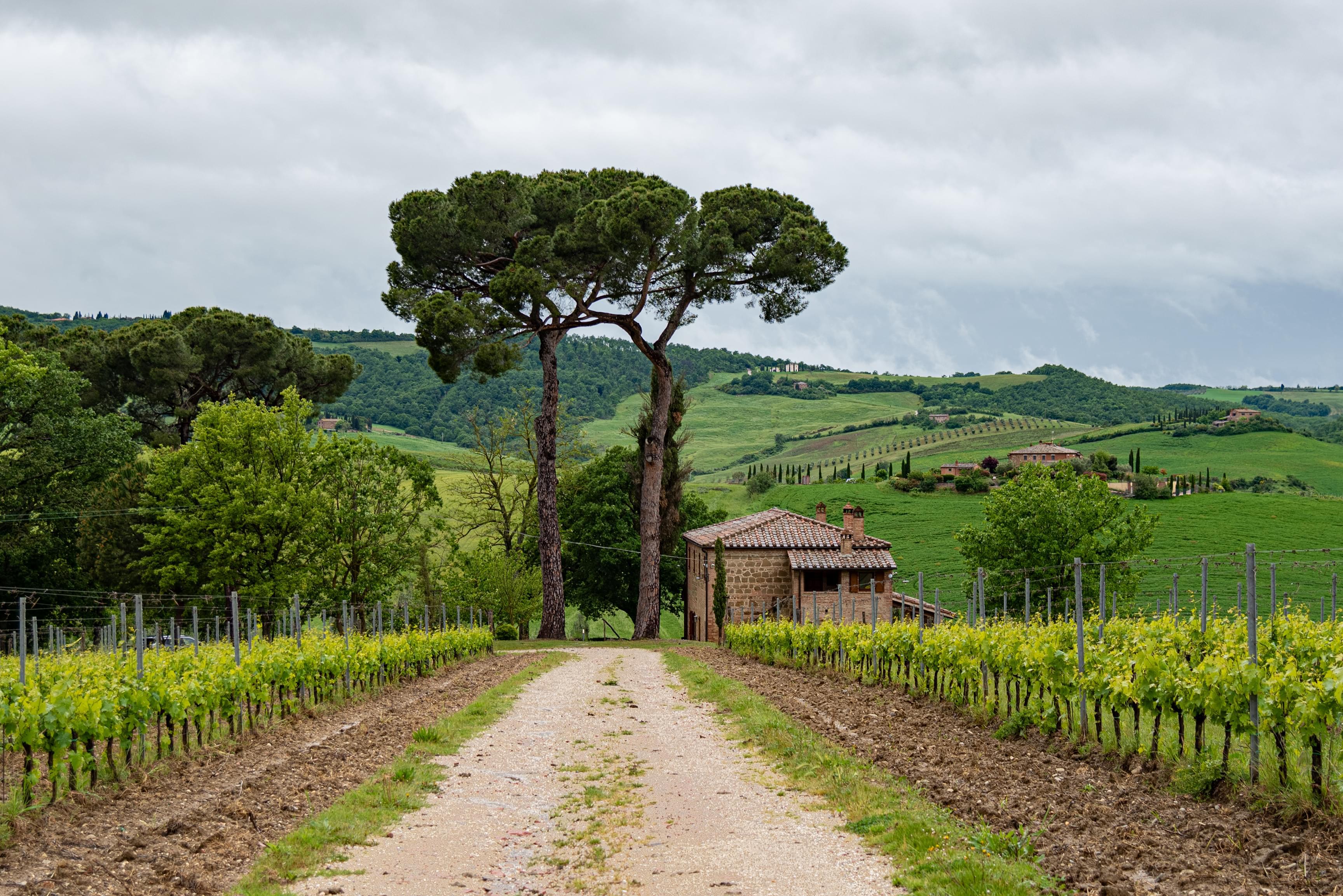
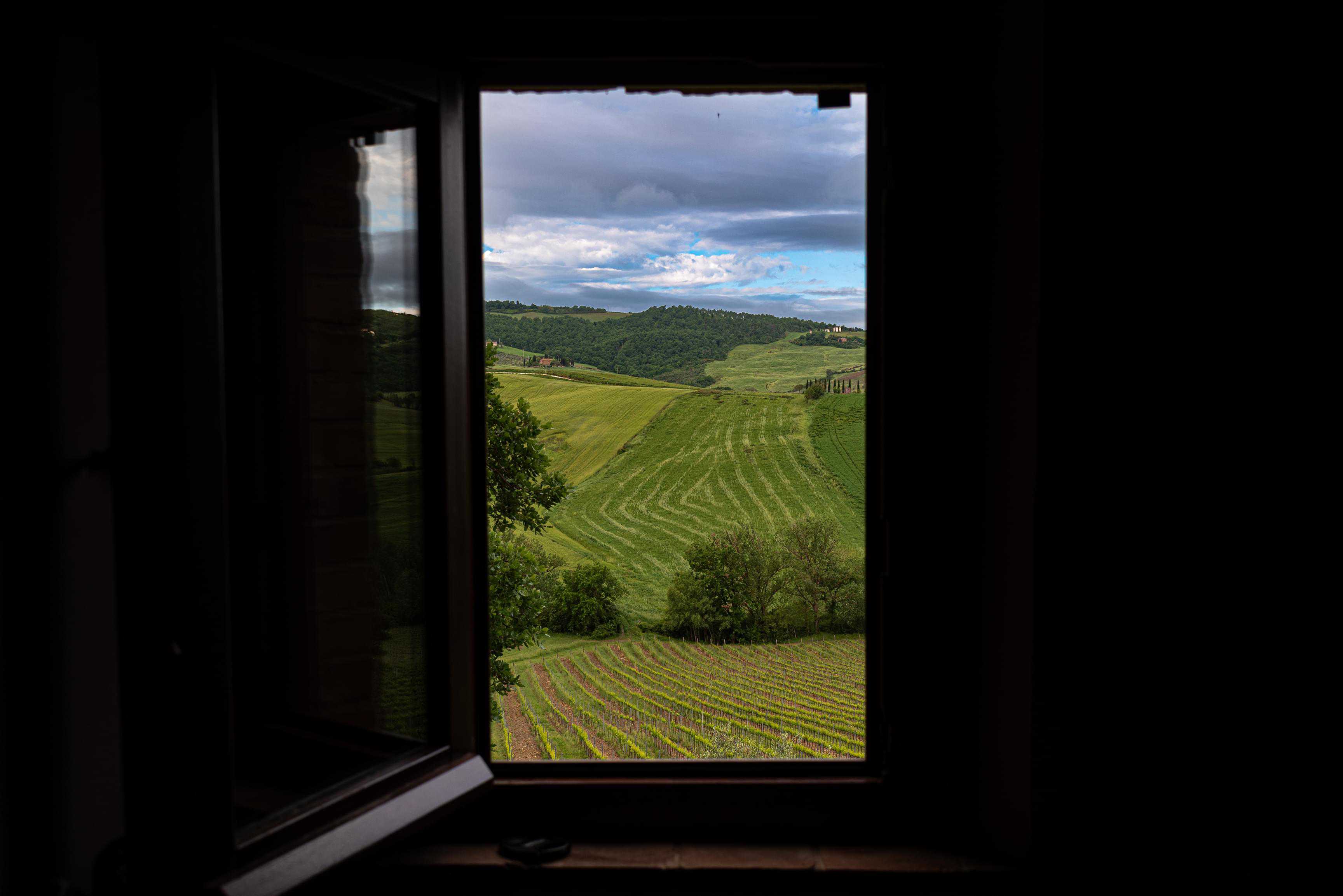
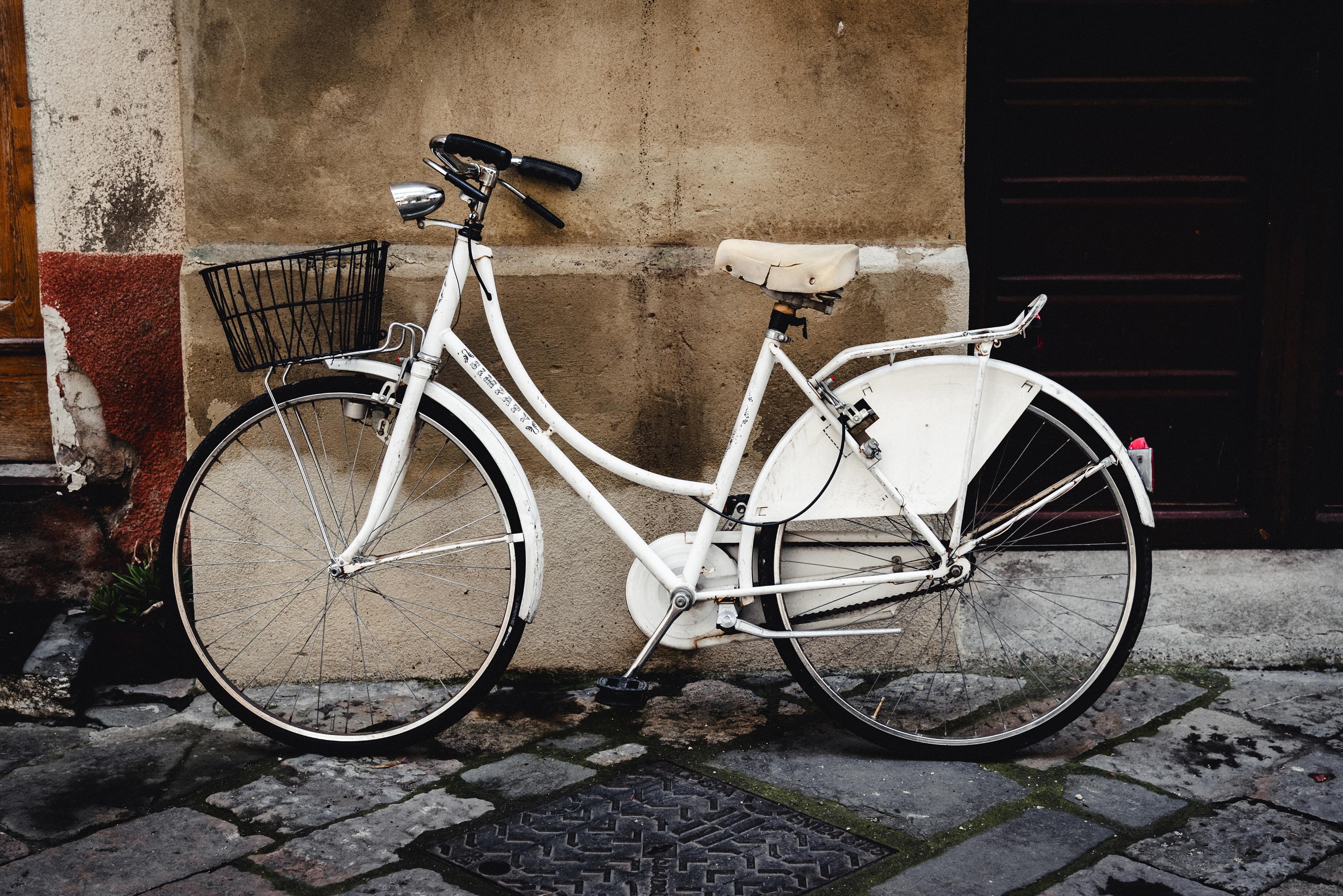
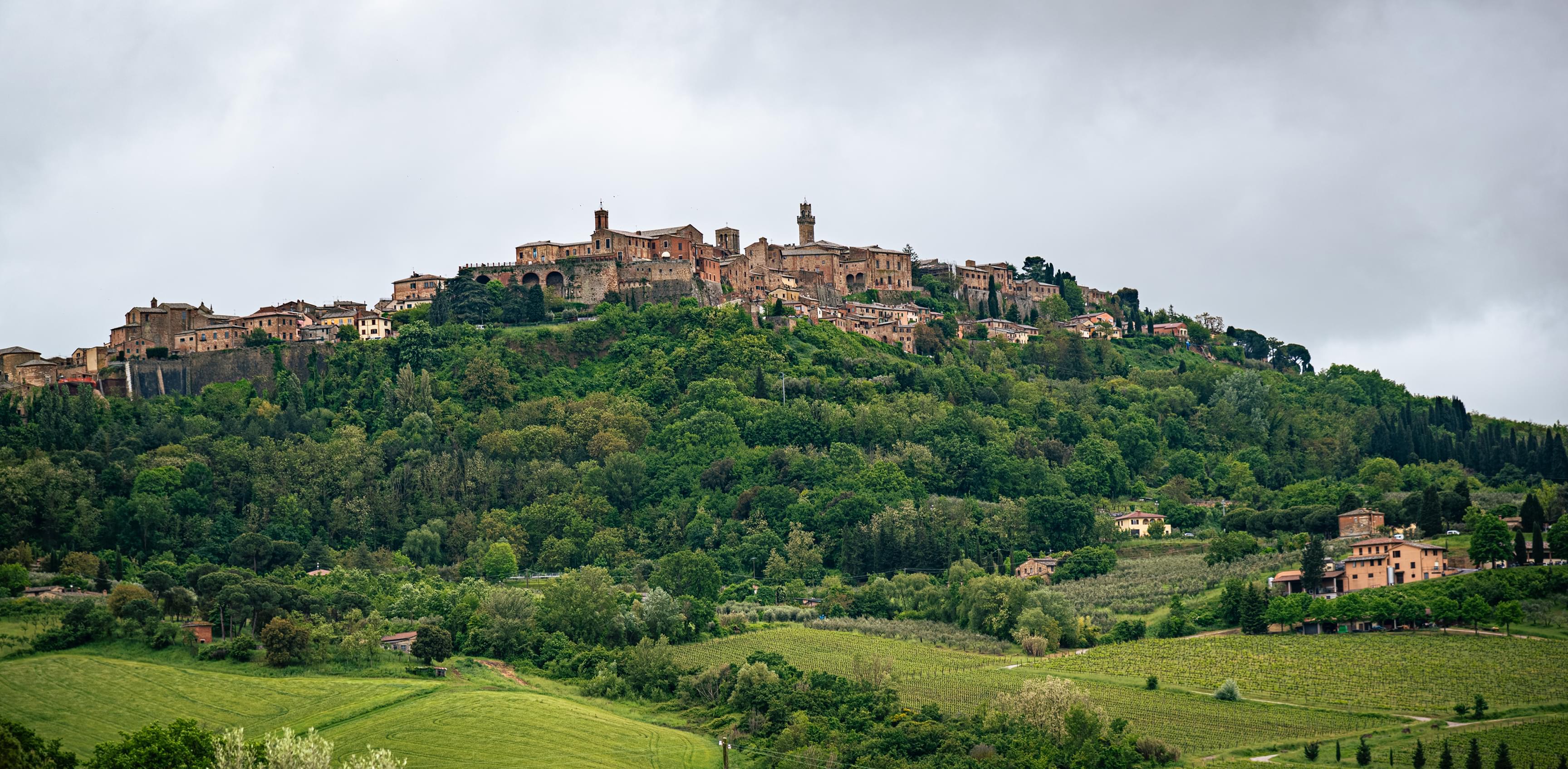
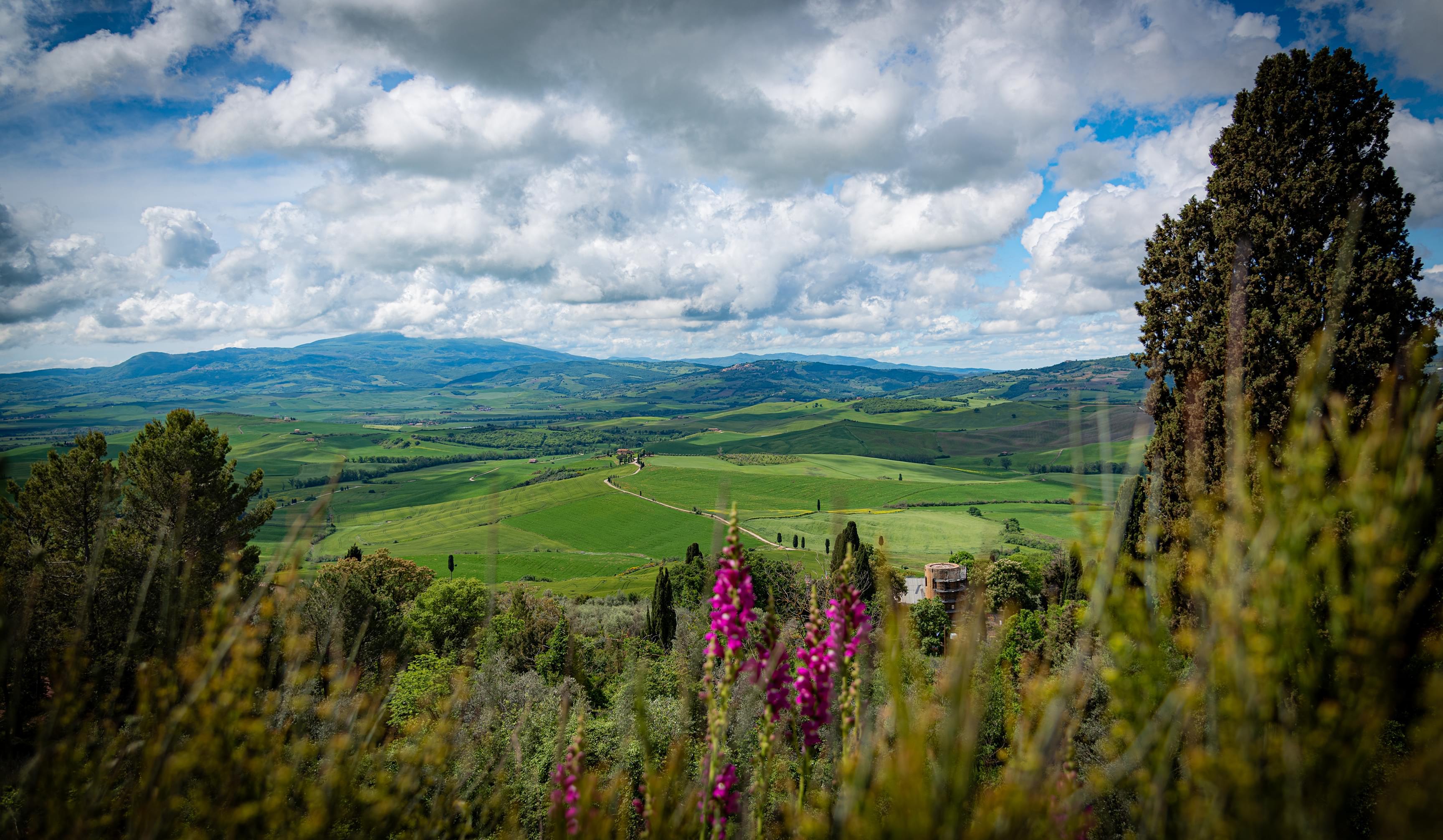
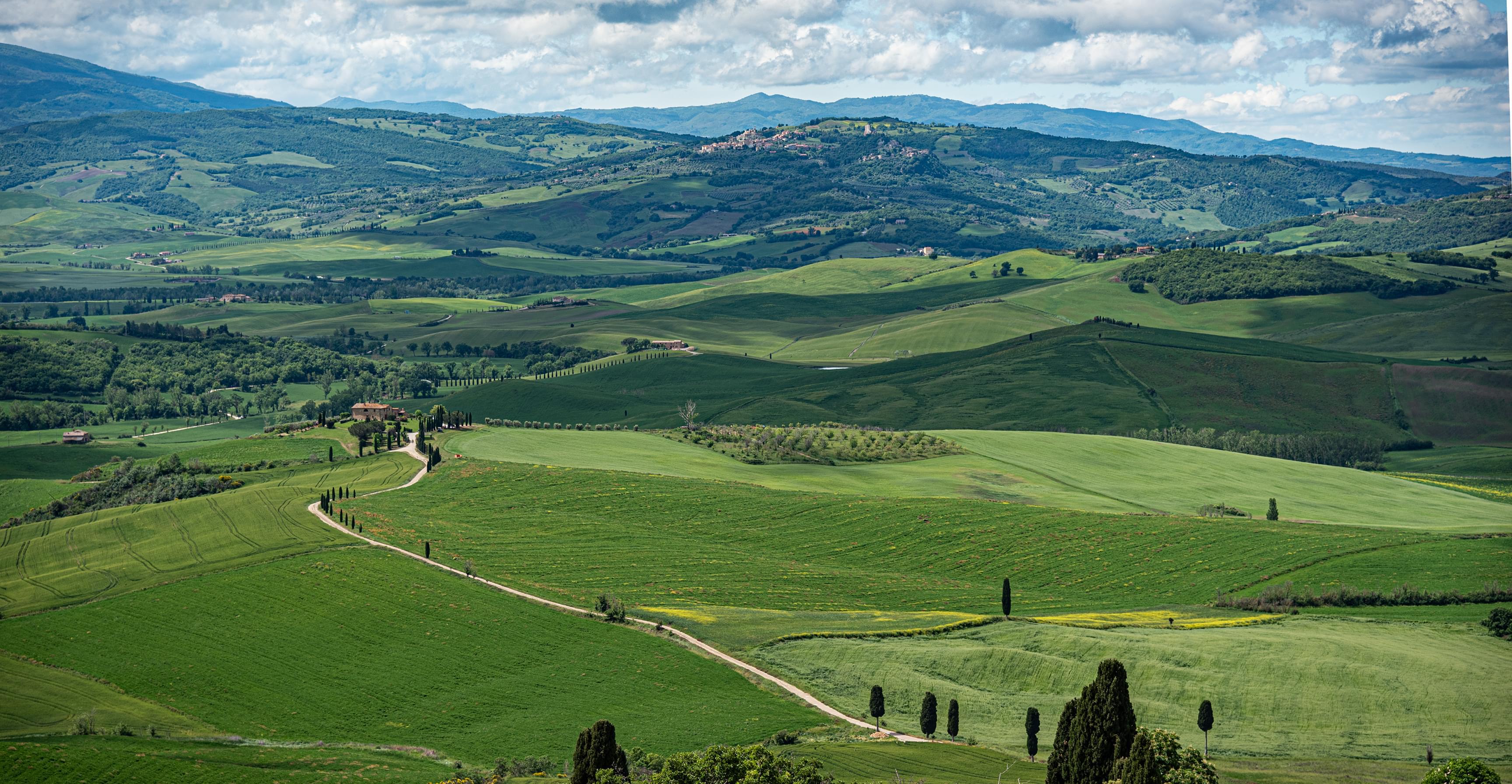
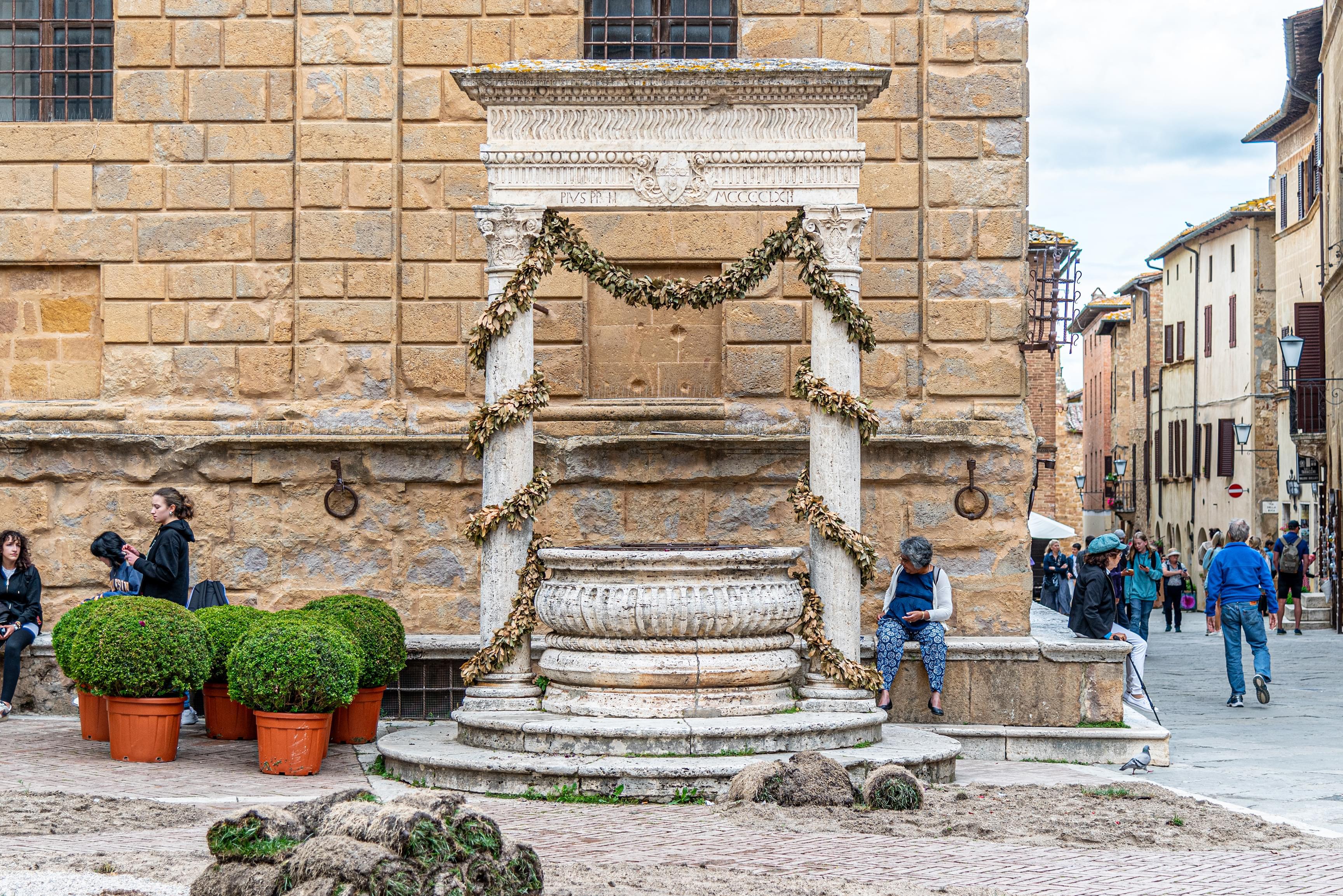
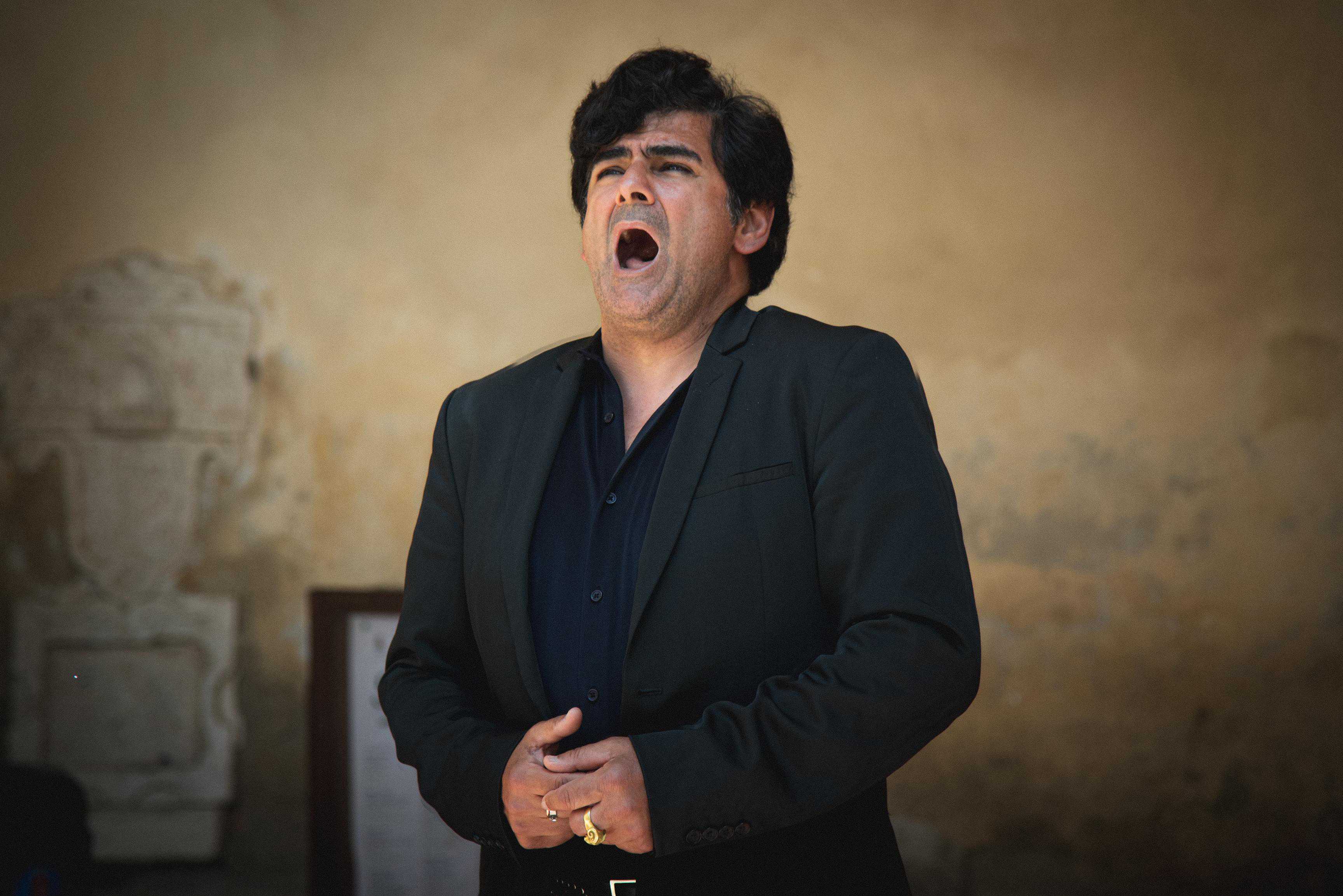
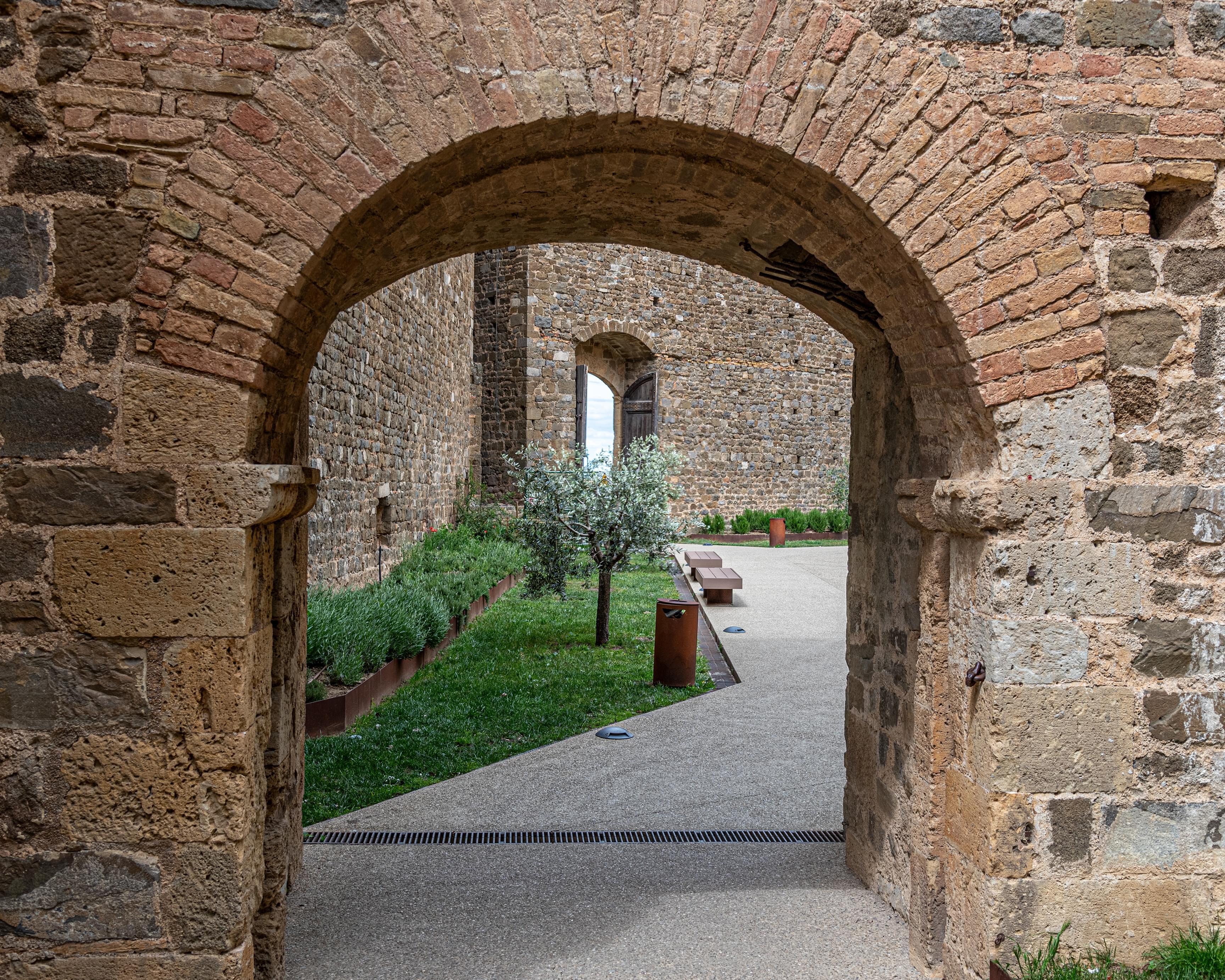
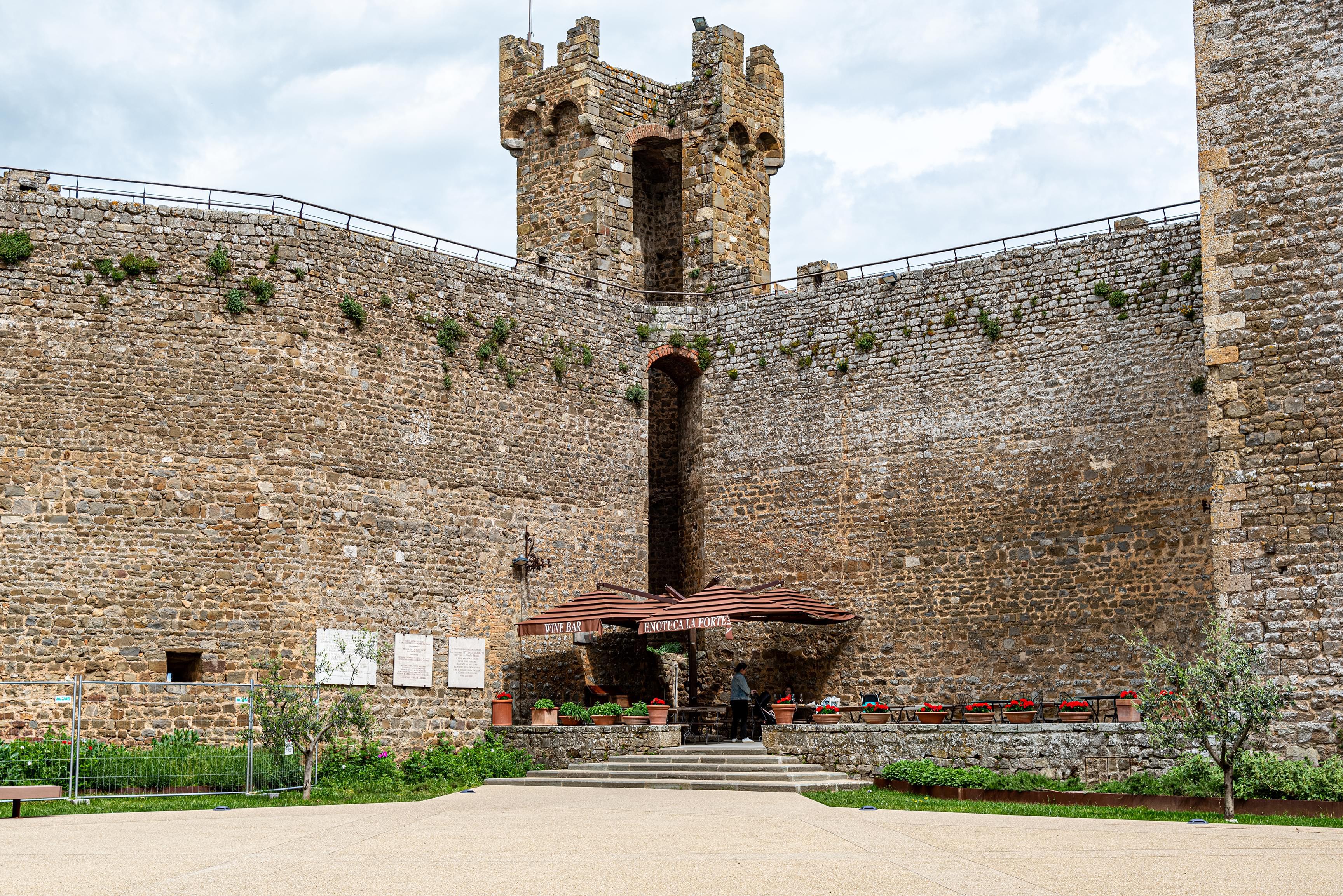
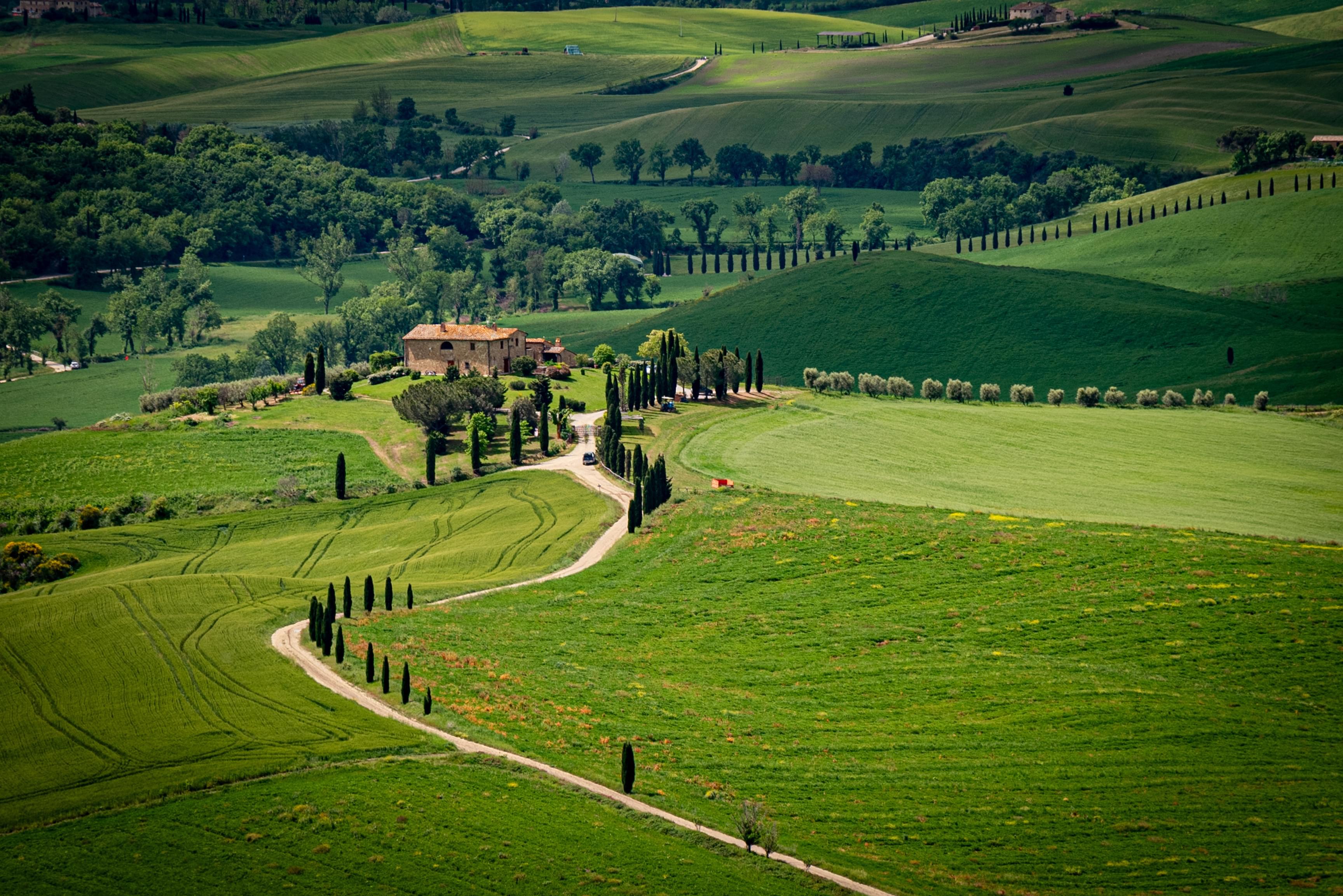
On our final day based in Montepulciano, we ventured north. Our first stop was the capital of Tuscany, Siena. Another historical UNESCO World Heritage site, Siena, was a majorly influential city during the Italian Renaissance and a significant financial center. In fact, Siena was the home of the oldest bank in the world. We arrived around noon and spent a few hours exploring local sights and architecture. We had lunch at Piazza del Campo and toured Siena Cathedral before driving to San Gimignano. Like many Tuscany towns, San Gimignano is a UNESCO World Heritage site. It is known as the Town of Fine Towers because feuding families in the Middle Ages competed by building very tall towers. It was lightly drizzling this afternoon, but it didn't stop us from walking through Piazza della Cisterna and getting gelato at Gelateria Dondoli, which makes some of the best gelato in Italy. After a long day of driving, we returned to our villa, where we made a home-cooked meal and rested our legs after many days of walking.
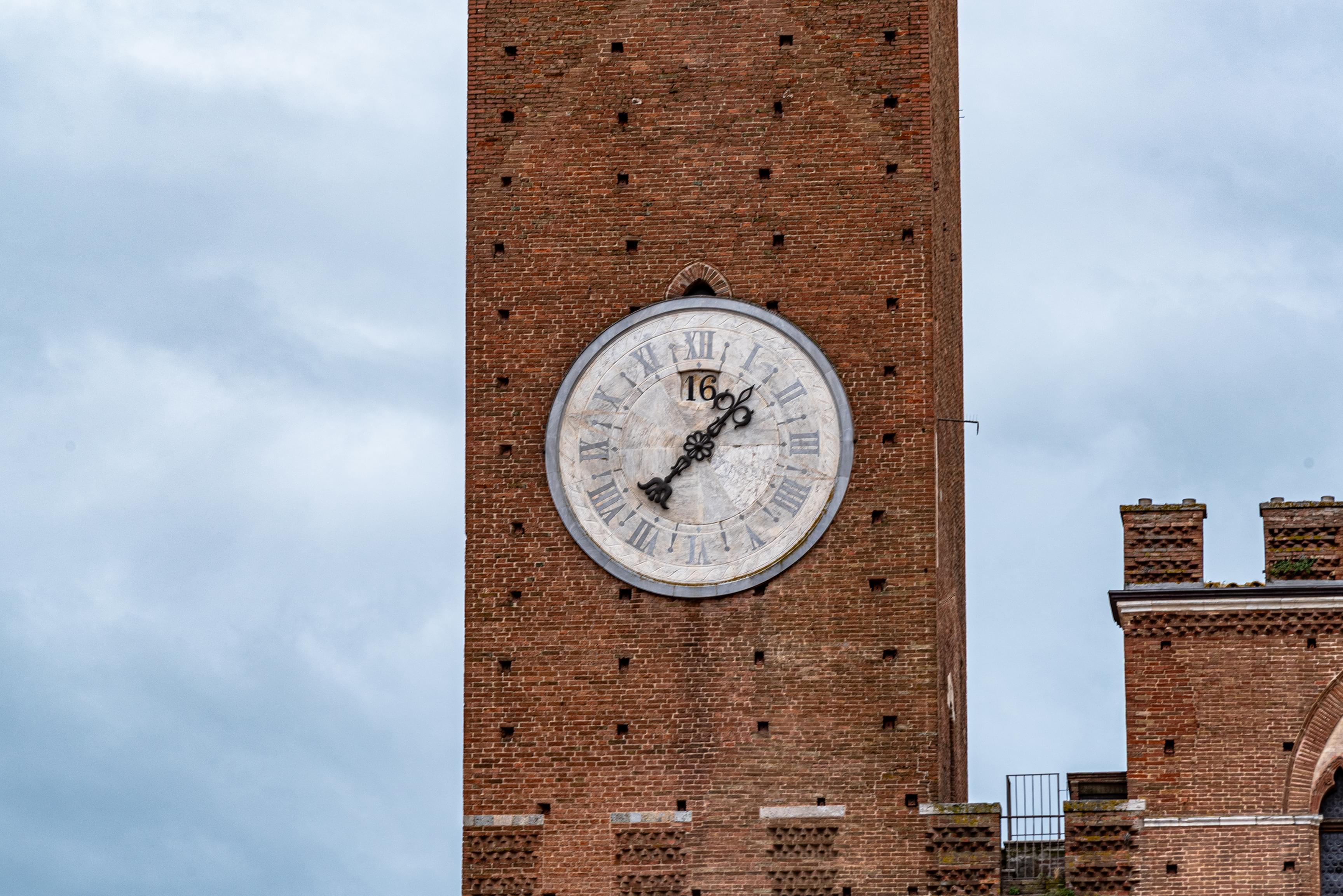
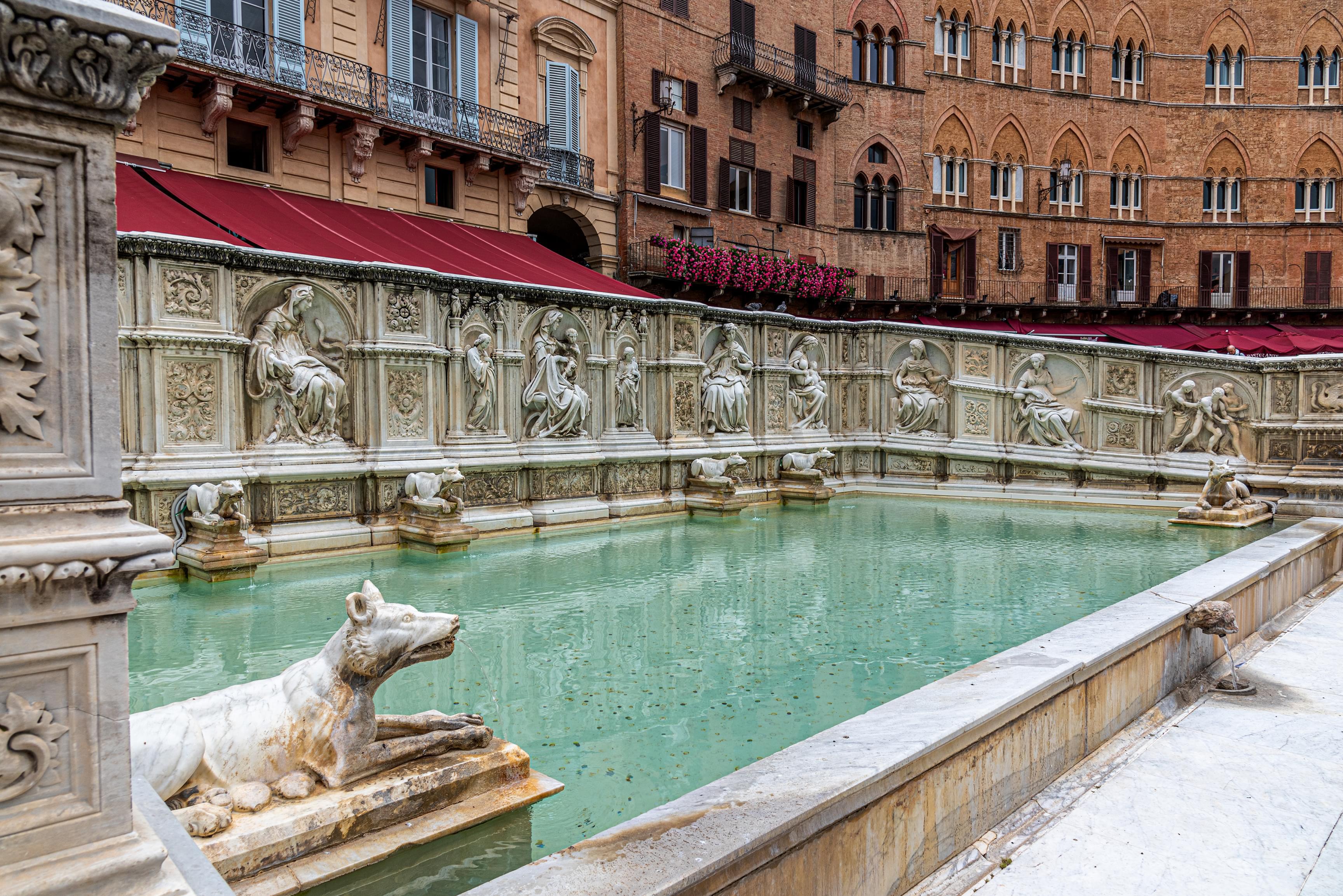
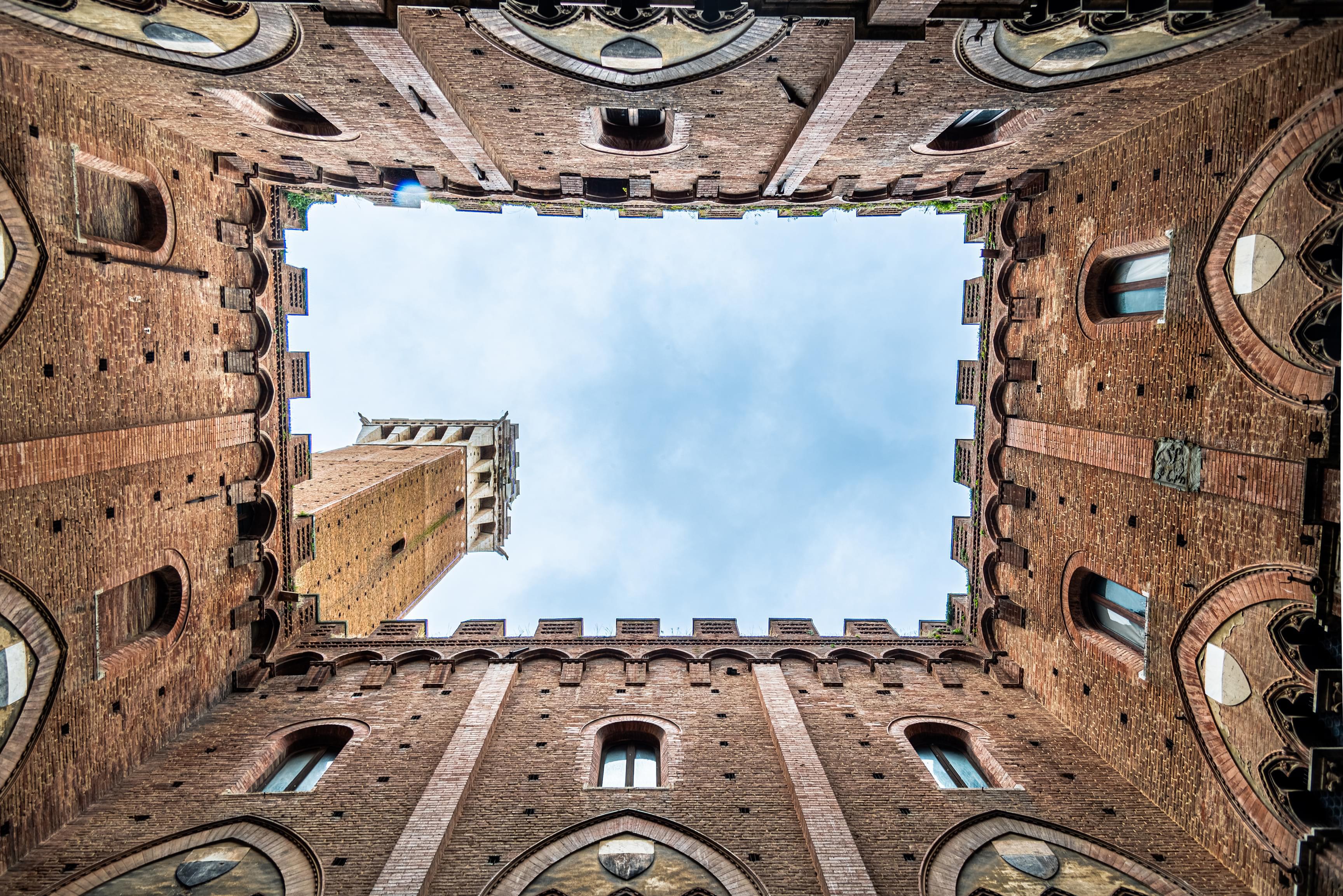
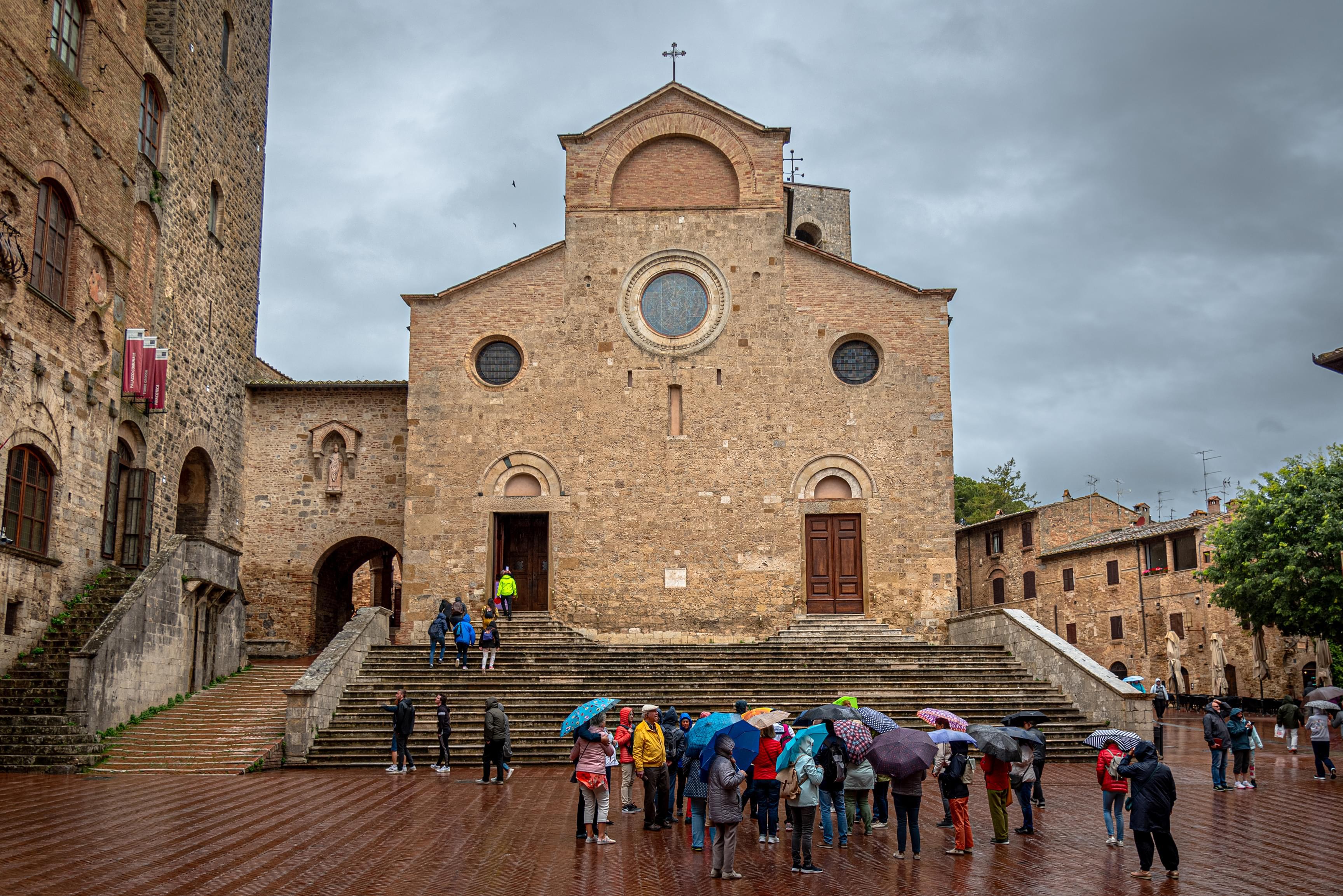
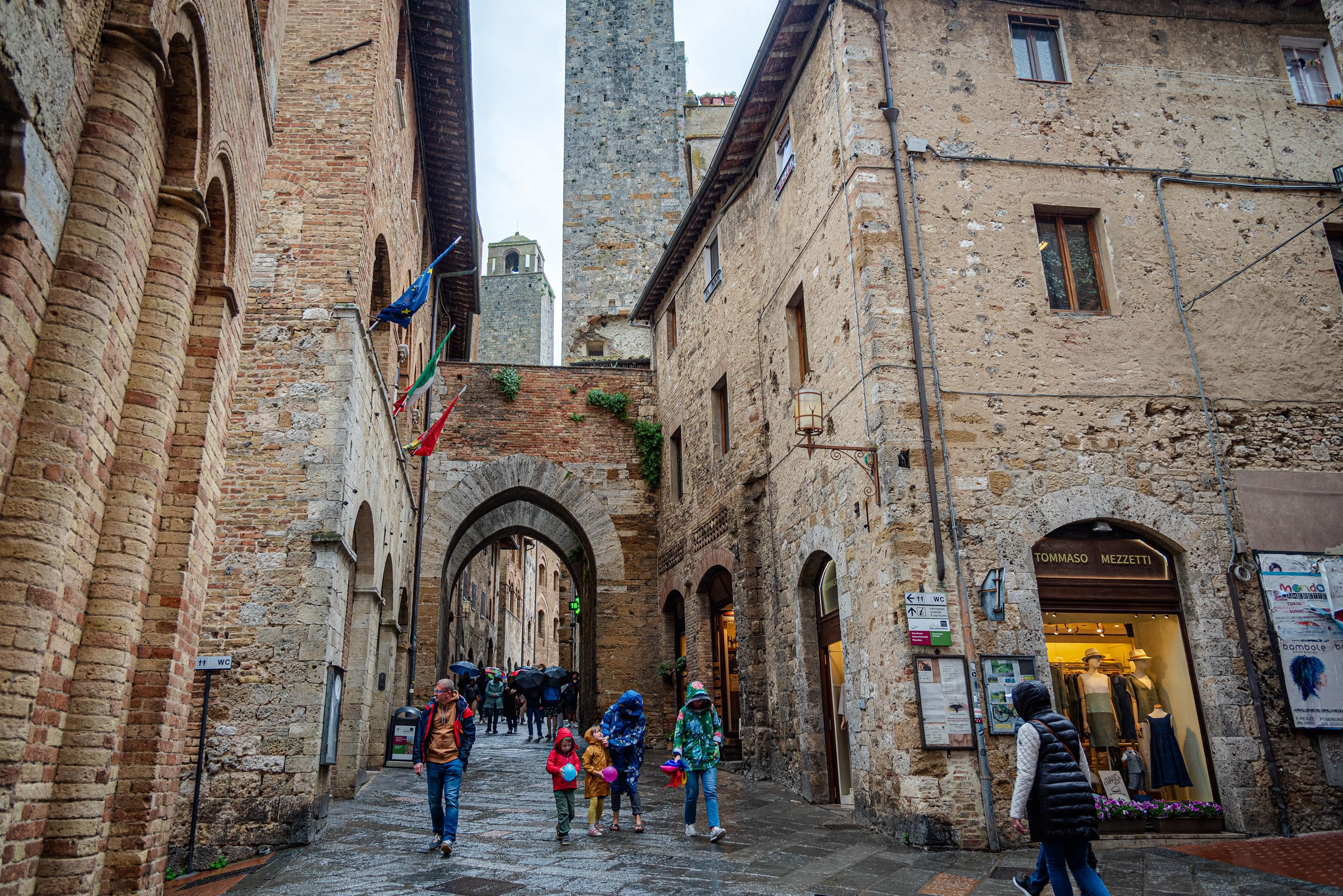
Firenze (Florence)
After three days in the Tuscan country, it was time to pack up and head to our next stop, Florence. But first, we had a stop to make at Antinori nel Chianti Classico, in Bargino. What makes Antinori incredible is their significant presence in Italian winemaking, which can be traced back to 1385 and has been in the family ever since. They played an essential role in the development of wines called Super-Tuscans. These wines don't adhere to DOC or DOCG regulations but are considered extremely high quality. The vineyard itself was stunning, with incredible architecture throughout. The buildings were built to blend right into the Tuscan landscape. We were given a tour of the facilities and a tasting of four varieties of wines they produced, and then it was off to Florence to check into our apartment. That first evening in Florence, everyone relaxed before meeting up for dinner at Ristorante del Fagioli for some classic local food and gelato at Gelateria dei Neri, our clear-cut favorite of the trip.
We visited many of Florence's museums, churches, and piazzas the following three days. With such an extensive history and being the center of the Italian Renaissance, the city is a walking museum with historic art and sculpture in every building and piazza. Our first full day started with a visit to the Uffizi Gallery, one of the world's most substantial and famous museums for its art collection from the Italian Renaissance. After a quick panini at the famous All'Antico Vinaio, it was off to the other side of the Arno River, stopping at Basilica di Santo Spirito, the Pitti Palace, and Boboli Gardens. The Pitti Palace became the primary residence of the Medici family in 1549. Today, it is a gallery featuring more art and sculptures from the Italian Renaissance. After touring the gallery and walking through the gardens, it was almost time for our dinner at Osteria Antica Mescita San Niccolò, followed by more gelato, this time at La Carraia in Santa Croce.
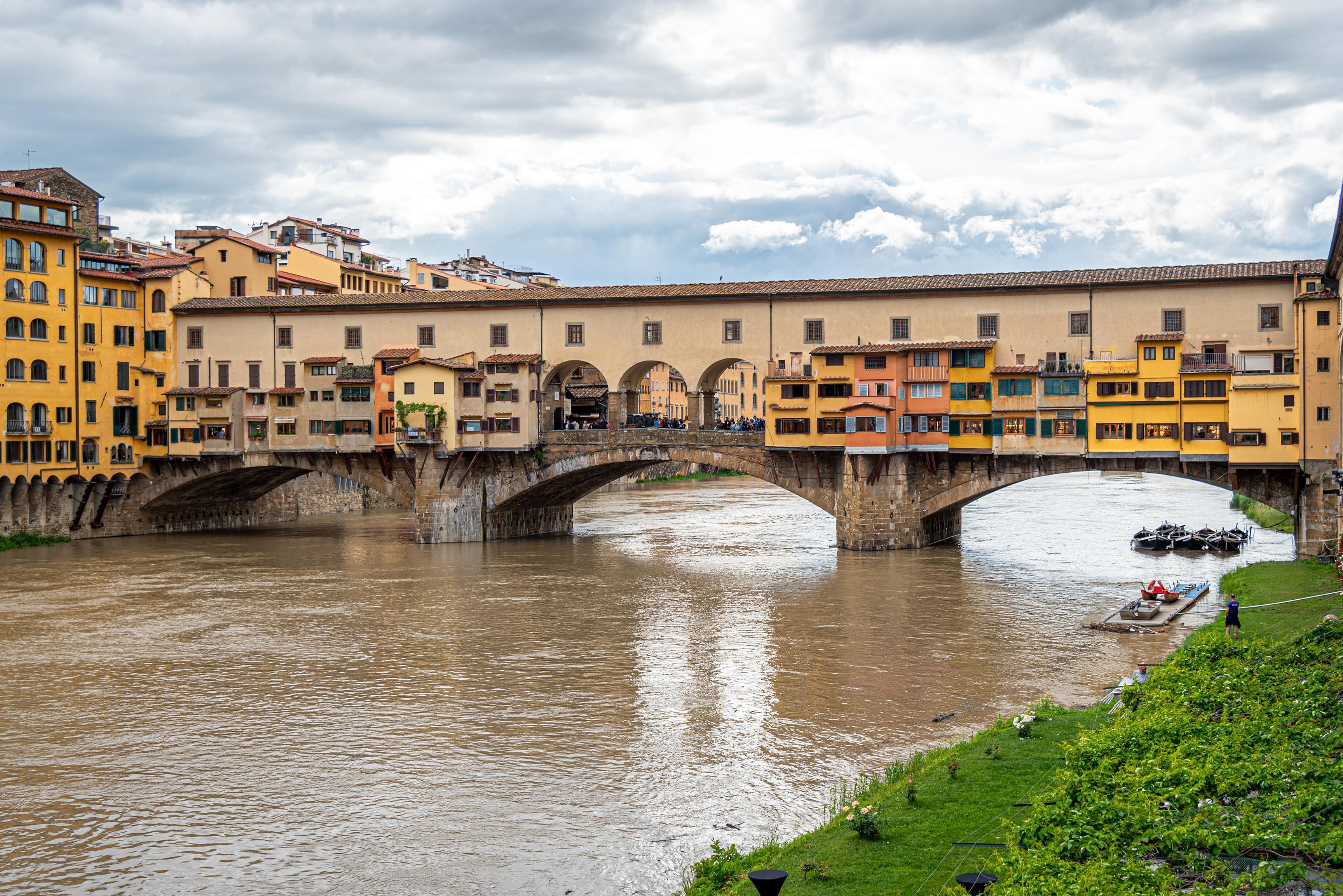
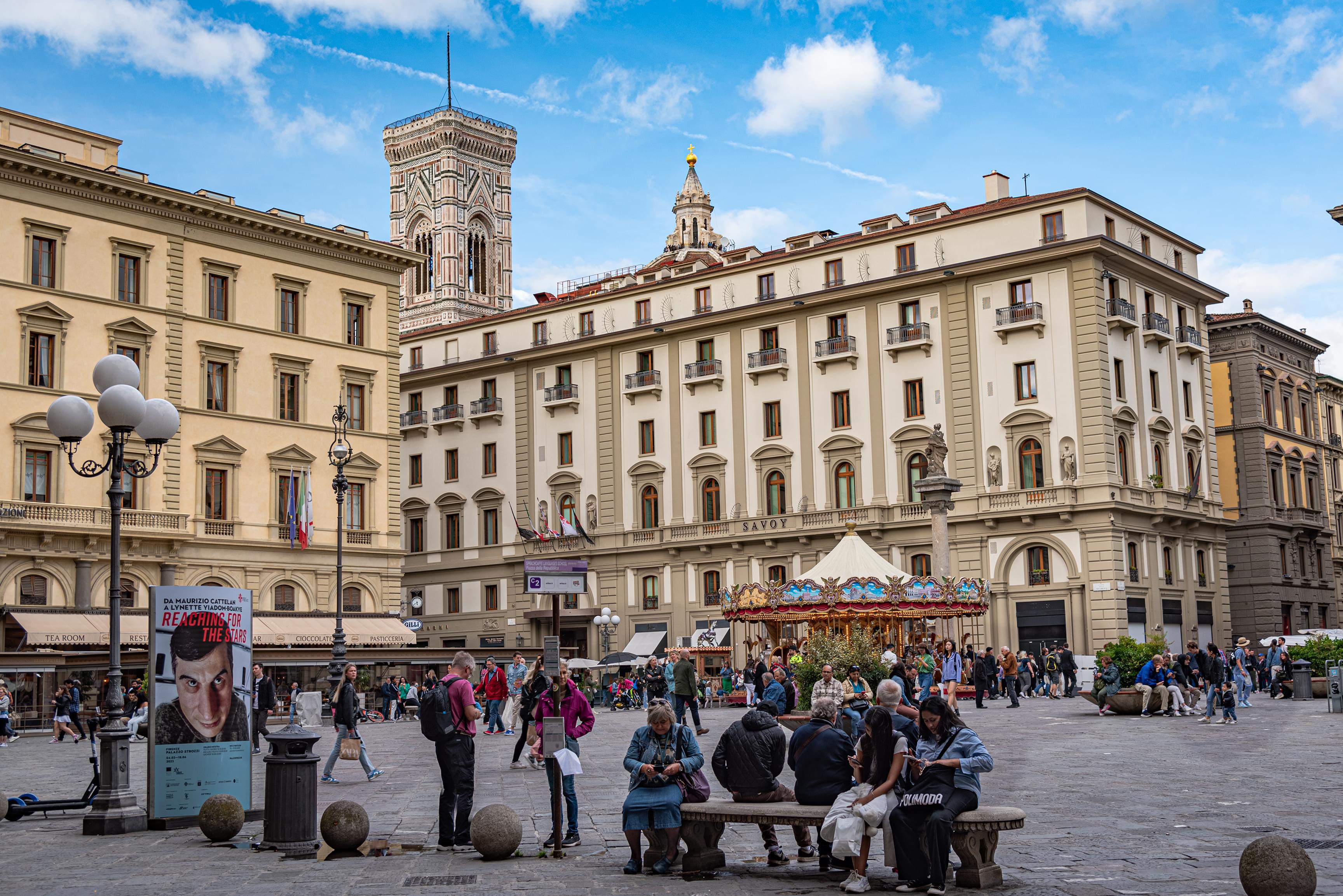
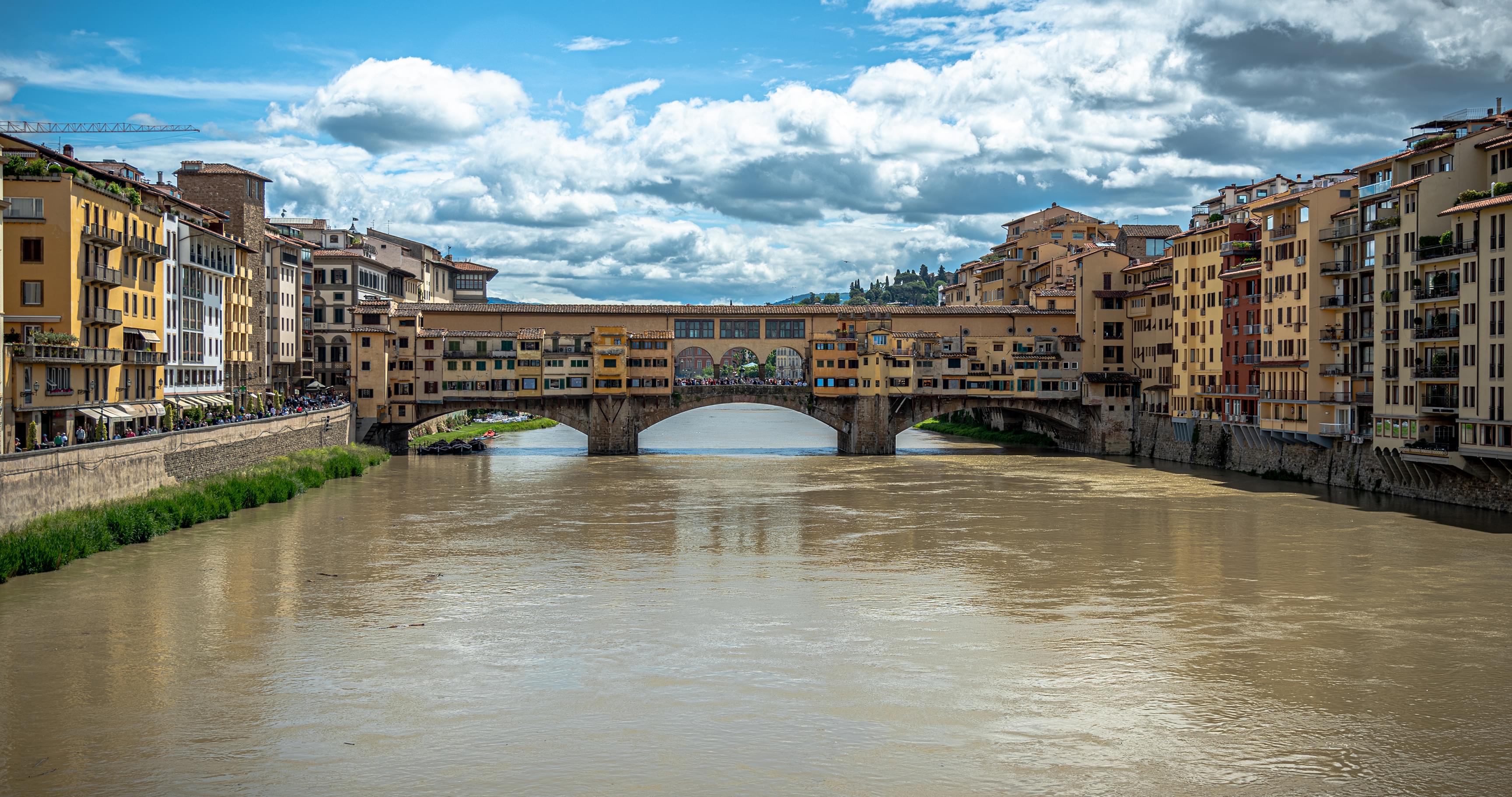
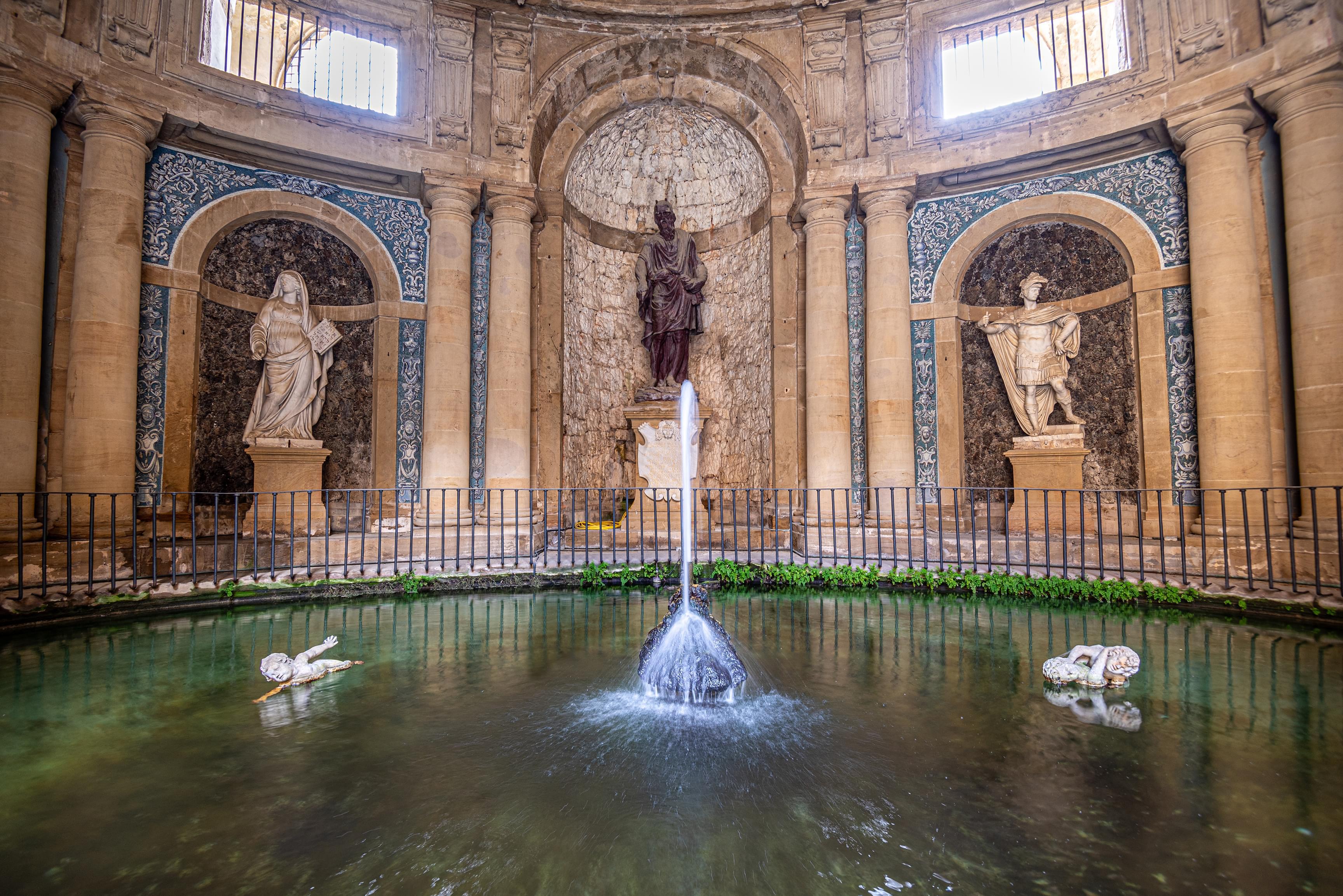
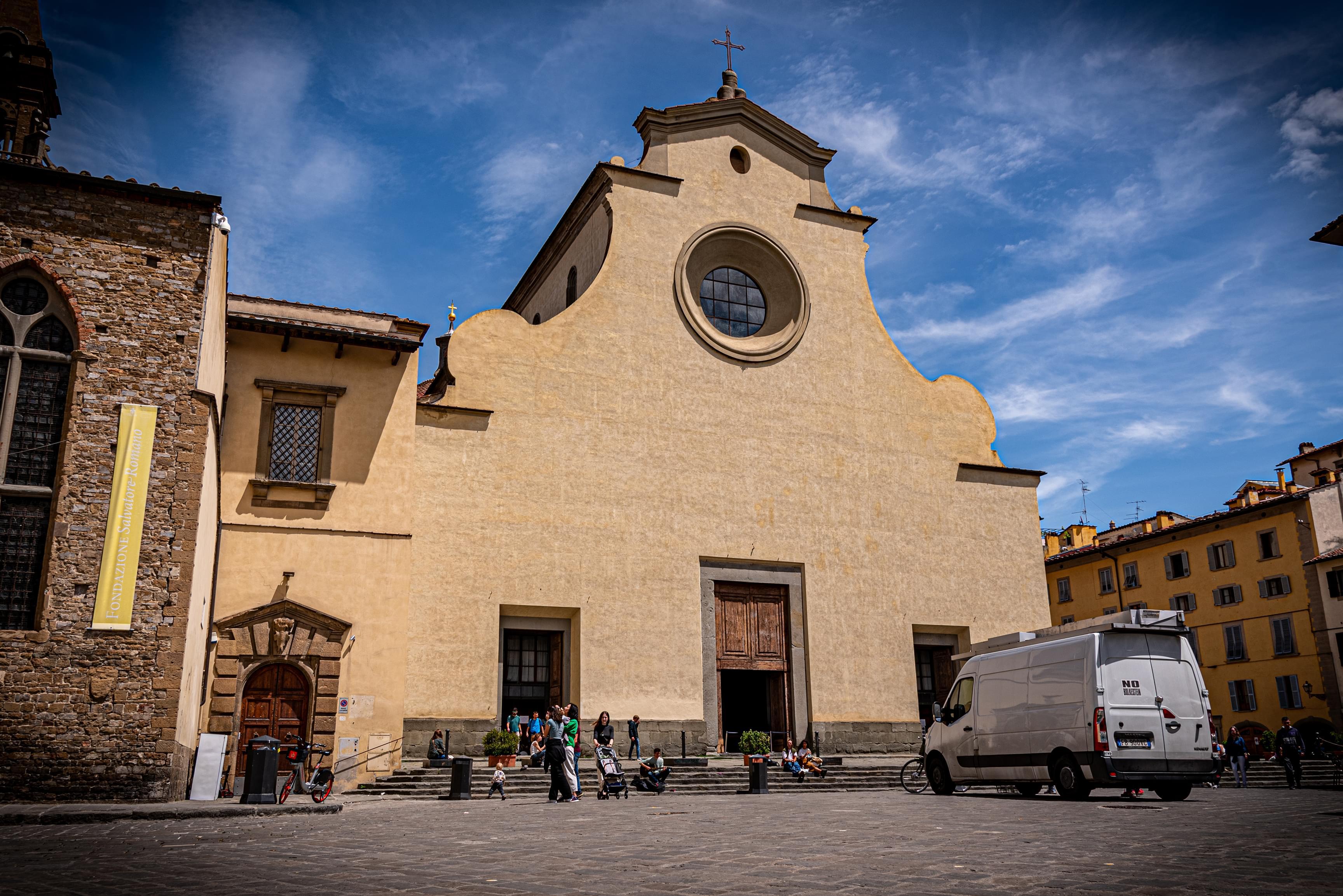
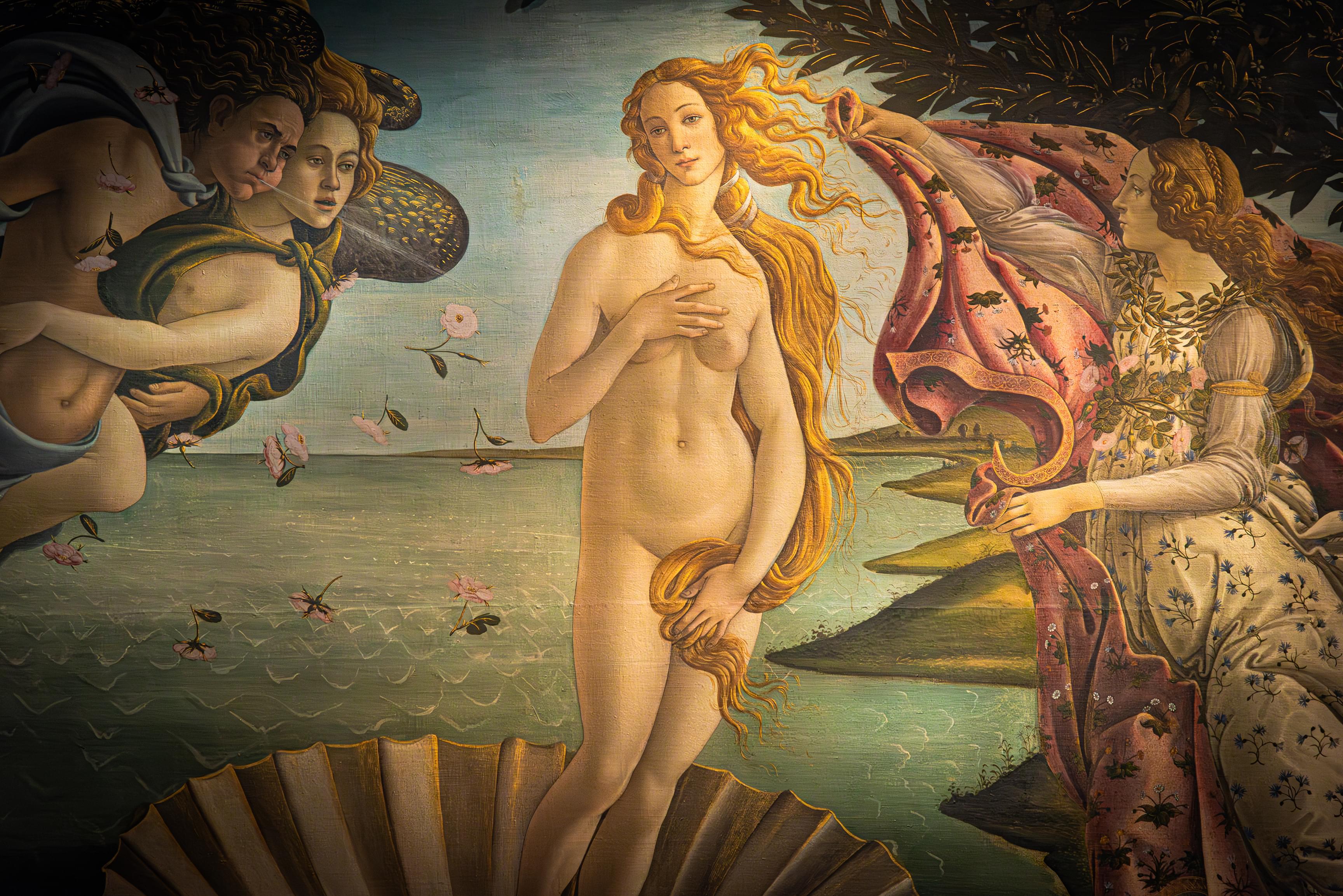
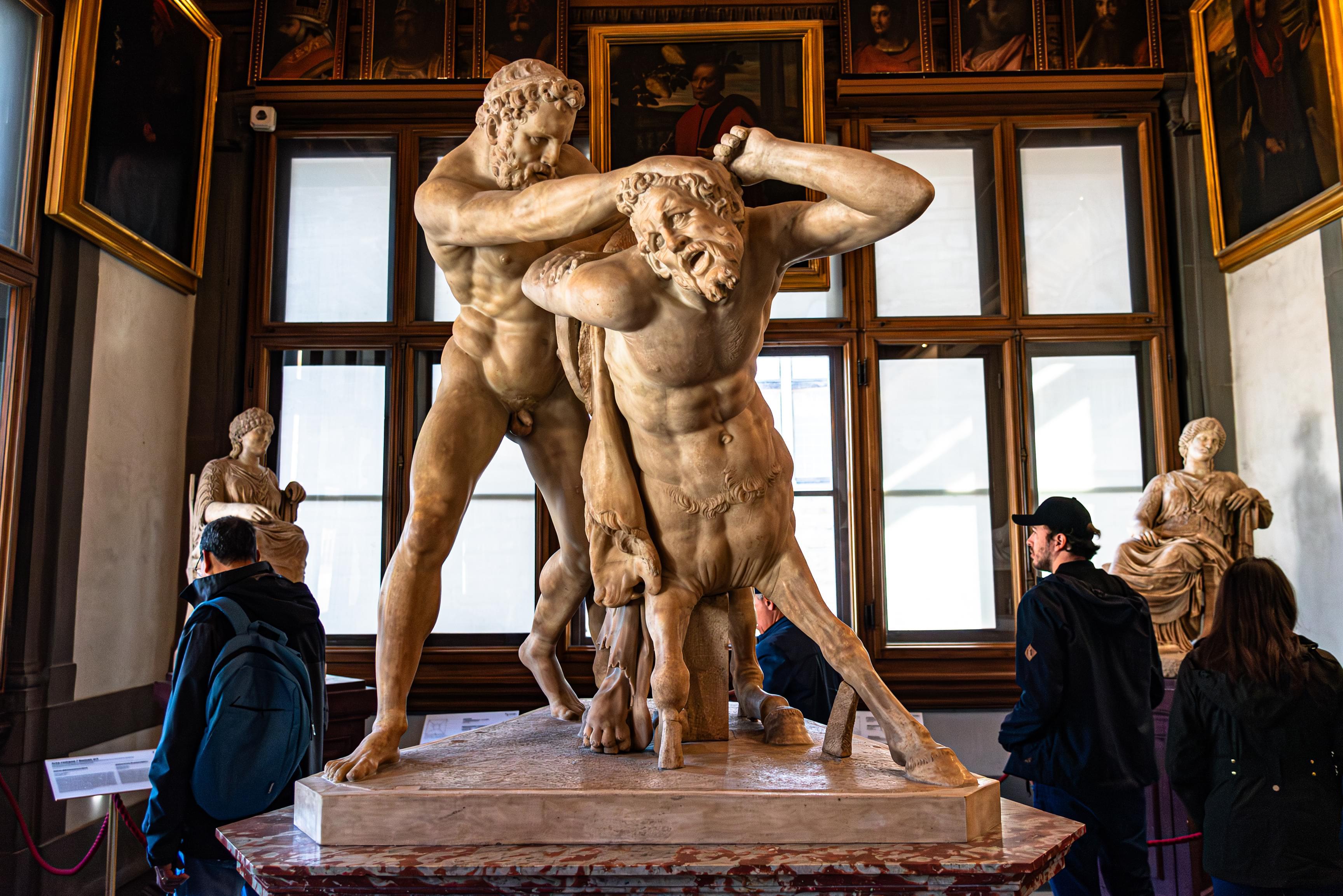
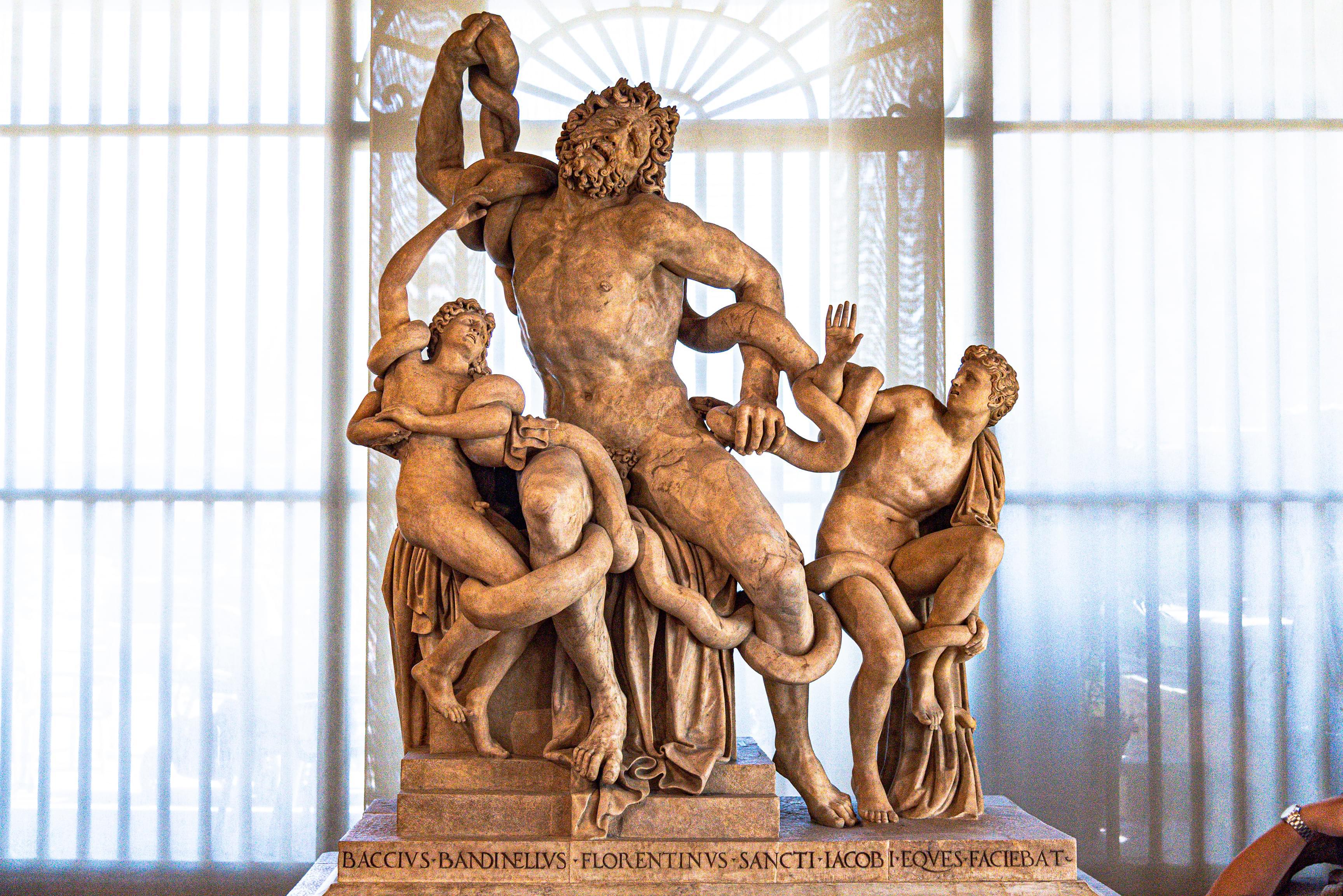
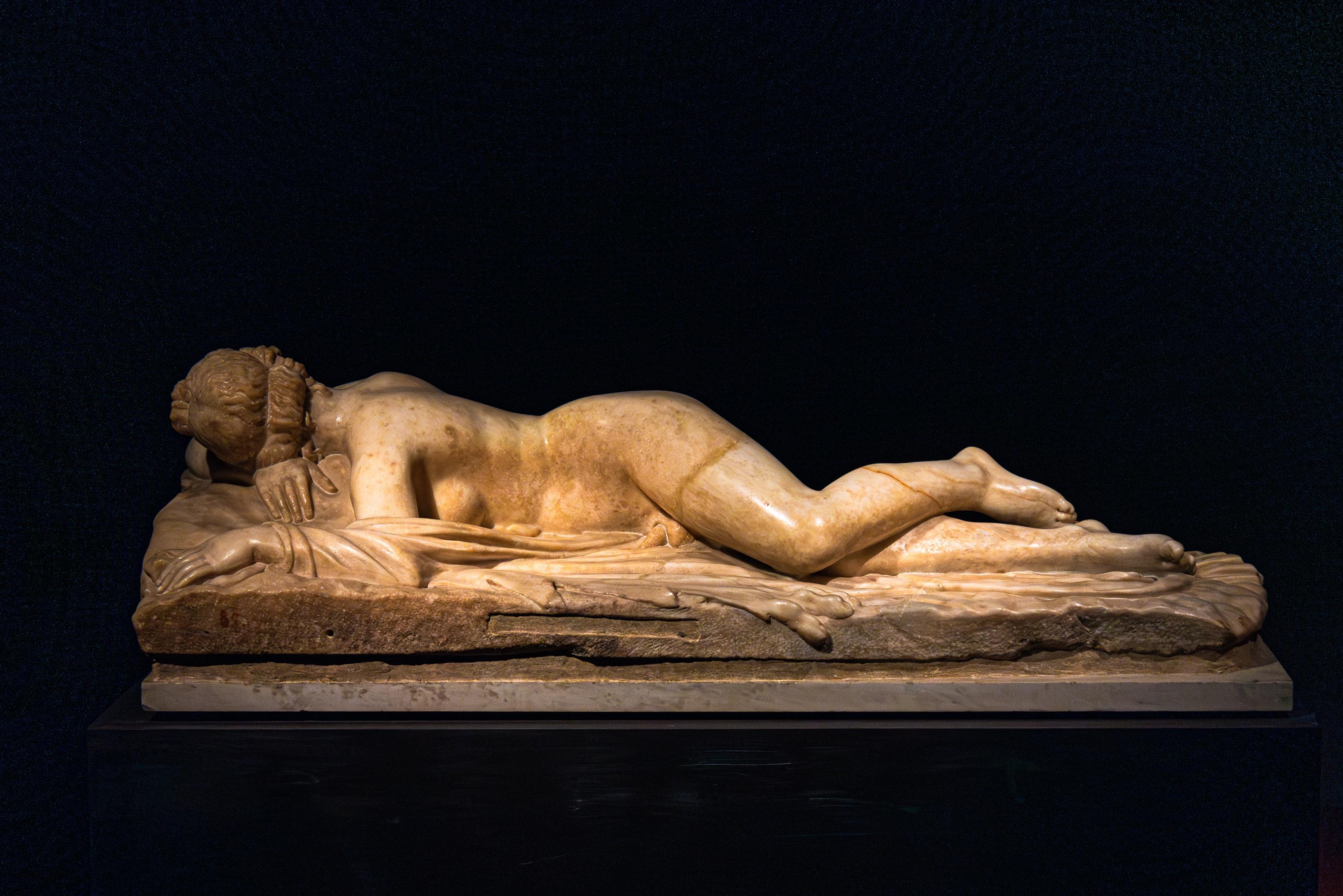
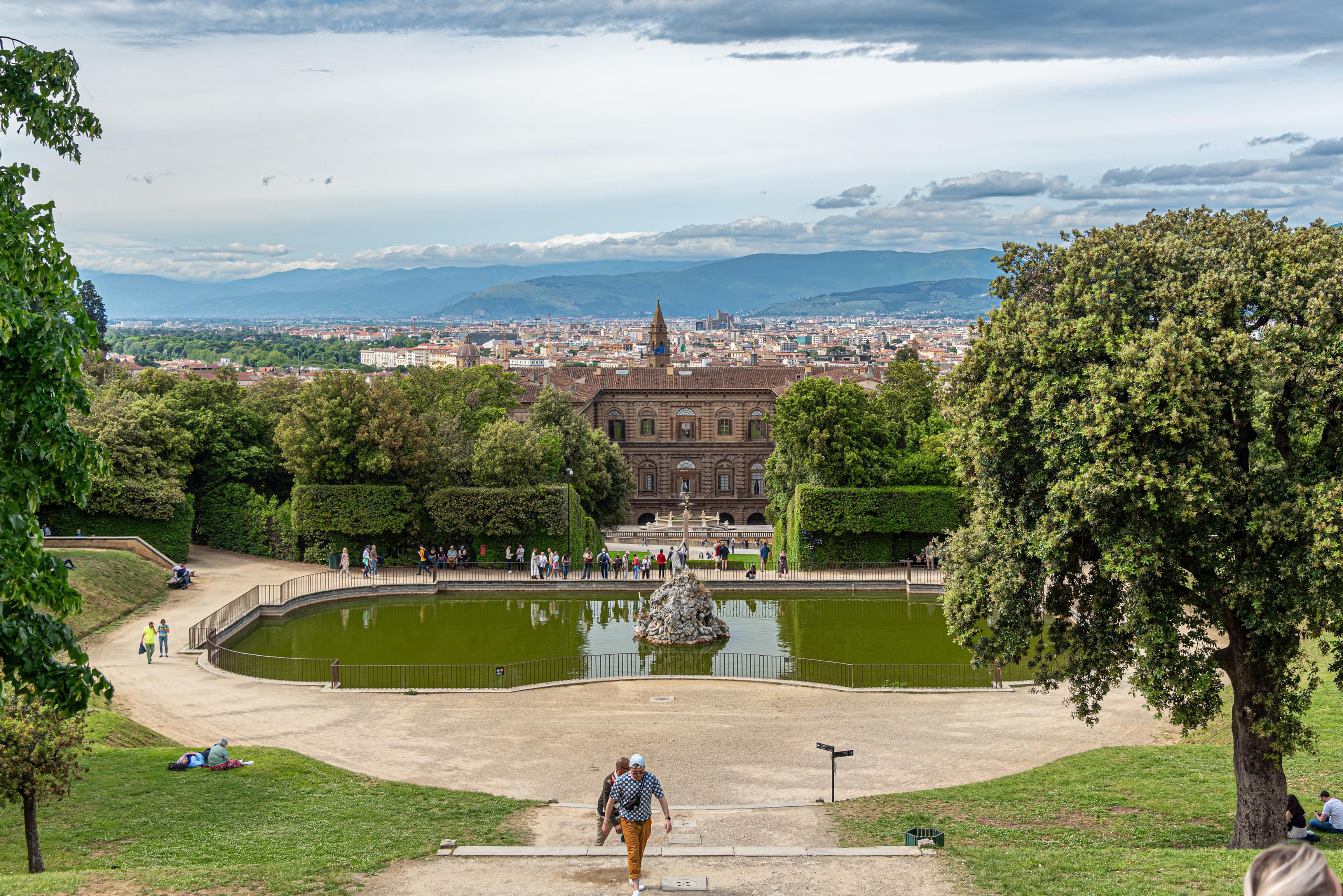
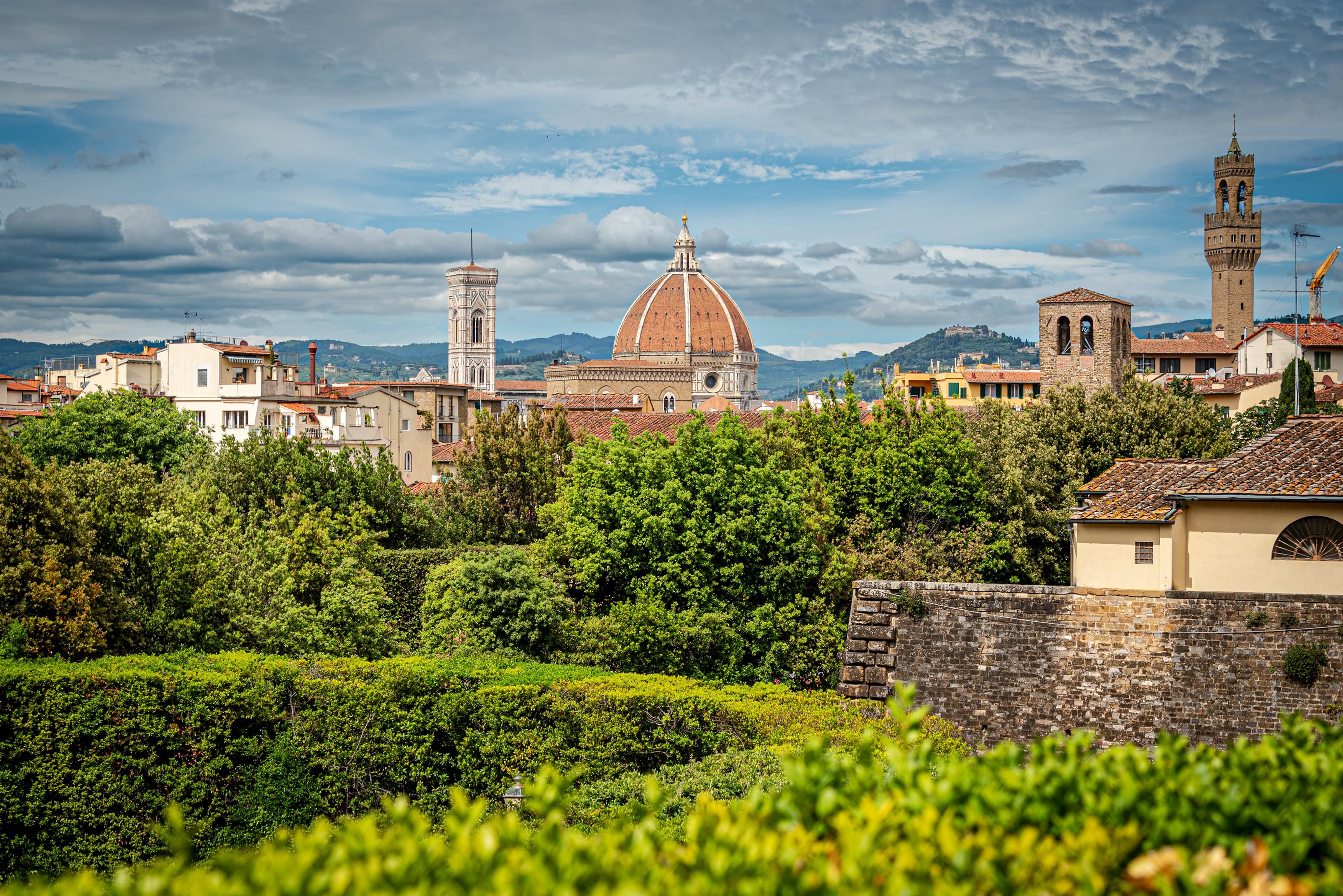
After a quick espresso at Bar Perseo the following morning, we headed to the Accademia Gallery for our reserved time slot at 9:00am. The line for no reservations had already wrapped around the corner, so having a pre-purchased entry time is vital. The Accademia, of course, is where Michelangelo's David is, along with many of his other sculptures and additional Renaissance paintings. It was over to the Mercato Centrale for some delicious sandwiches for lunch. I had the Panini con Porchetta, but they offer a selection of other sandwiches and pasta at a reasonable price. Nearby was a gelato place on our list, My Sugar Gelato Artigianale, so we each got a pair of flavors. They have a fantastic selection of flavors, and the ones we had were delicious, definitely some of the best in Florence. Next, we continue our walk through this part of Florence with stops at Basilica di San Lorenzo, the burial place of the Medici family, Basilica of Santa Maria Novella, which is famous for its frescos as well as work by Brunelleschi and Donatello. As the afternoon drew to a close, it was time to head back to refresh before walking over to Caffè Gilli on the Piazza della Repubblica for our evening aperitif. Our evening dinner was at Il Latini, a lovely local tavern serving authentic, good-quality Tuscan food. If you're looking for one of Florence's famous wine windows, they have one here, and you can enjoy a glass of wine while you wait for your table.
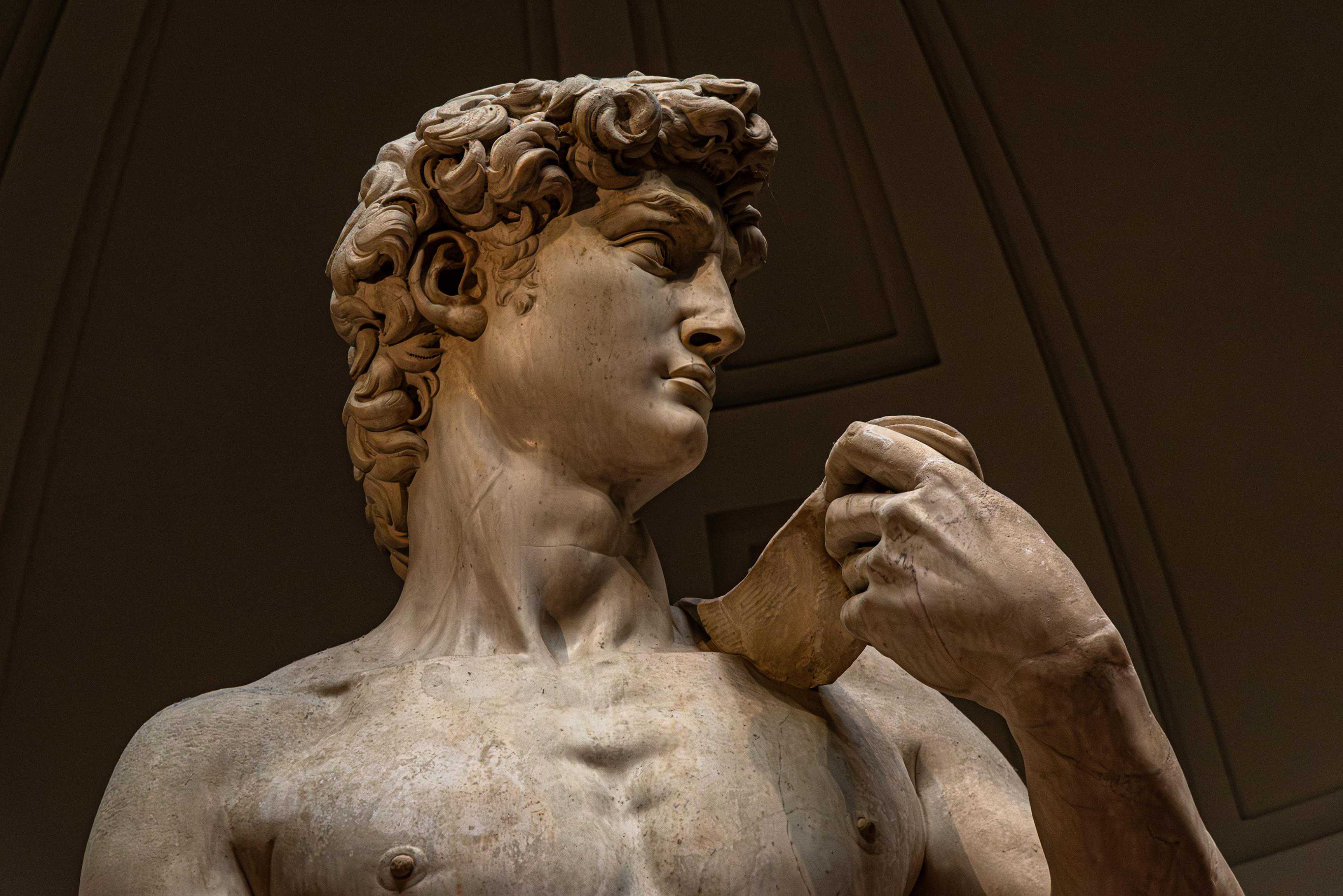
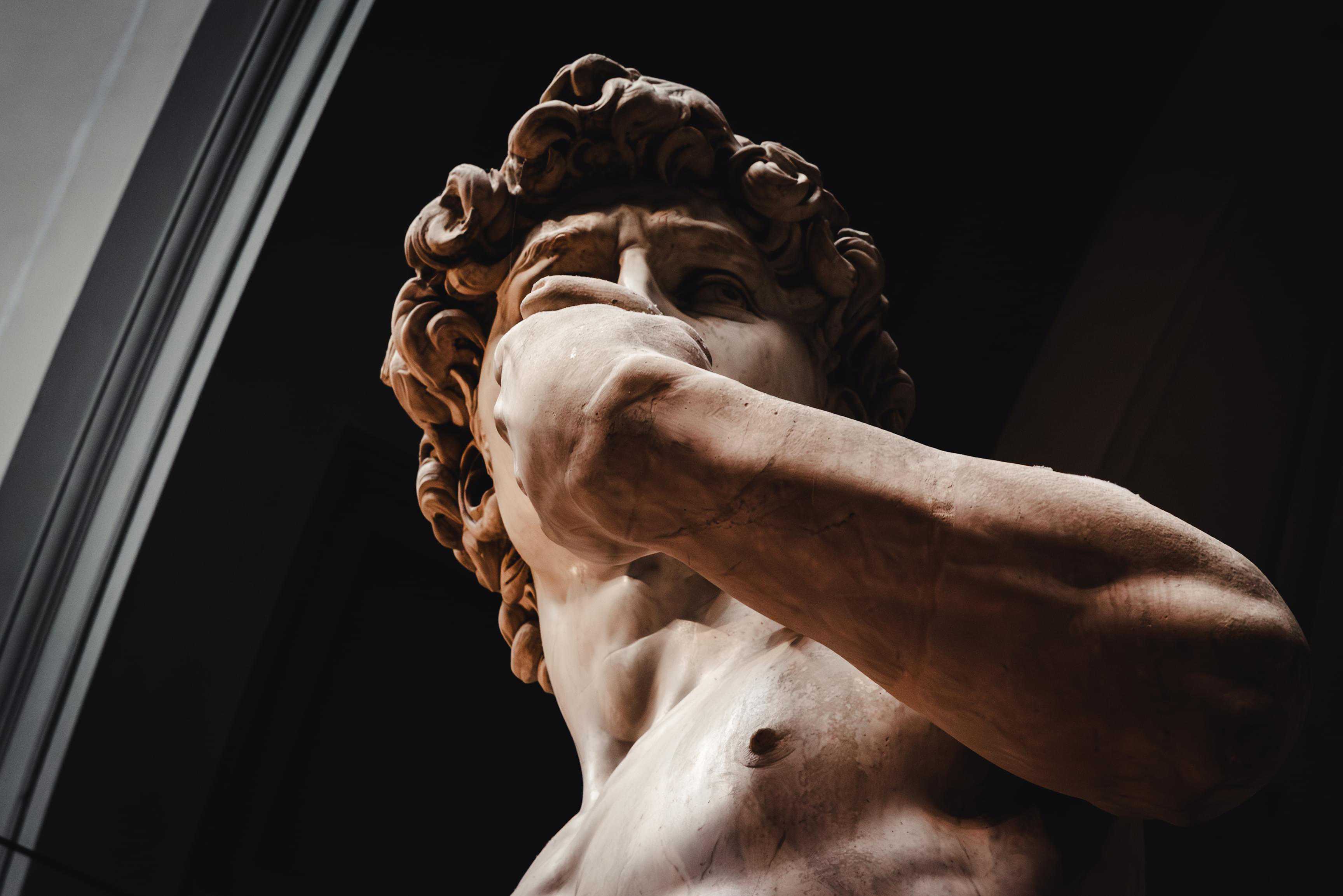
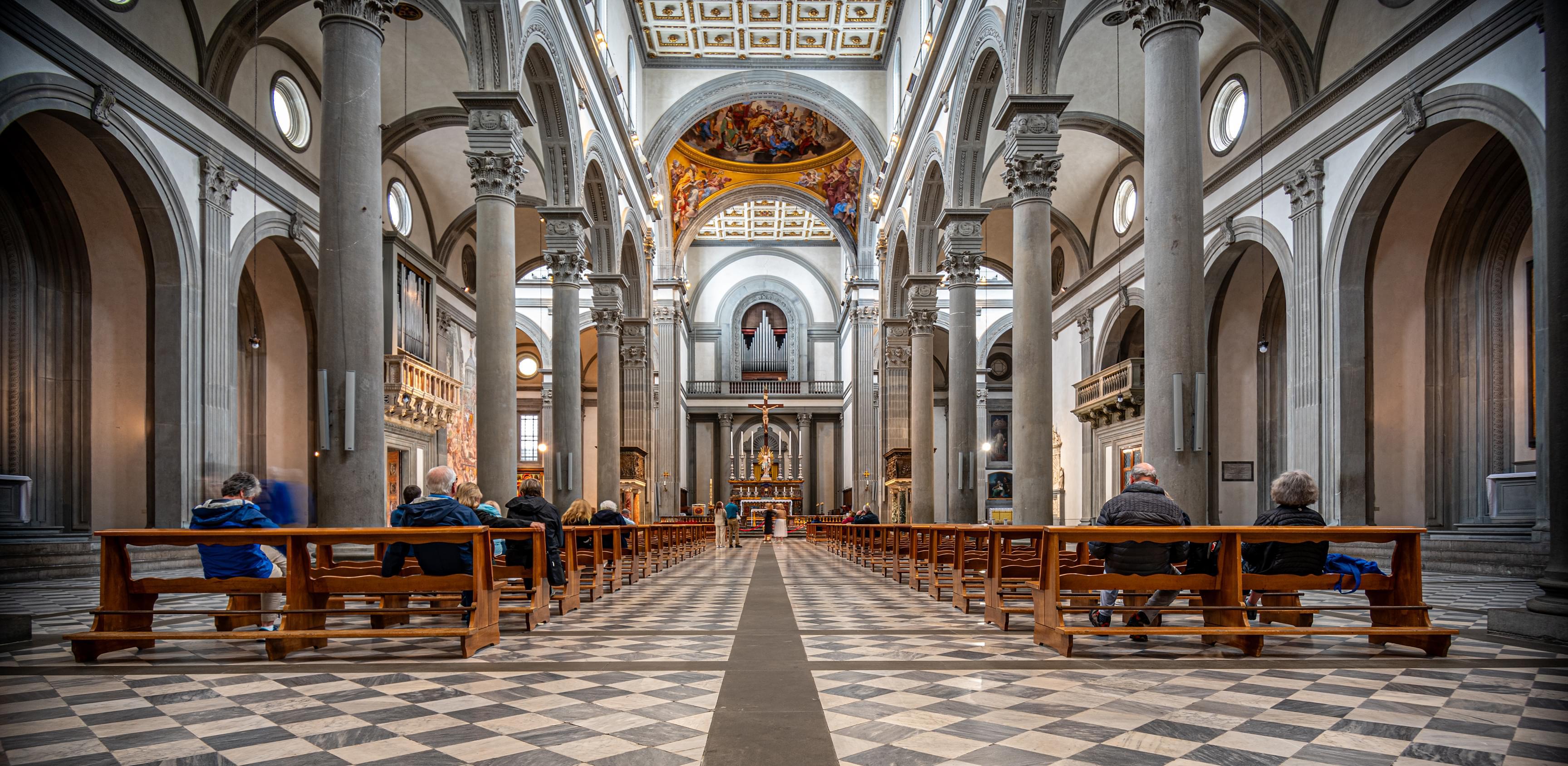
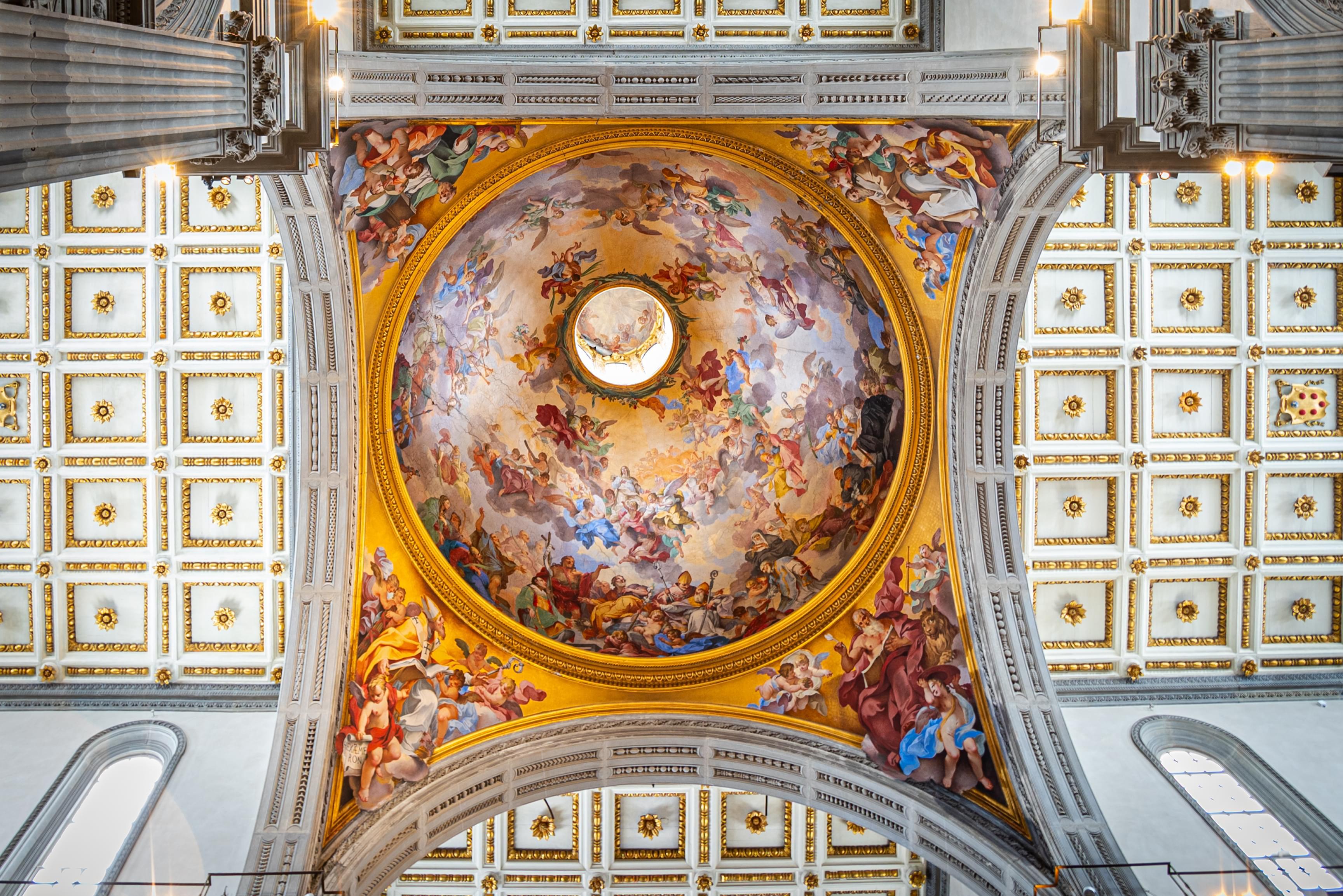
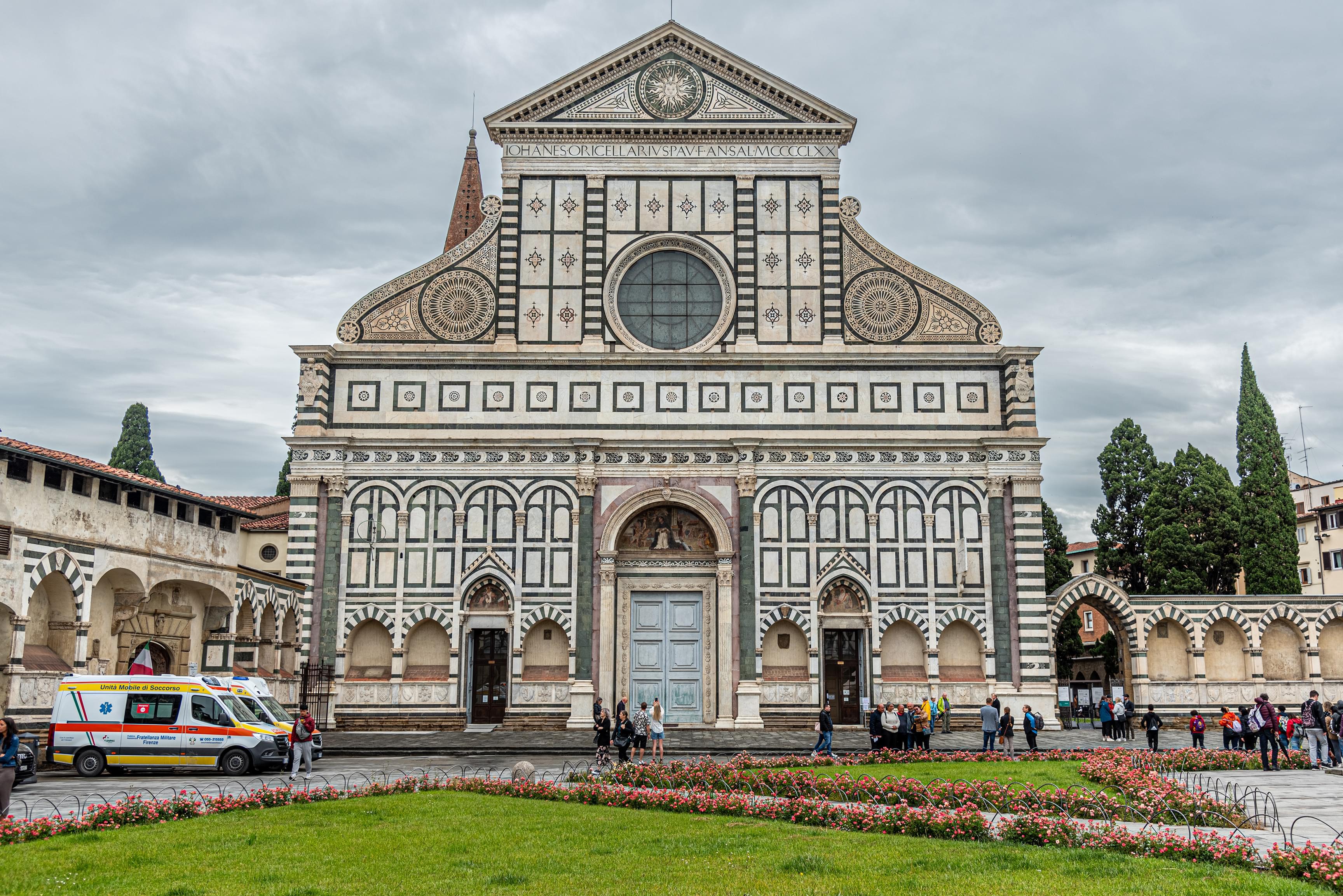
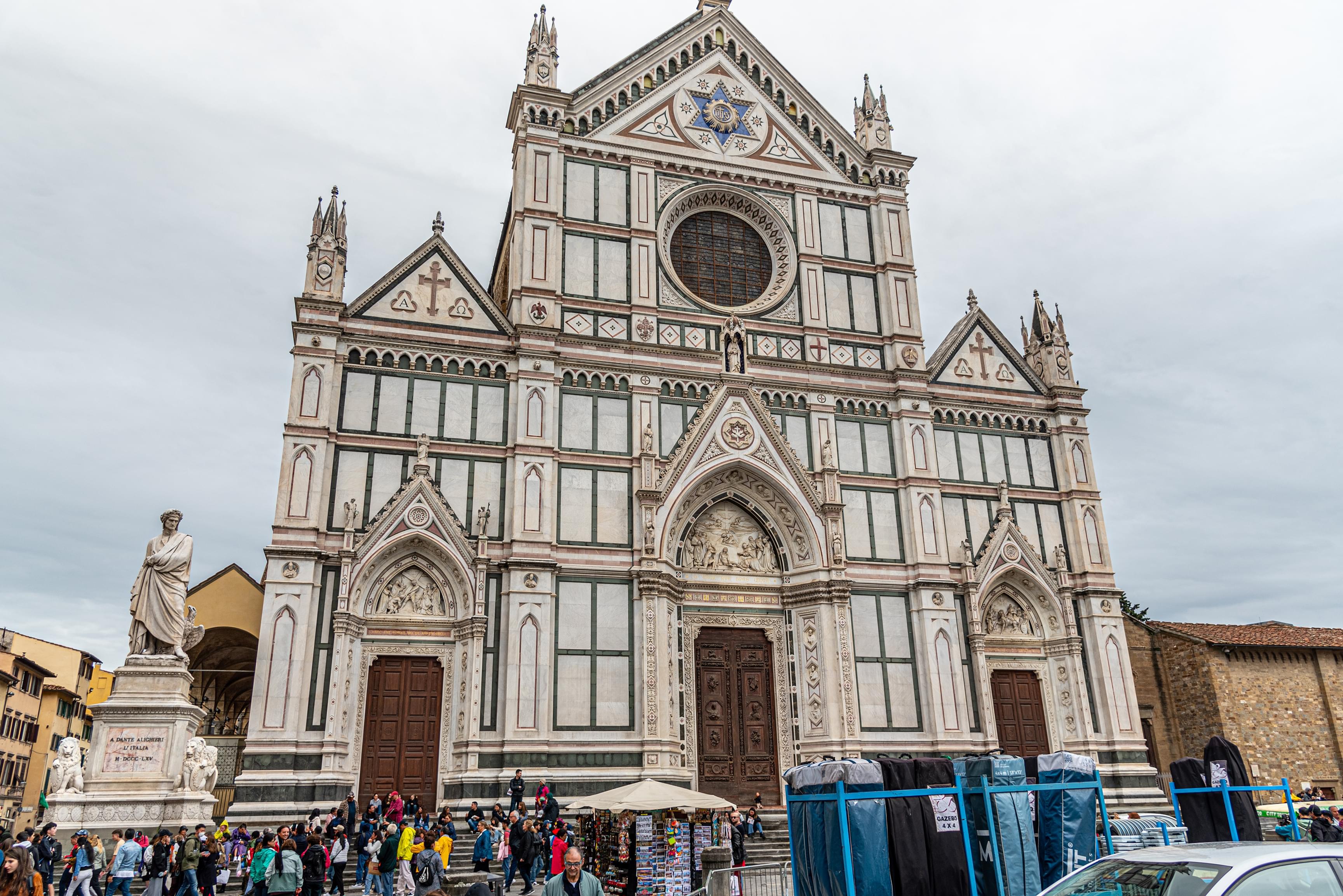
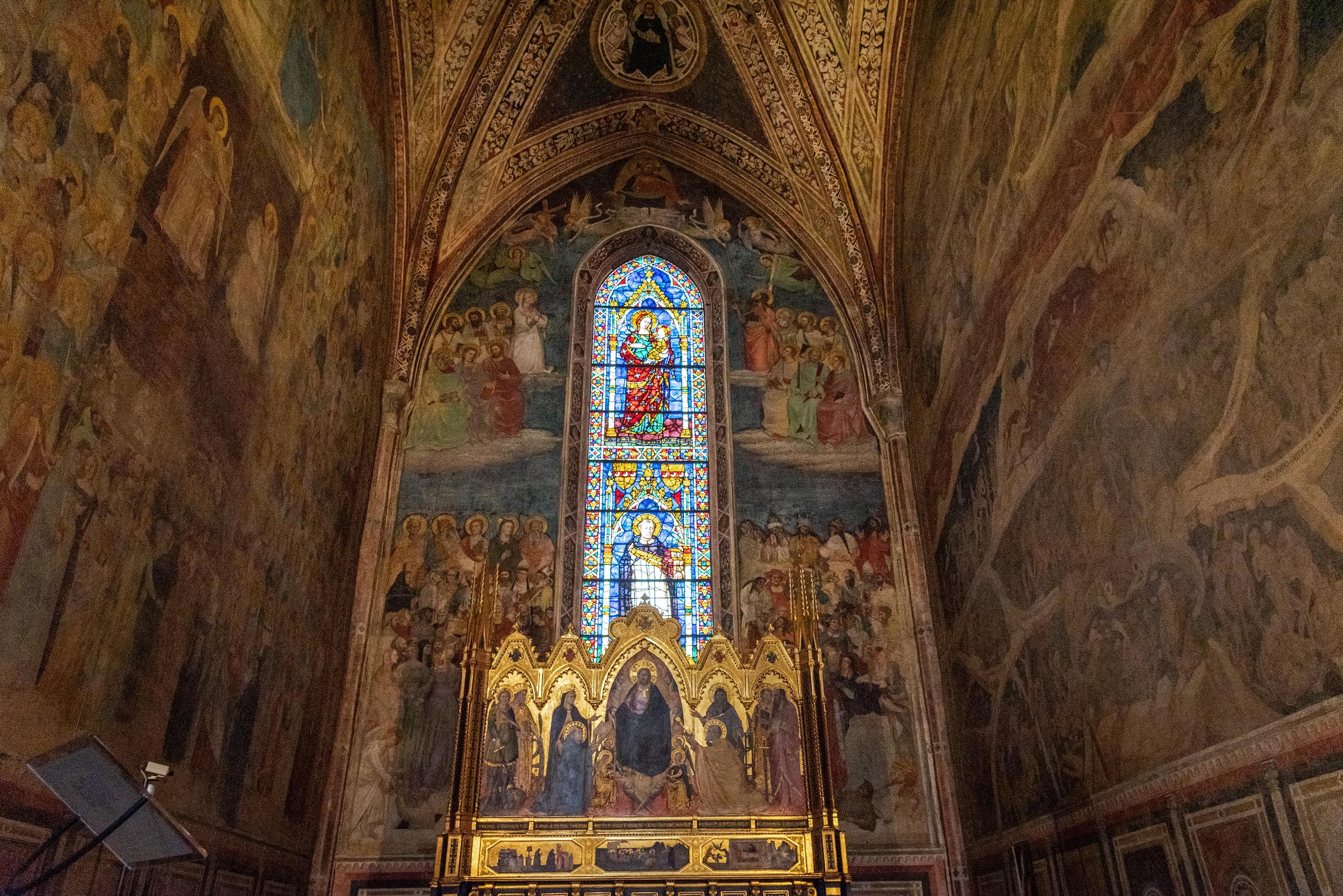
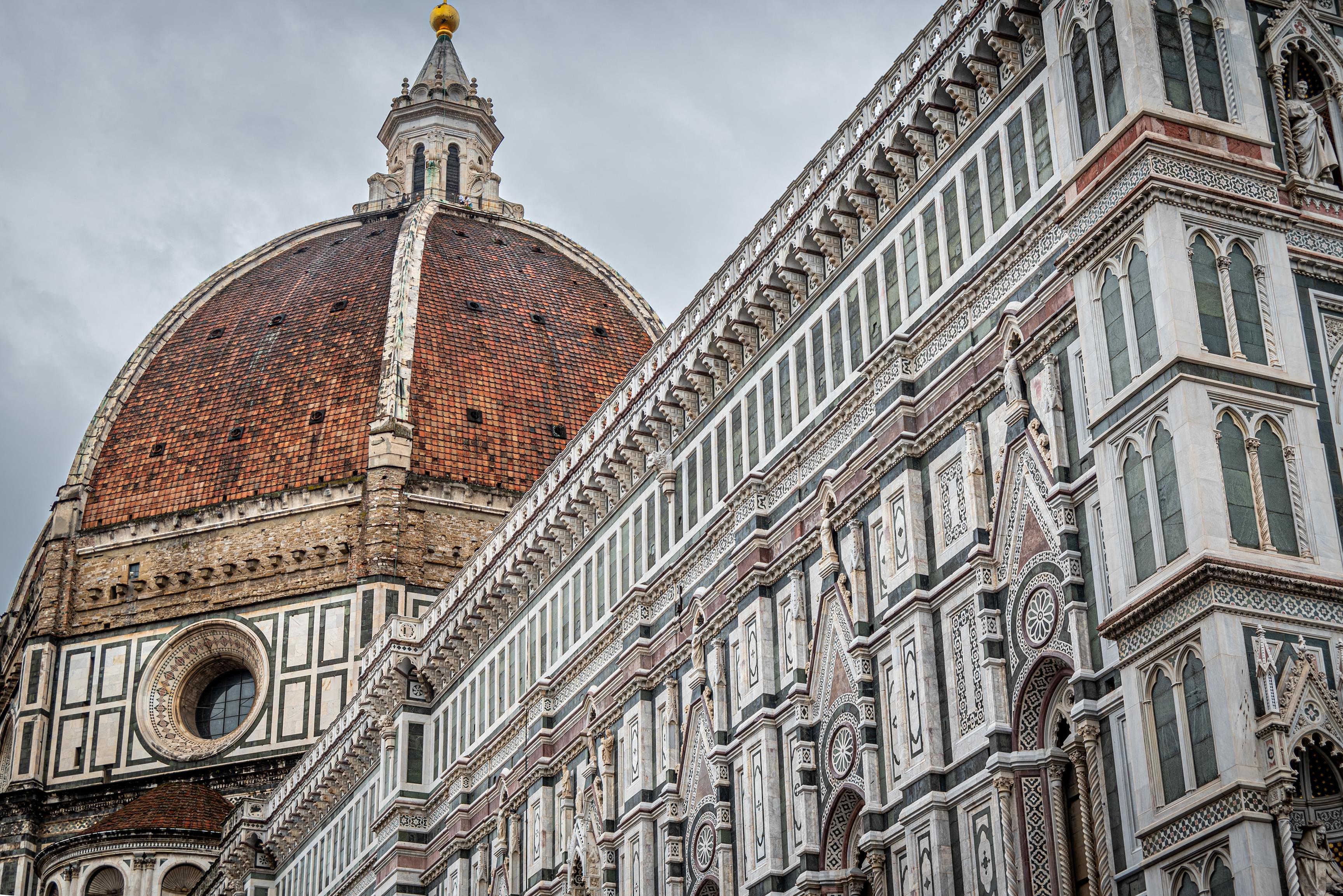
Our third and final day in Florence was an open day where everyone could shop or check personal to-dos off their list. My brother and I started early in the morning at the Cathedral of Santa Maria del Fiore to walk up and around the dome, which was designed by Filippo Brunelleschi, and view the painting of "The Last Judgement" by Giorgio Vasari and Federico Zuccari. Afterward, we found a place to do a little laundry, the last chance to refresh some of our stuff before heading to Sicily. When we finished laundry, it was time for lunch, so we circled back to La Nicchietta in Calimaruzza near Piazza della Signoria for another mouth-watering panini. While others were doing their own things, I decided to head over and climb the 414 steps of Giotto's Campanile, next to Santa Maria del Fiore, and check out The Baptistery of St. John. The baptistery was undergoing significant renovations, but you could walk around the interior and see portions of the famous mosaic ceiling. We regrouped again and headed down to Scuola del Cuoio, the renowned leather market for shopping, and then to Basilica of Santa Croce. The Basilica of Santa Croce is the burial place of many famous Florentines, such as Michelangelo, Machiavelli, and Galileo. The poet Dante has a cenotaph but is actually buried in Ravenna. The day was starting to run late, but I wanted to accomplish one more thing, so I walked over to Piazzale Michelangelo to get some panoramic city photographs. To cap off the final day, we had dinner at an Osteria near Santa Croce and one more stop at Gelateria dei Neri before heading back to the apartment to pack.
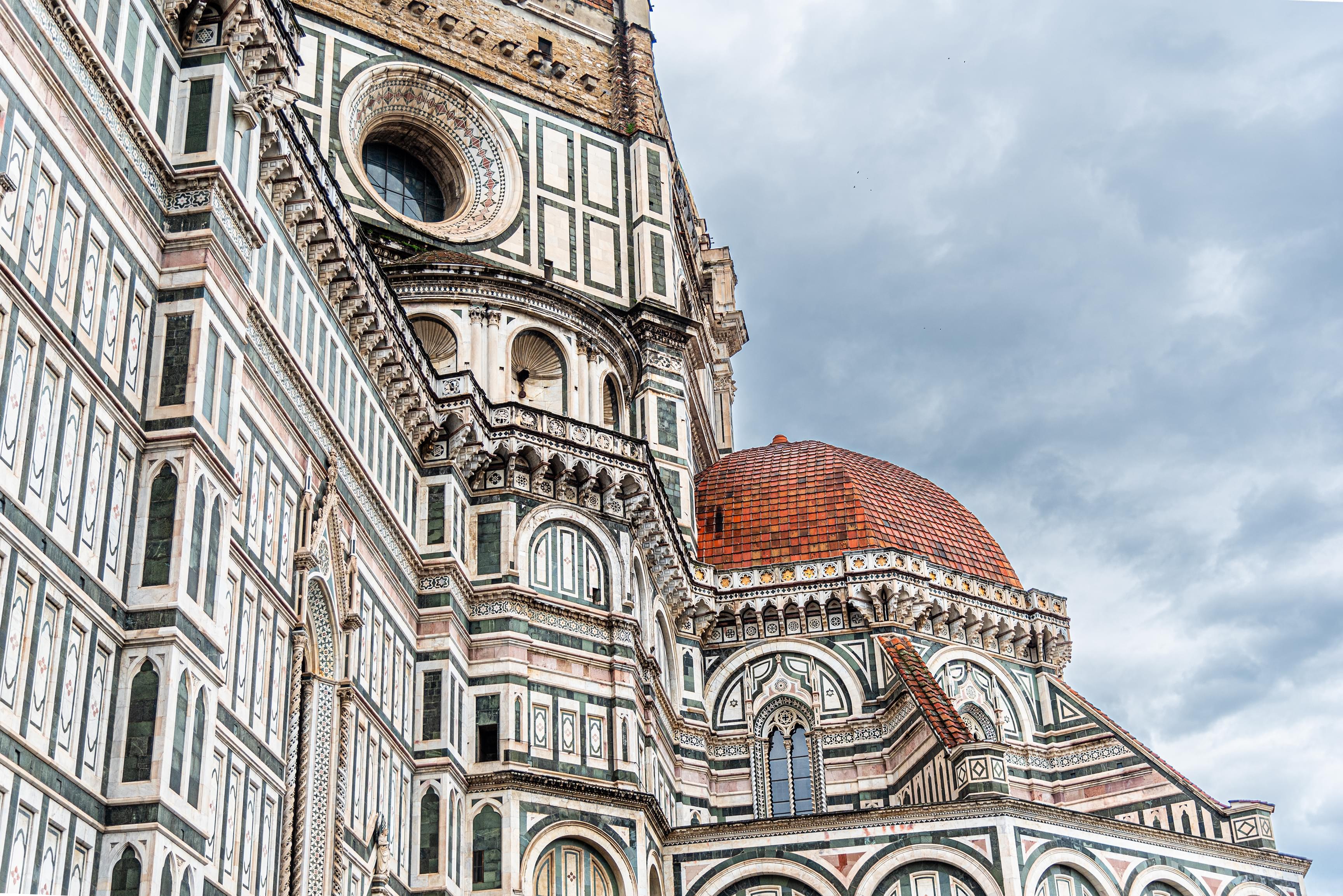
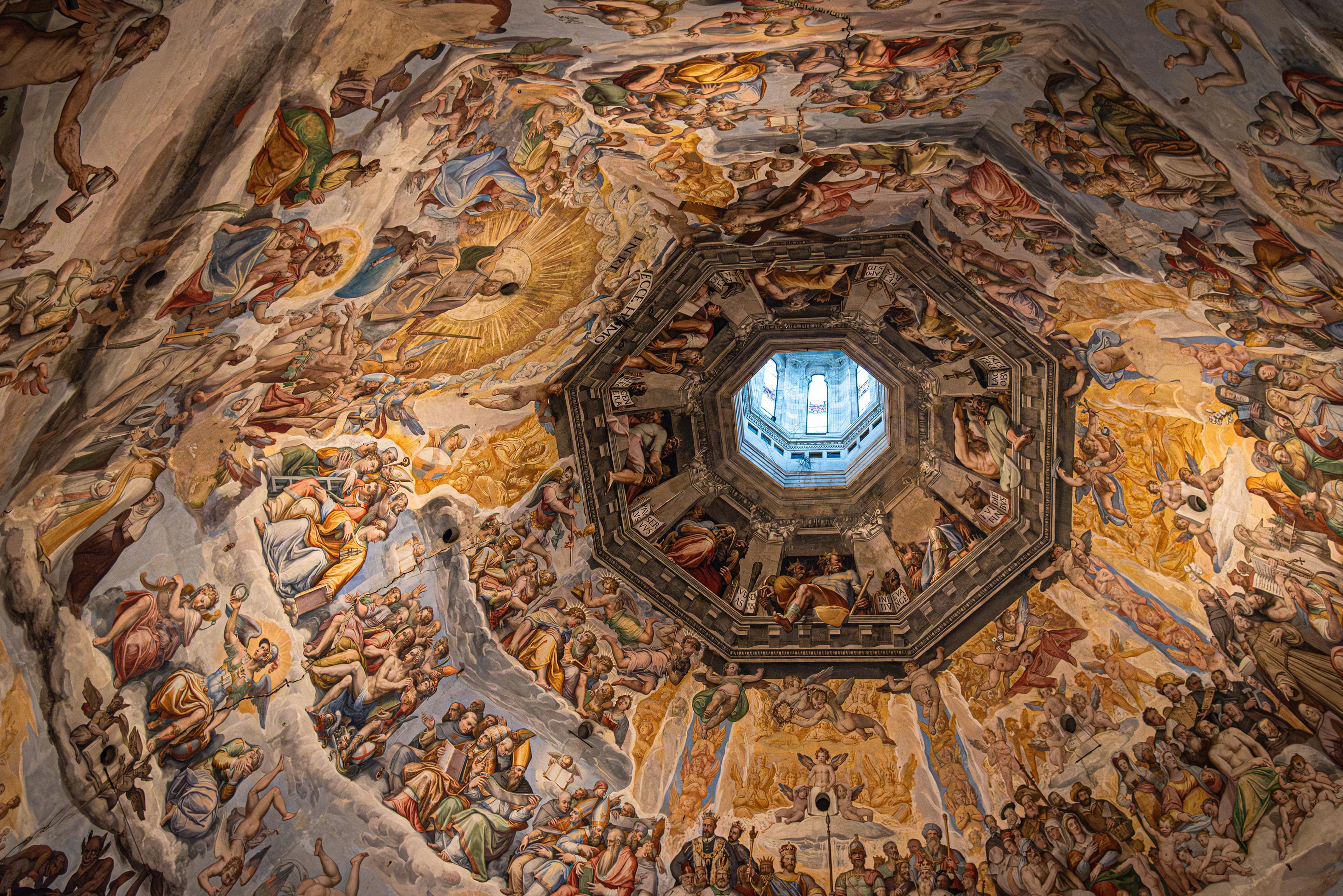
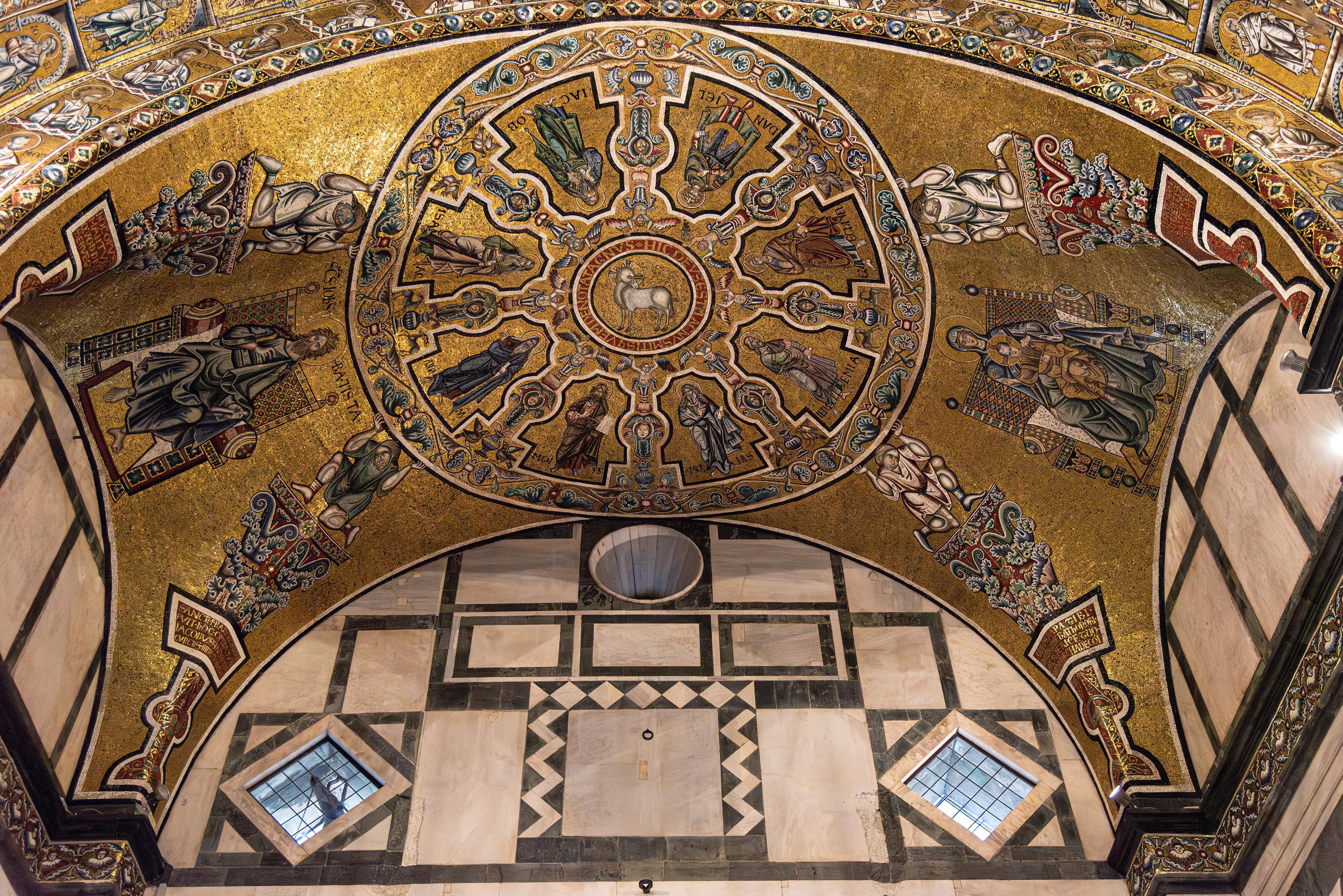
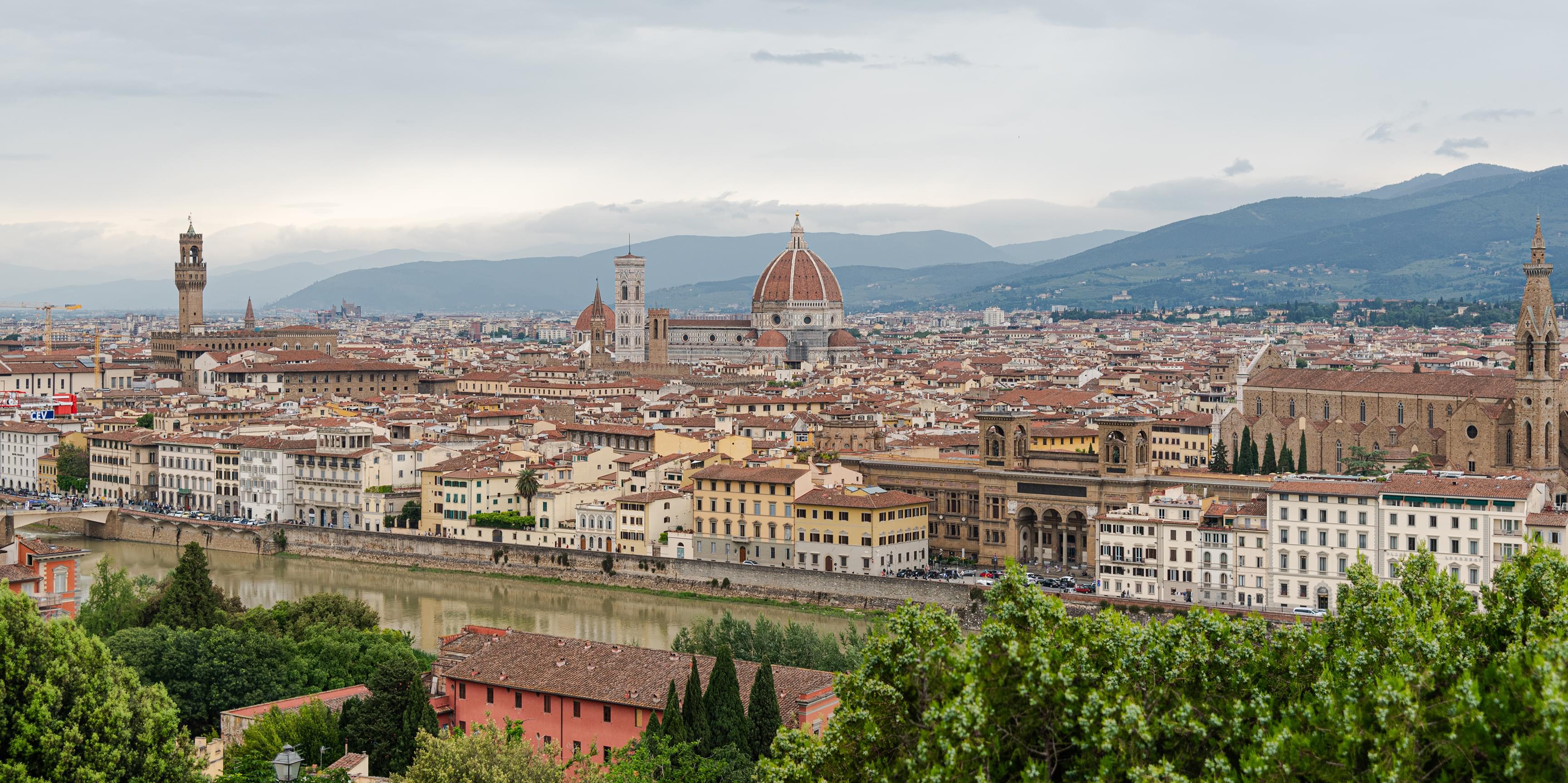
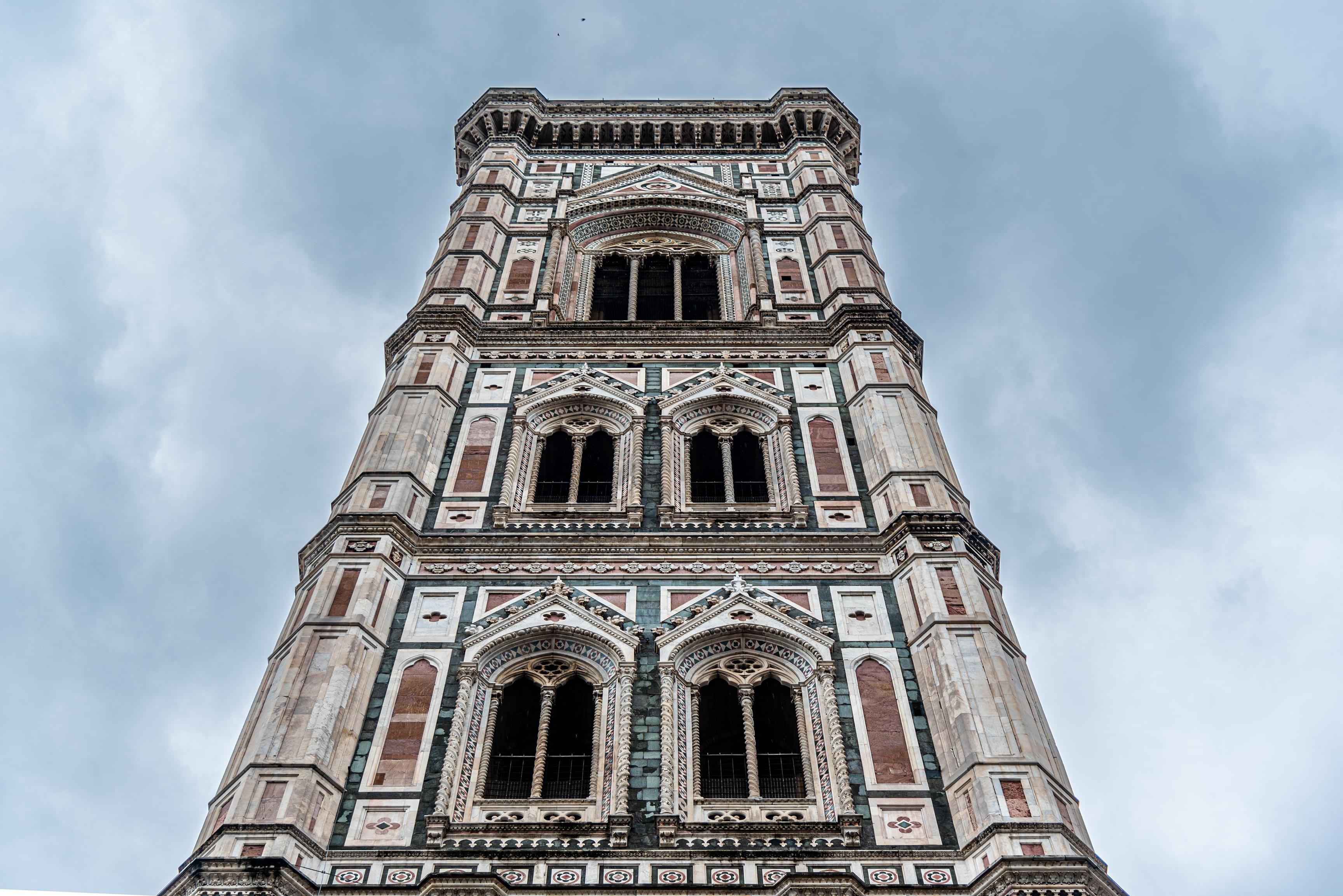
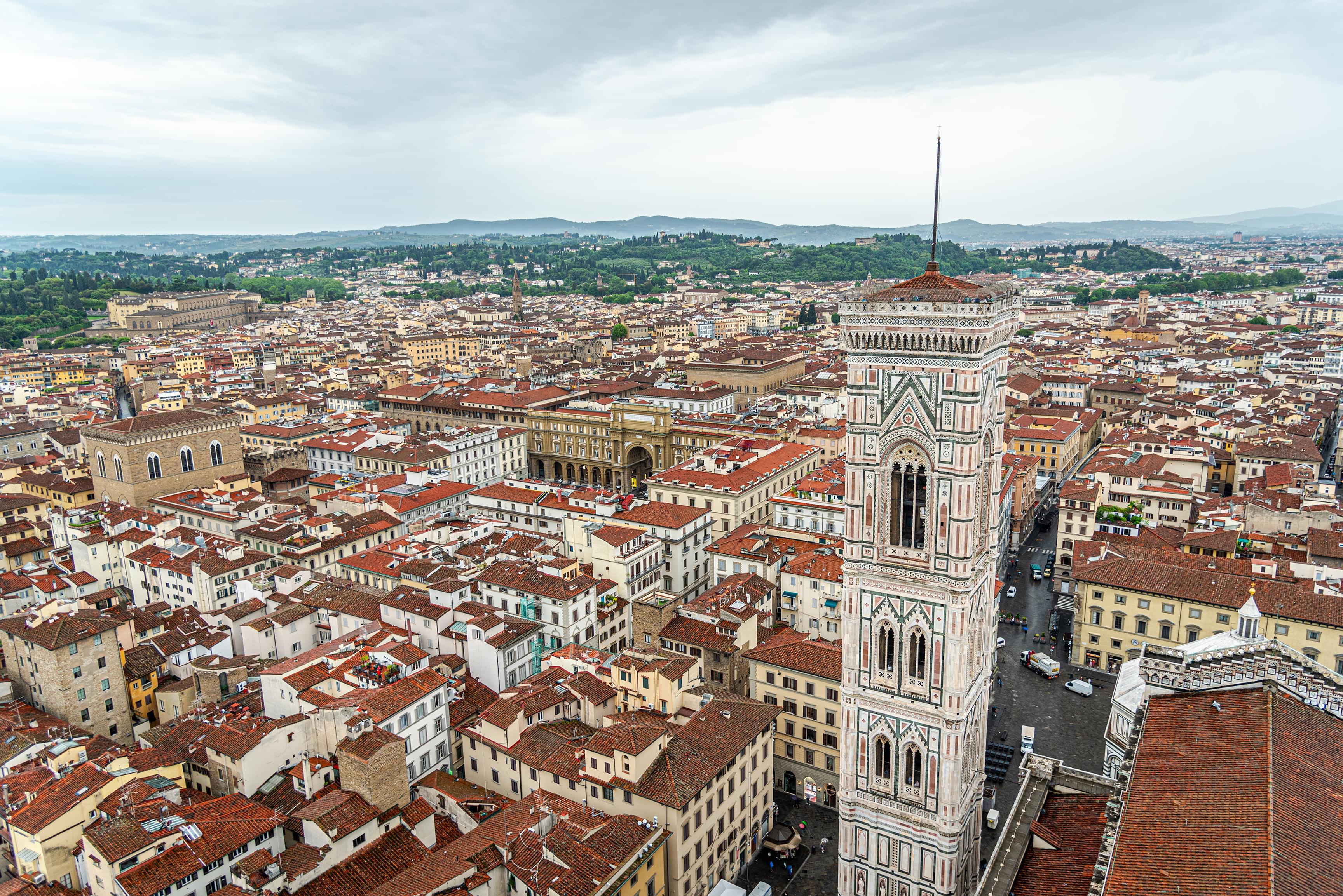
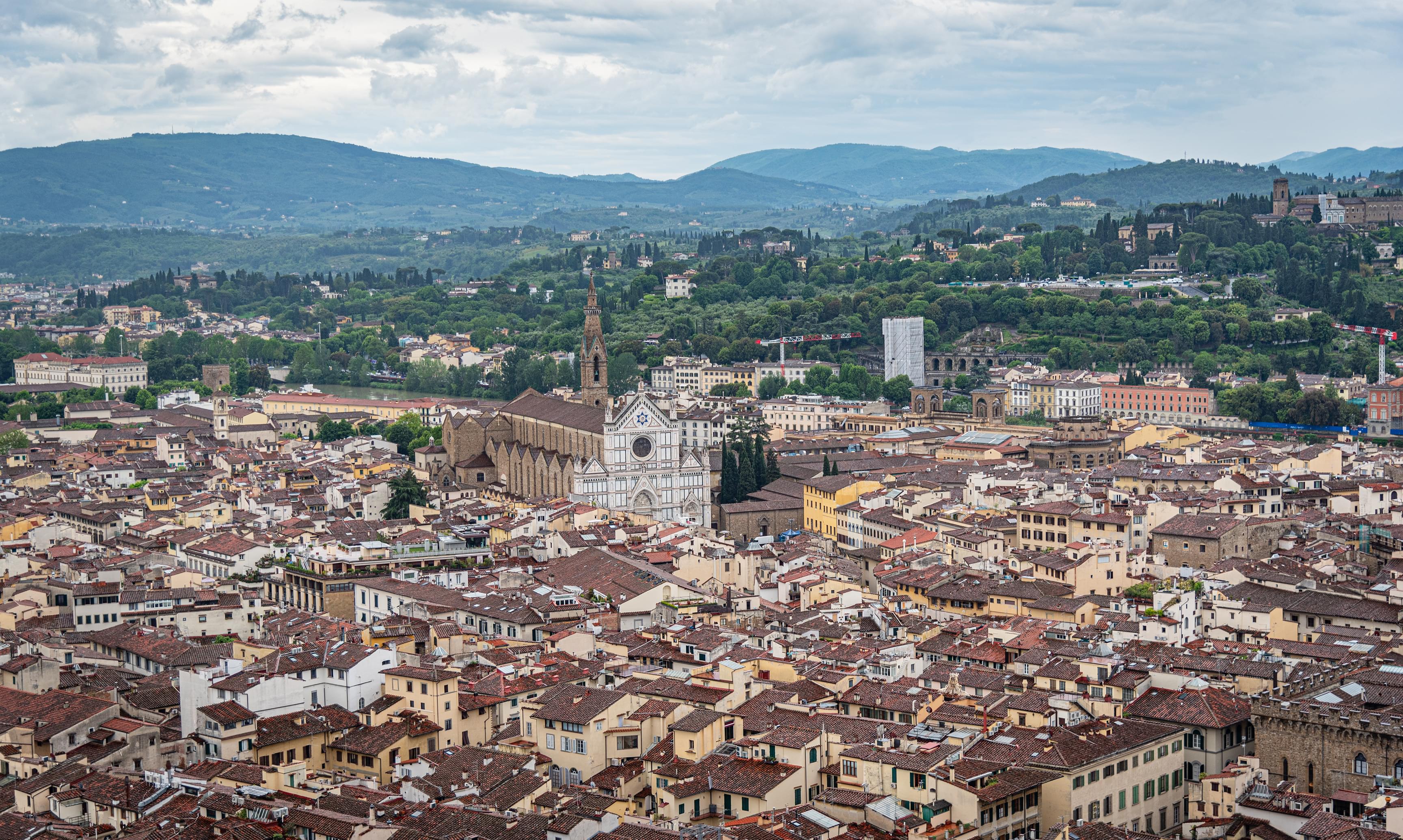
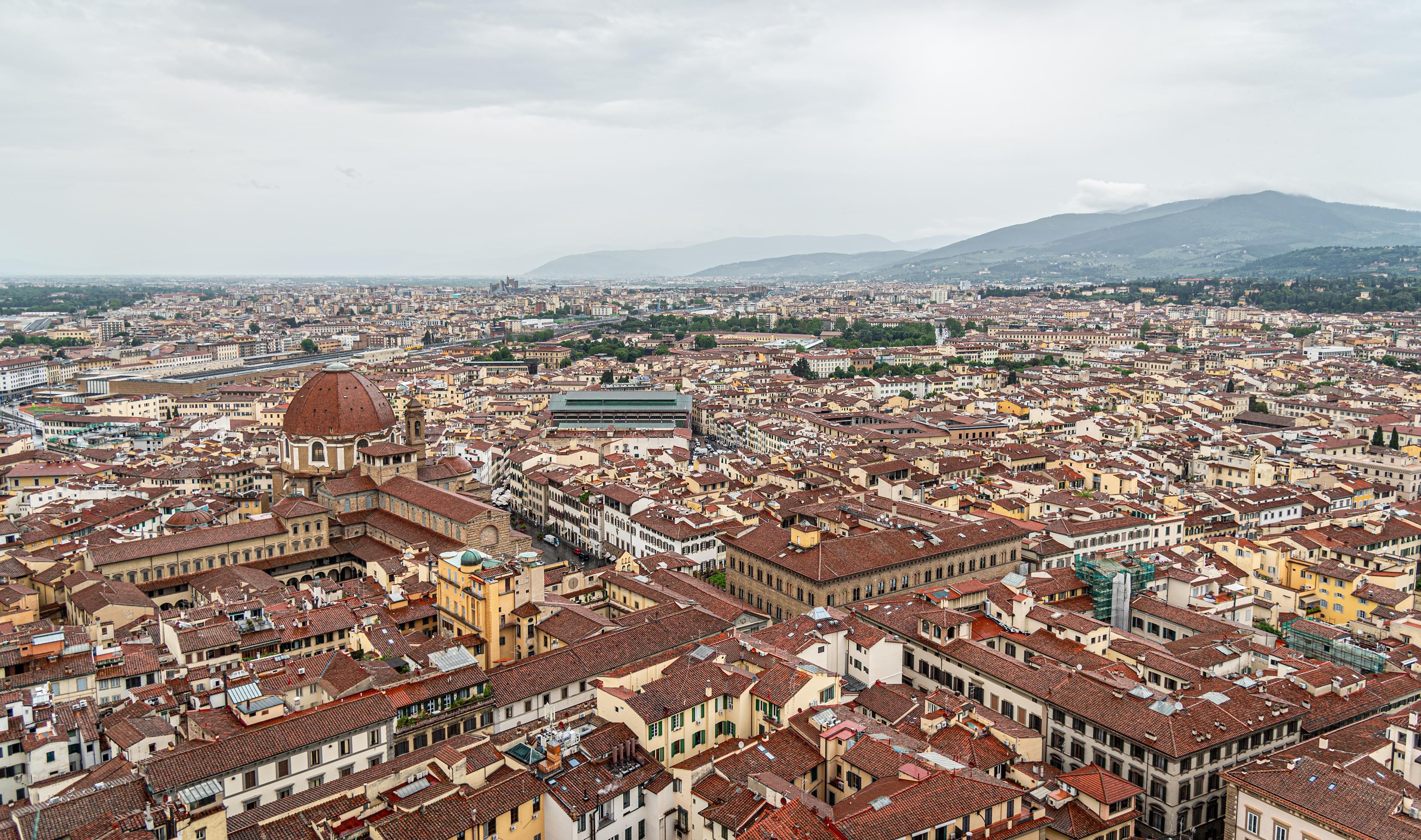
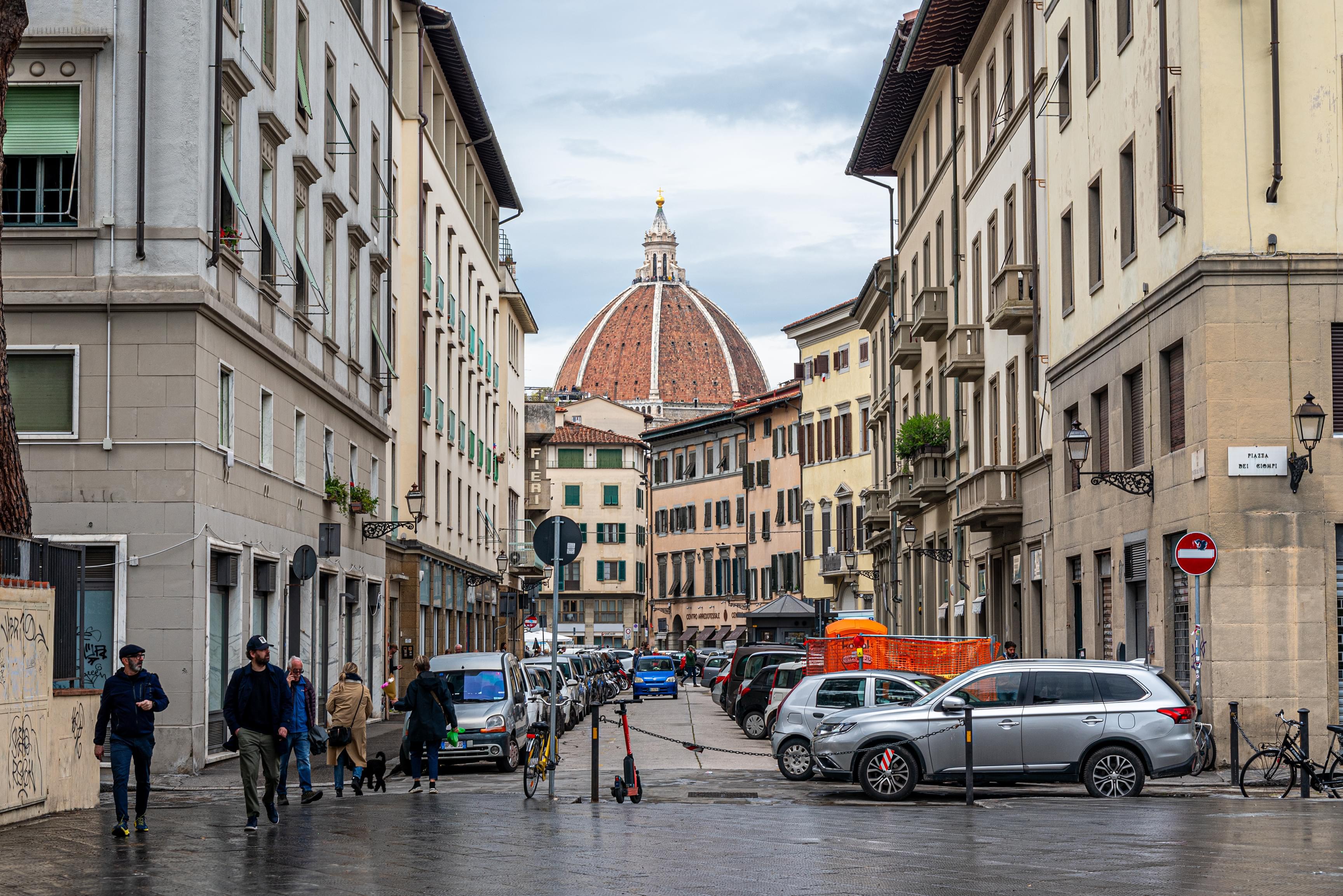
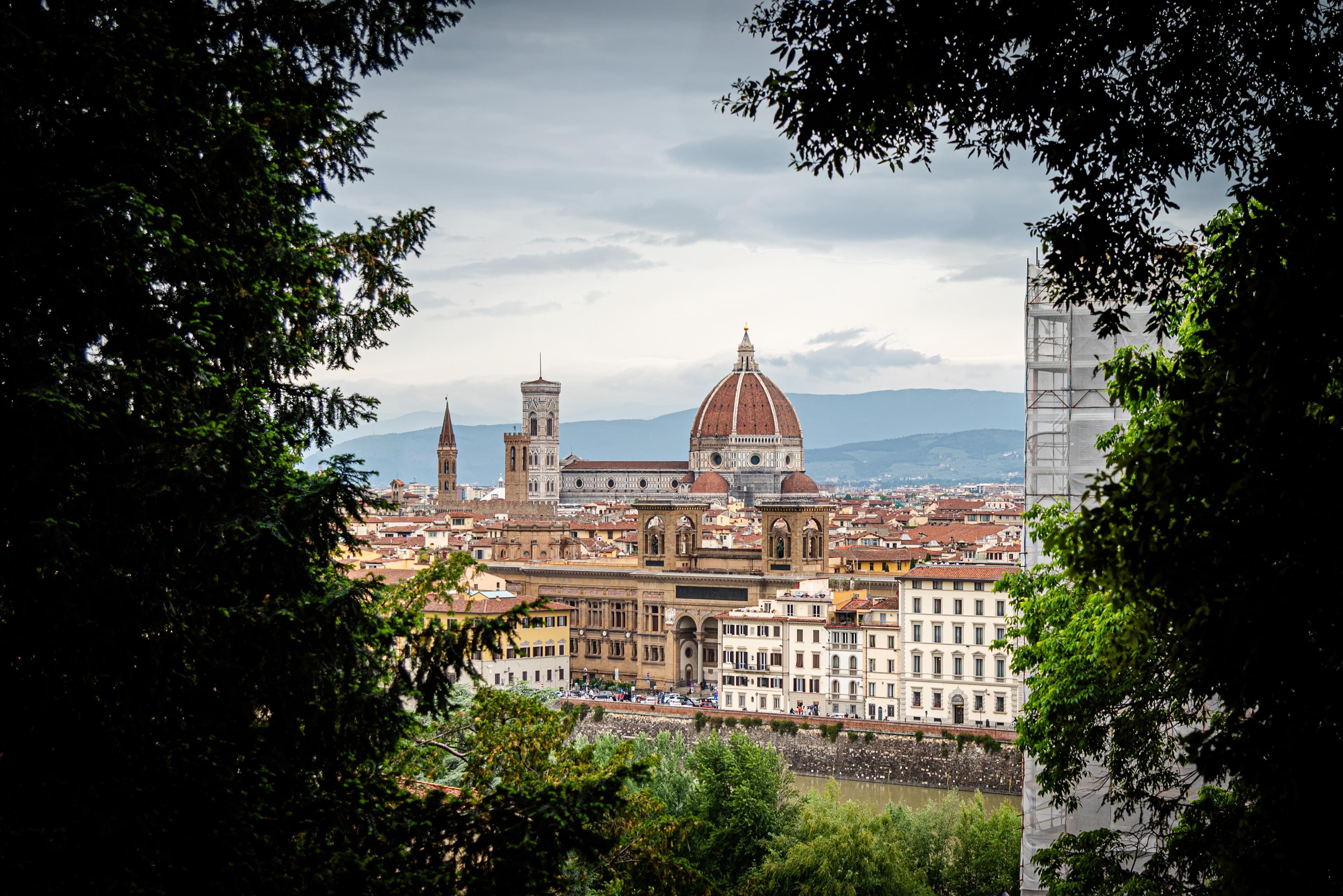
A stopover in Roma
Our flight to Palermo was to depart from Rome. We scheduled an early morning train from Firenze Santa Maria Novella to Roma Termini in Rome. We arrived in Rome with a full day to cram as much in as possible. After dropping off our luggage at the apartment, we went to the day's first stop, Bonci Pizzarium, for some highly anticipated Roman-style Pizza al Taglio and Suppli by the legendary pizza maker, Gabriele Bonci. Even though there was a moderate wait, the food here exceeded my expectations. We ordered four slices for us and a couple of Suppli. After lunch, we took the subway back down to the Circo Massimo. Unbeknown to us, New Jersey's own Bruce Springsteen was playing a show at the Circus Maximus that night, and crowds were waiting to get in.
While we could not get into the Circo Massimo, we walked a short distance to the Colosseum and Roman Forum. We had afternoon tickets but were okay with getting in early. We spent the next few hours touring the Colosseum and Roman Forum, appreciating such incredible ancient history and throwbacks to Art History class. Some of my favorites are the Arch of Constantine, constructed around 312 AD to commemorate ten years of Constantine's reign and military victories, and the Arch of Titus, 81 AD, to memorialize Emporer Titus and his accomplishments. Then there's the Forum itself, with its layers of history dating back over 2000 years. The last time I was here, probably twenty-plus years ago, the access to the Forum was much more restricted, and we didn't get to go down and take it all in, so it was awe-inspiring to be surrounded by this ancient history.
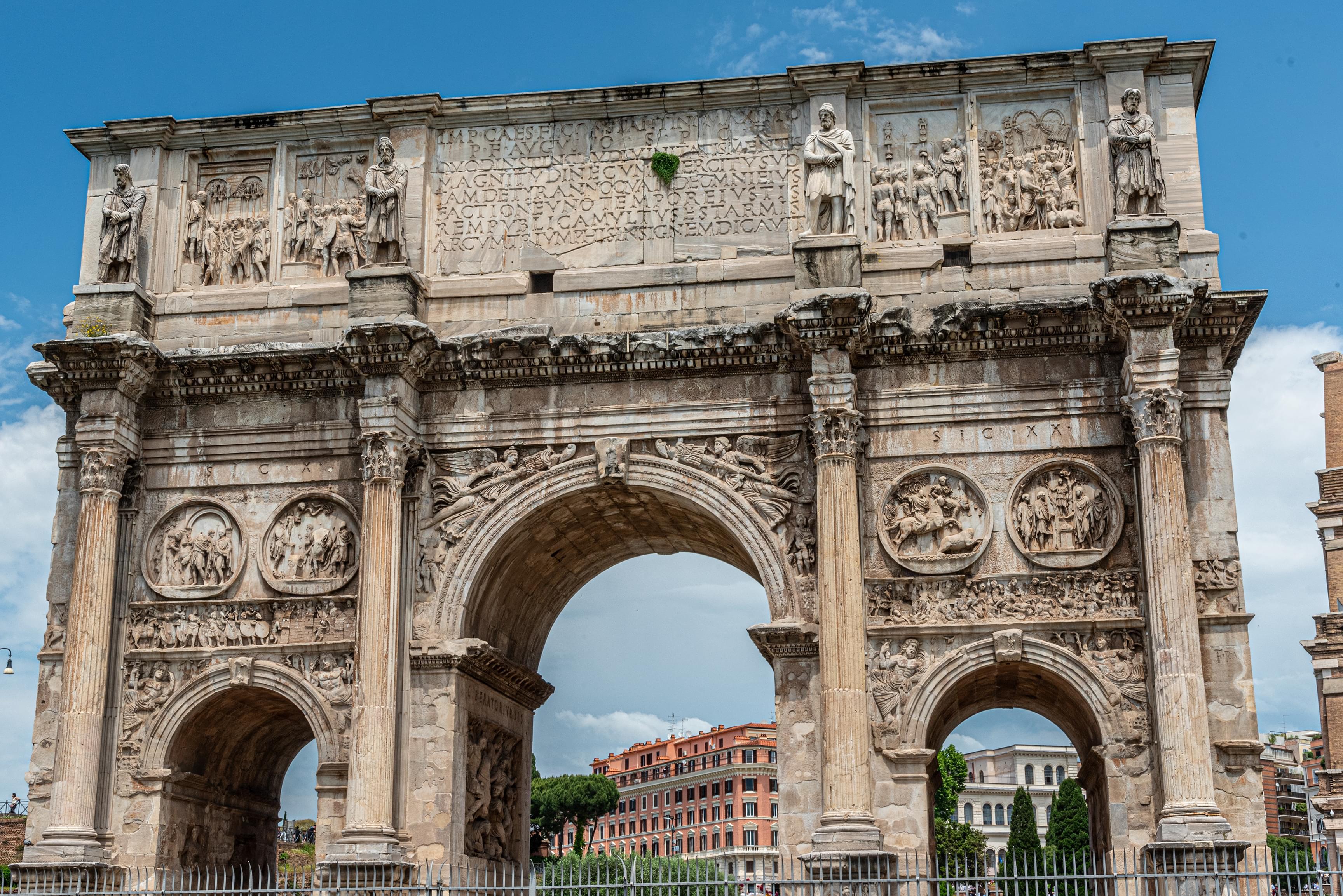

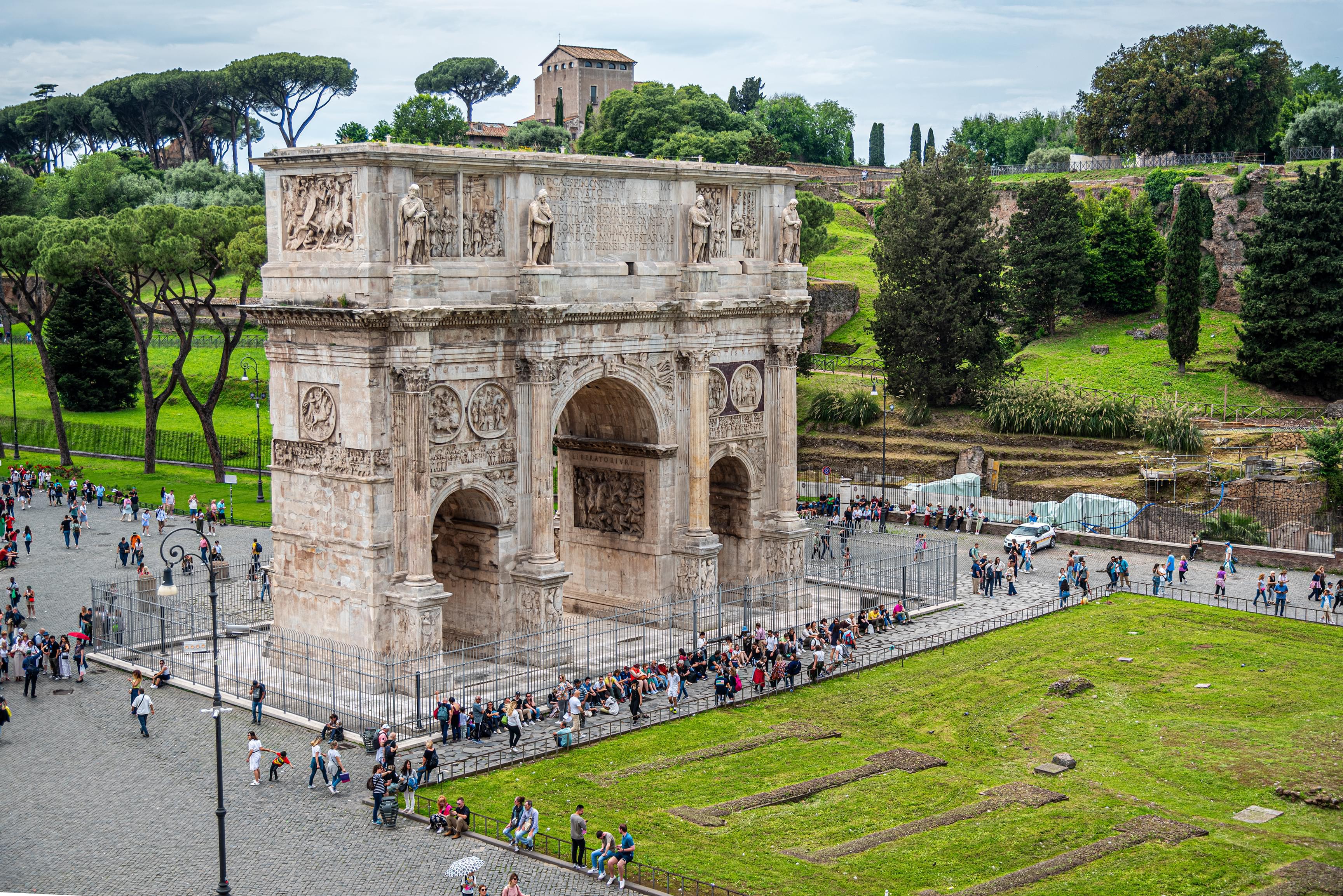
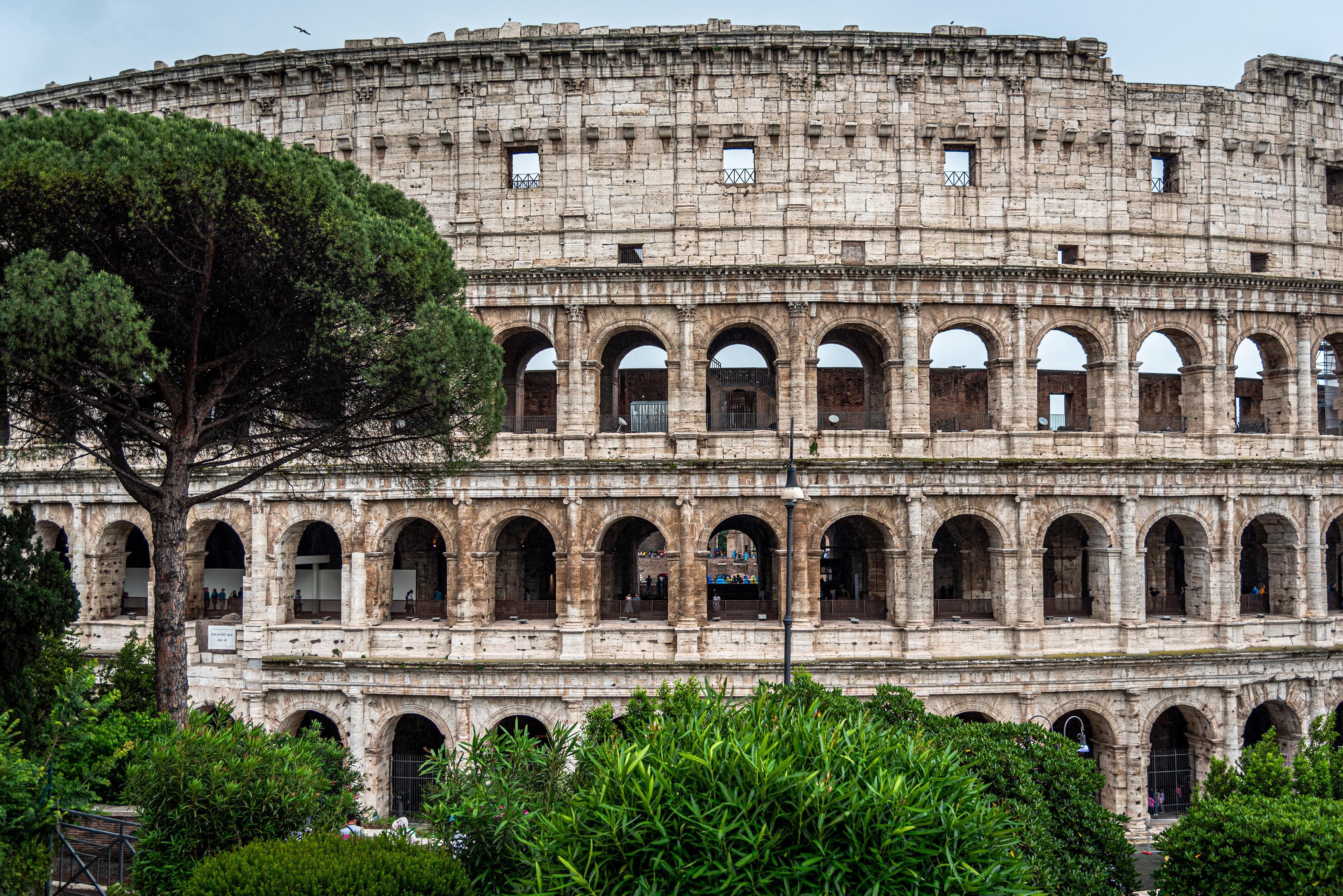
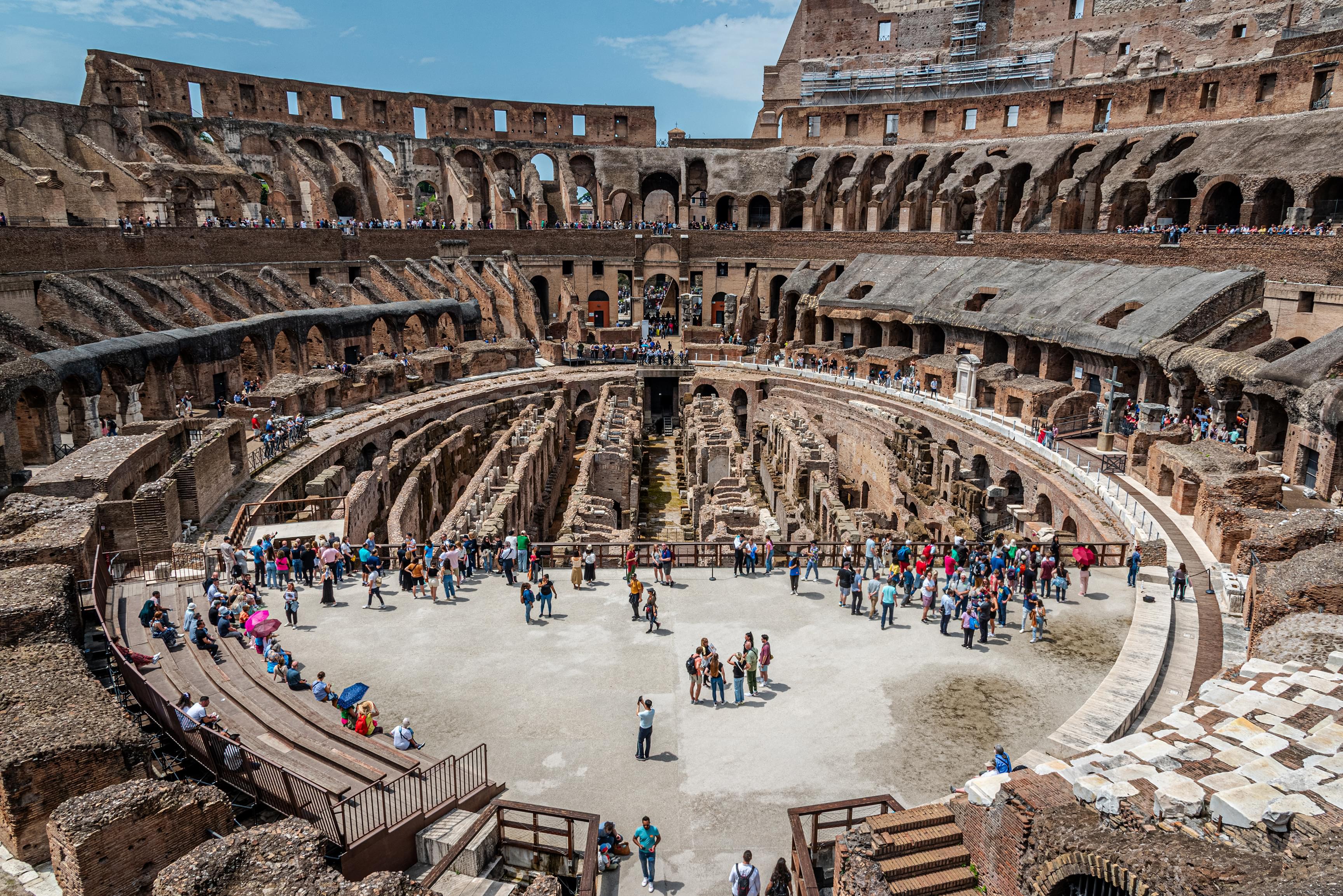
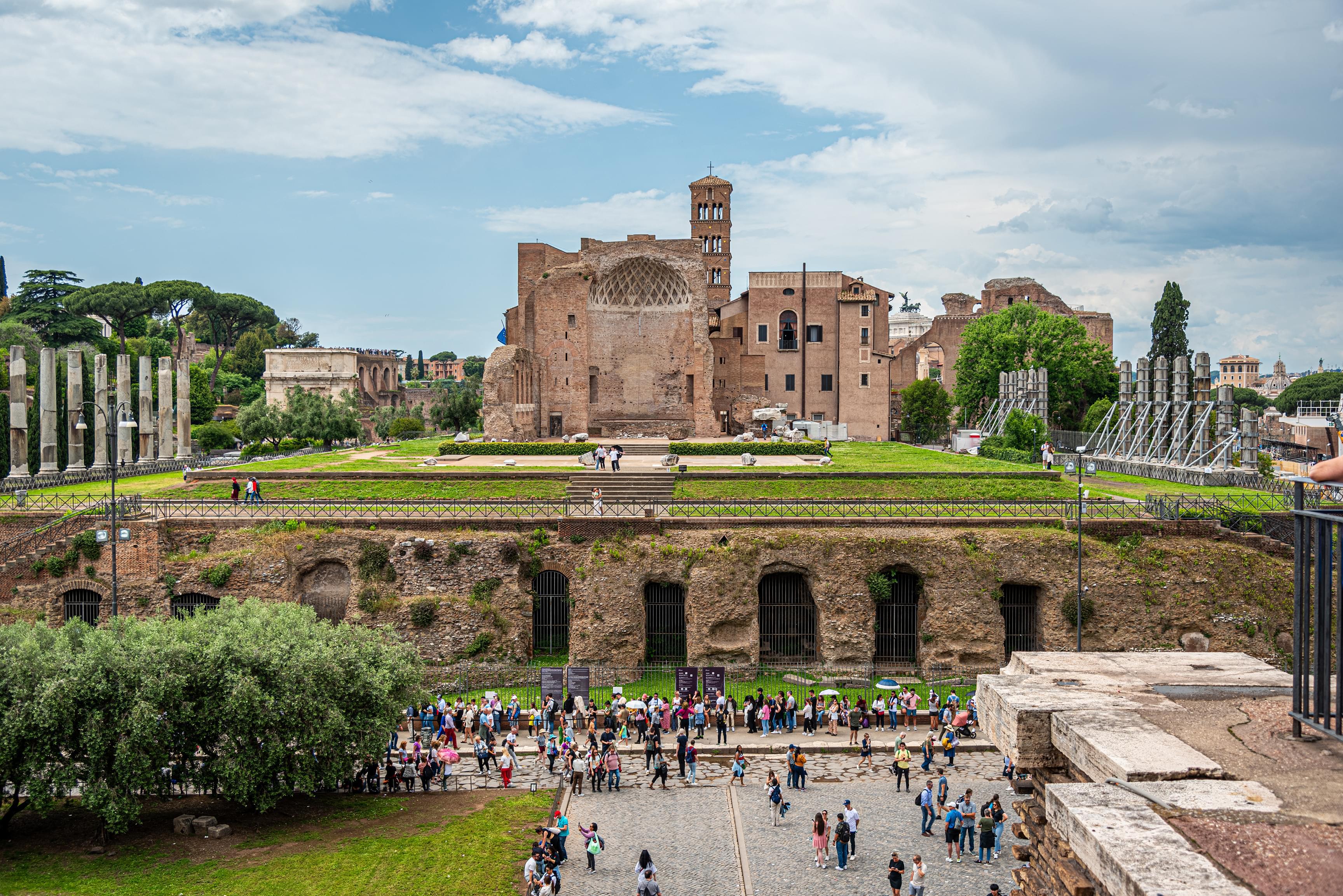
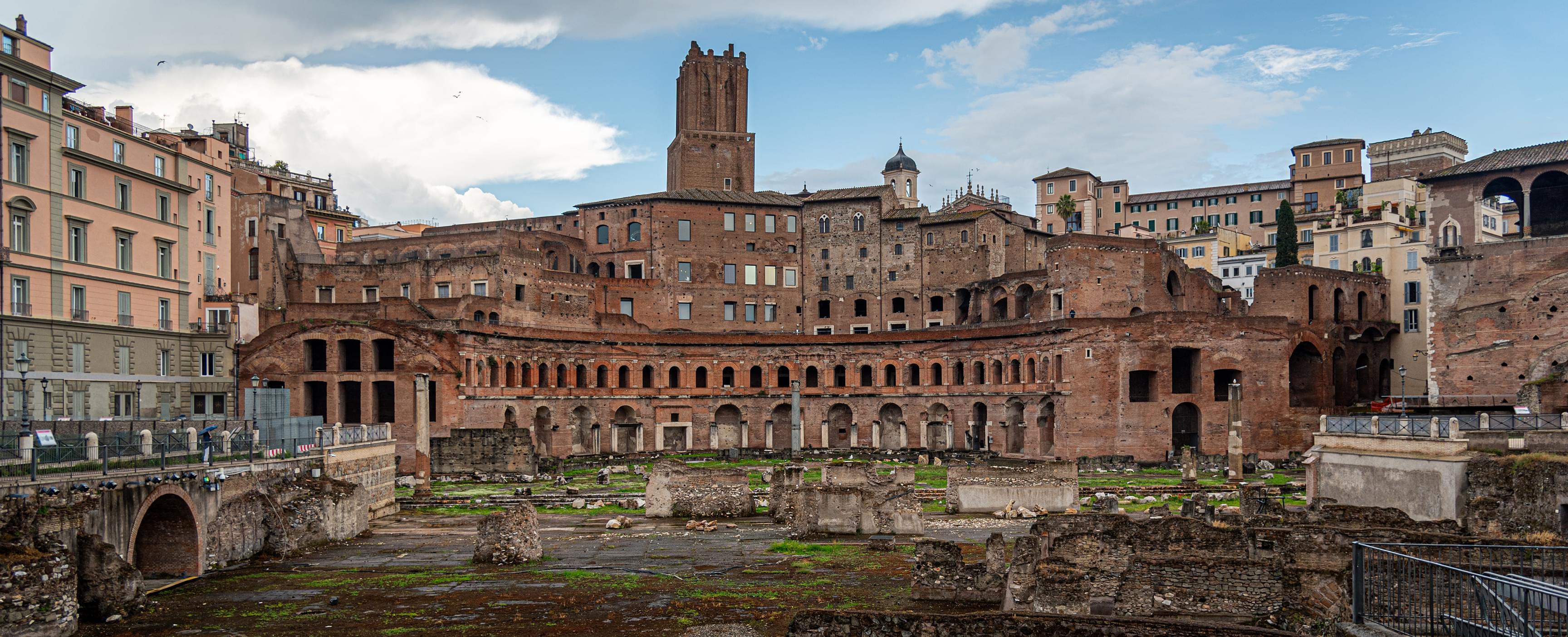
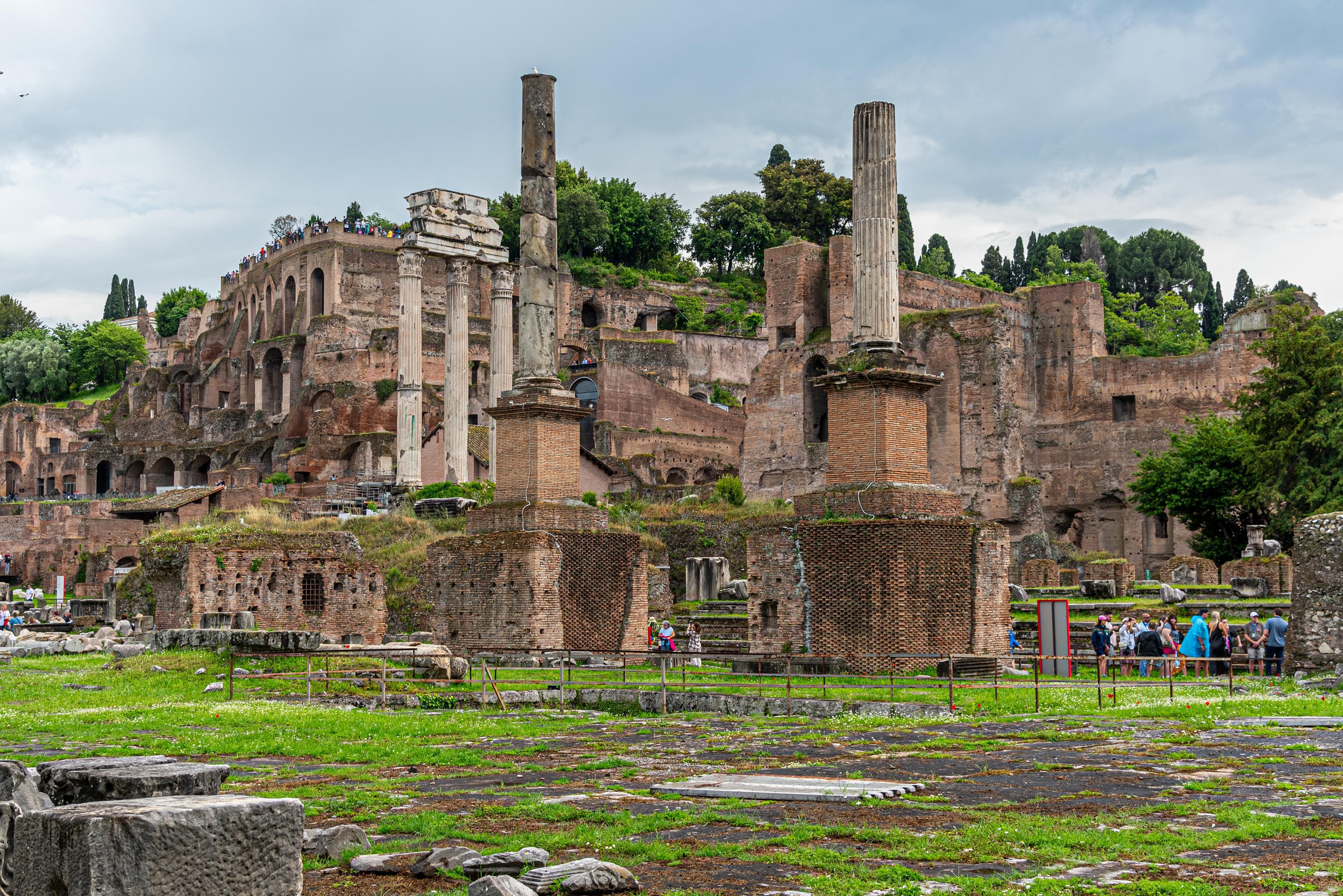
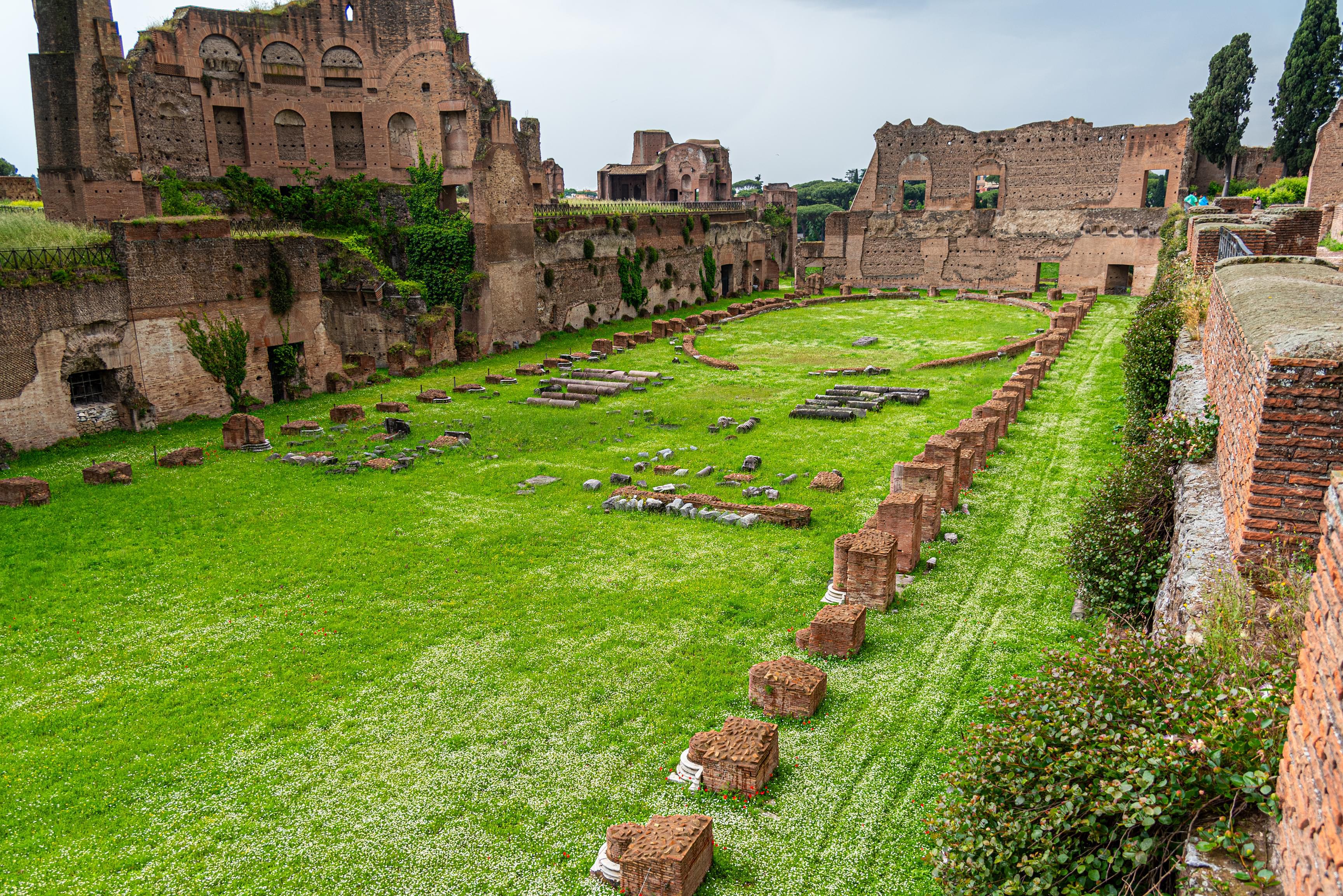
Unfortunately, however, the clouds rolled in, and much of the afternoon was spent waiting out occasional showers. We had to cut a few stops out of our whirlwind tour of Rome, but we did walk past the beautiful Trajan's Column with the story of Rome's victory in the Dacian Wars carved around the column. Then, it was past the Monument to Victor Emmanuel II to Largo di Torre Argentina, where Julius Caesar was killed, and up to the Pantheon. Unfortunately, tickets are now required to go inside the Pantheon, but it's still a marvelous building from the outside. It was almost time for aperitifs, so we walked through Piazza Navona and found a quiet place called Caffè Dell' Anima for a cocktail. Our dinner reservation was nearby, close to Campo de' Fiori, called Hosteria Grappolo d'oro. Here, you can get all the Roman classics like Cacio e Pepe, Carbonara, and Amatriciana without all the Instagram-inspired tours that make you wait hours to get into Osteria da Fortunata. We called it a day after a long day and a fantastic meal. We had to get up early to catch a taxi to the airport for our flight to Sicily!
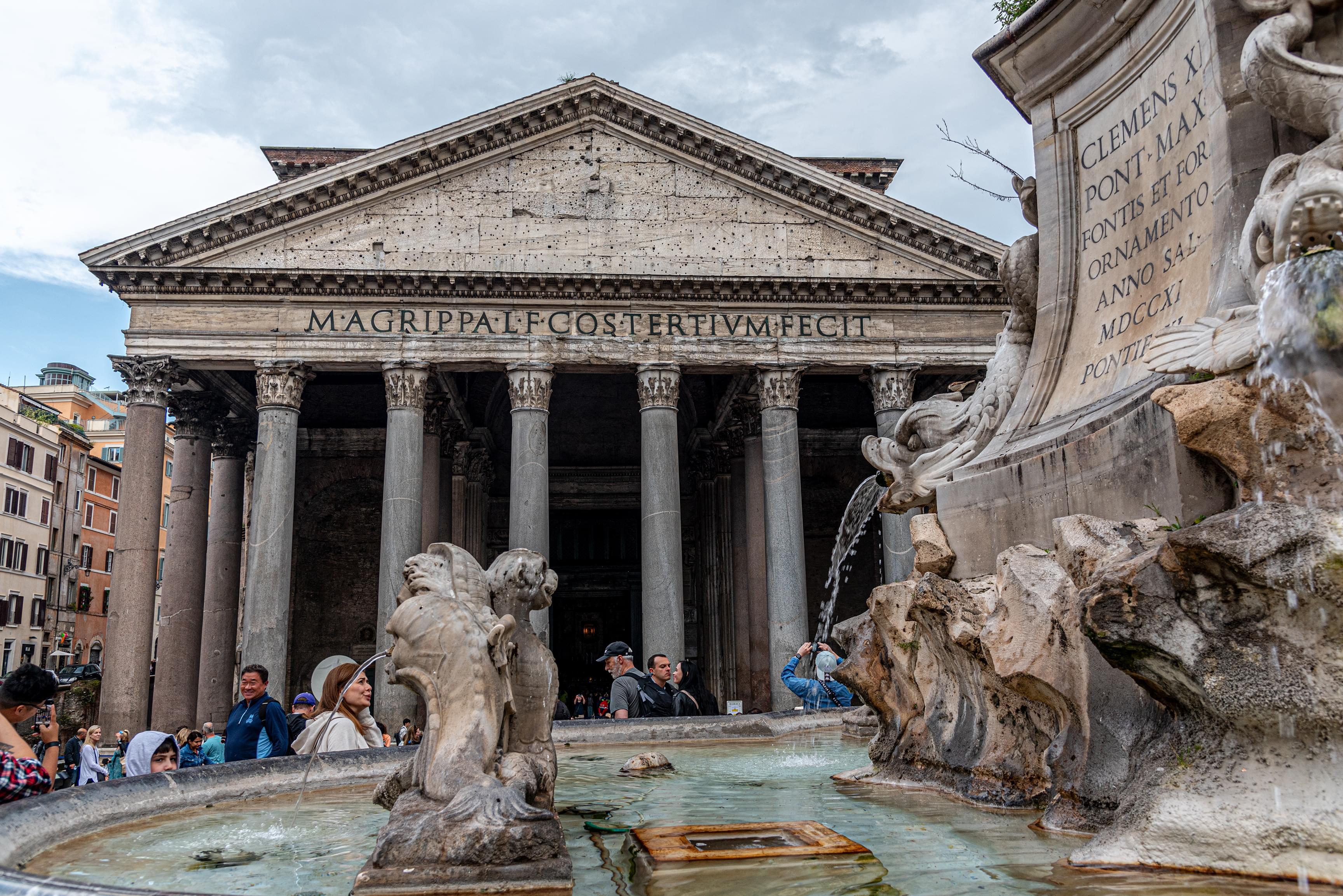
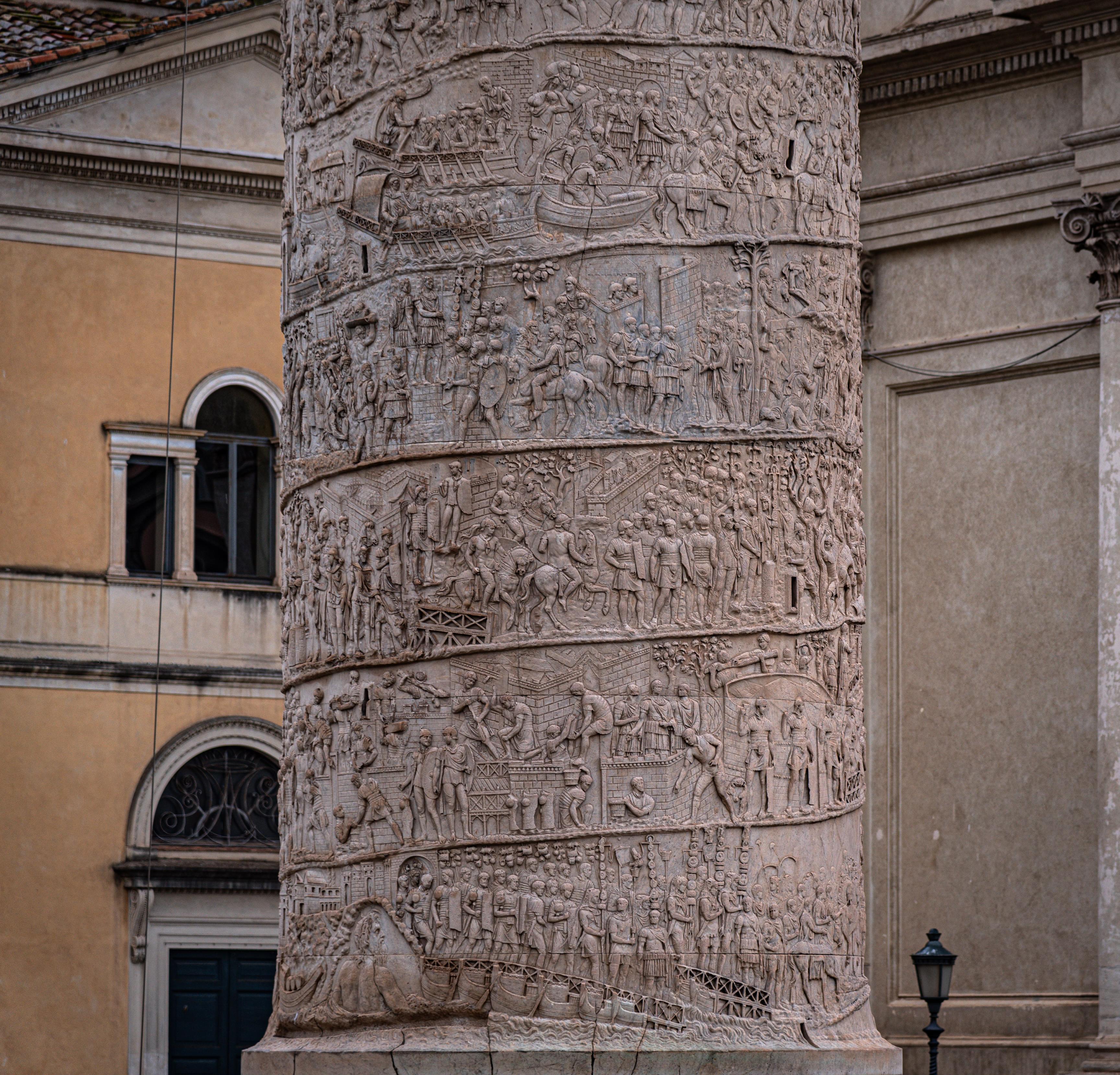
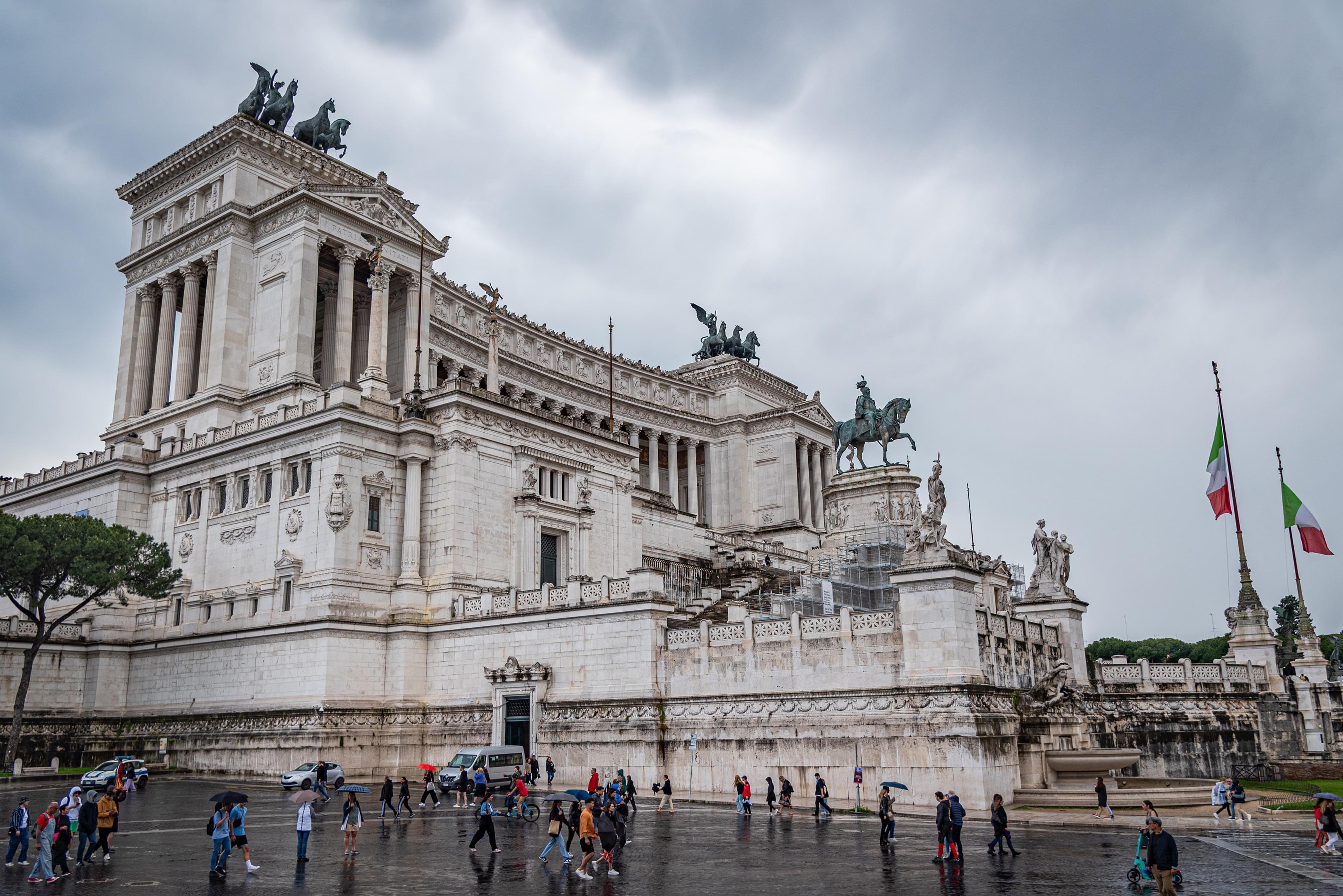
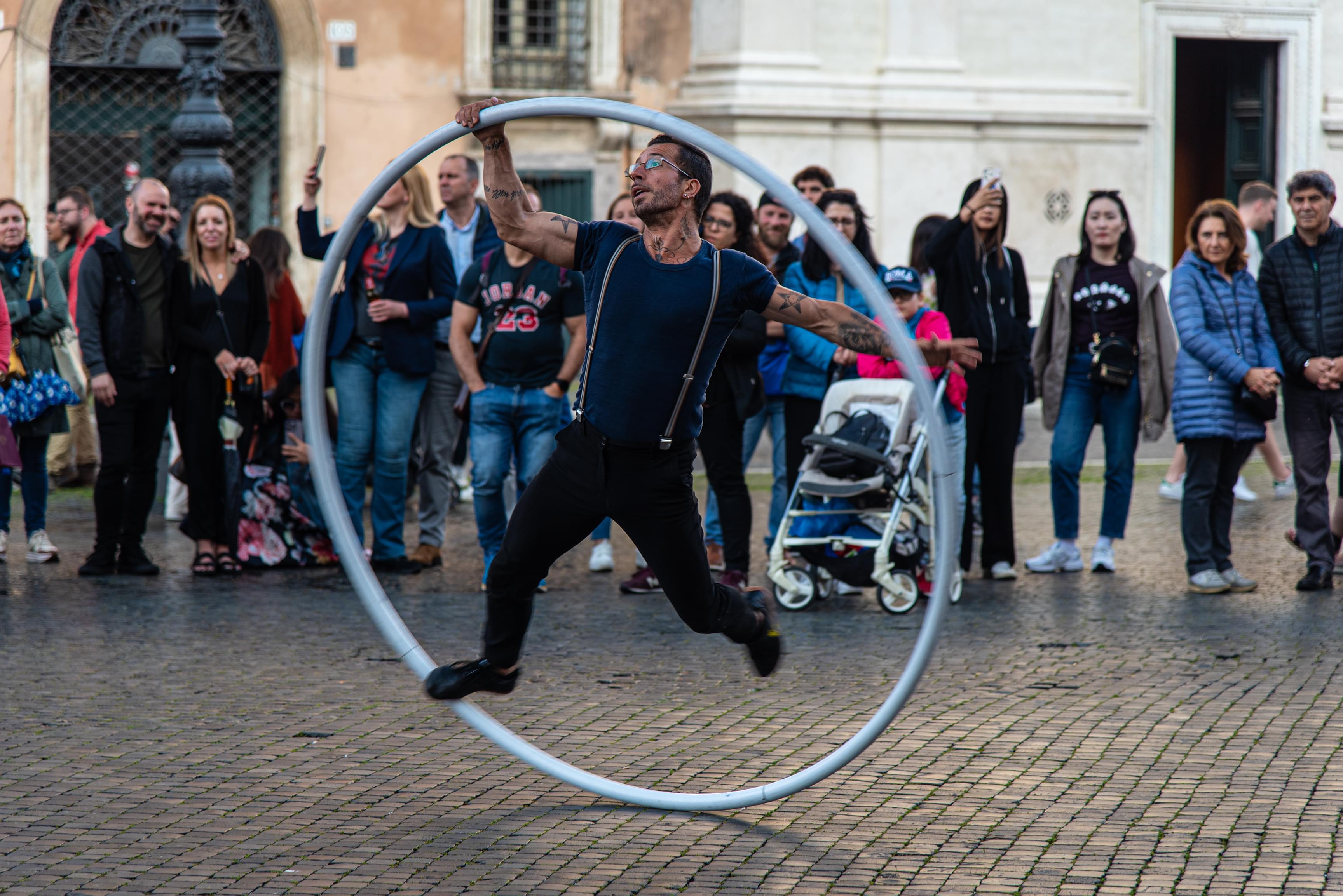
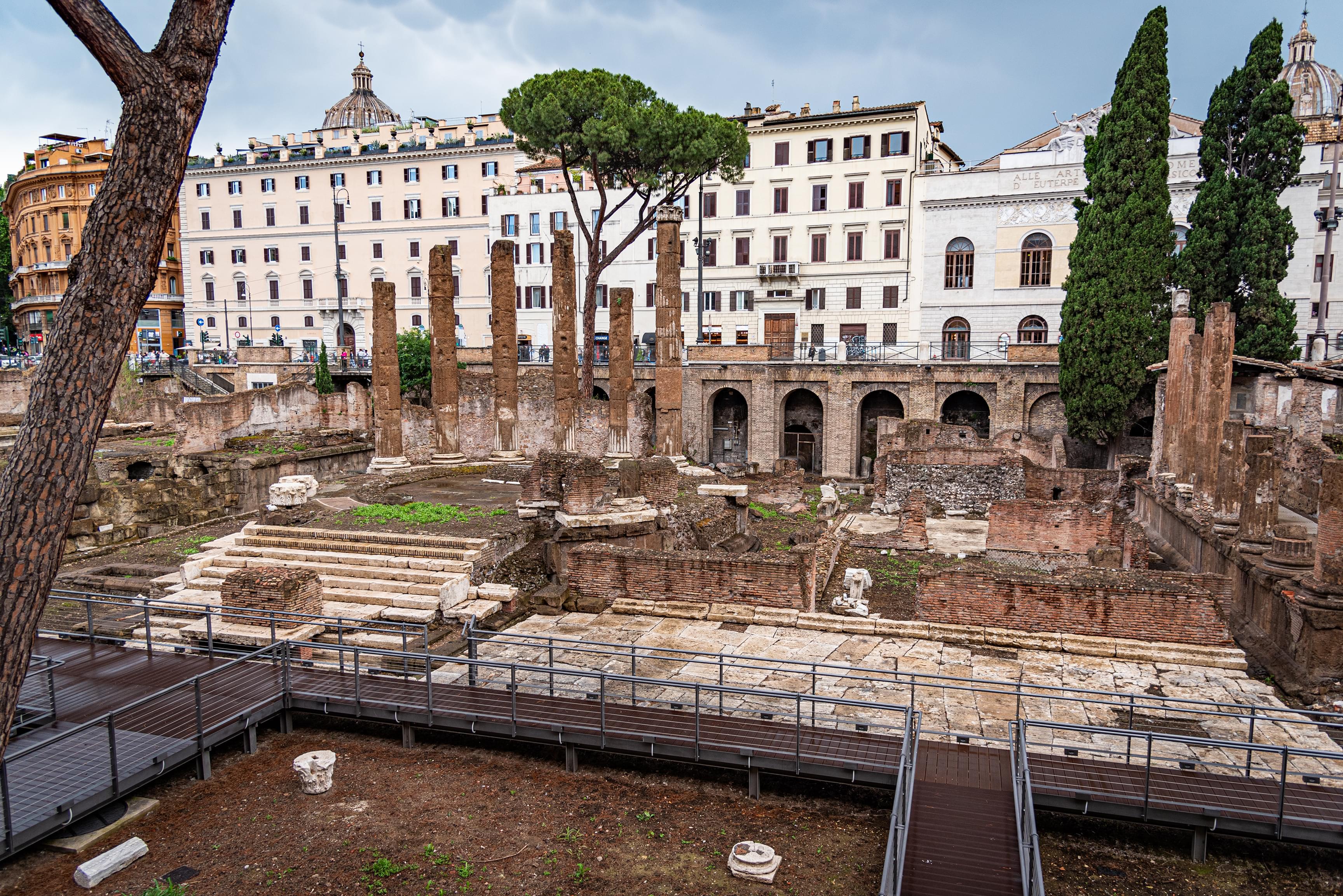
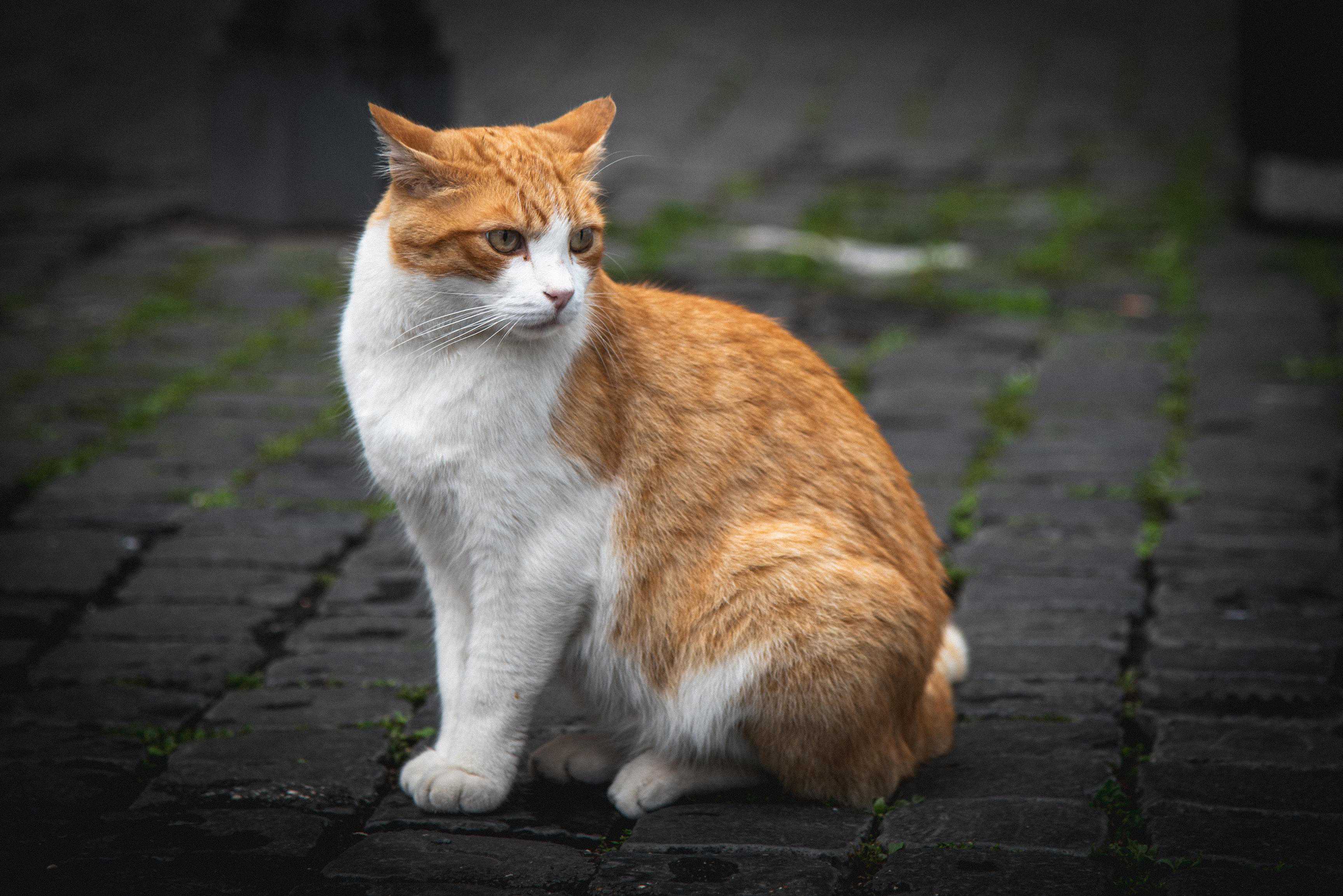
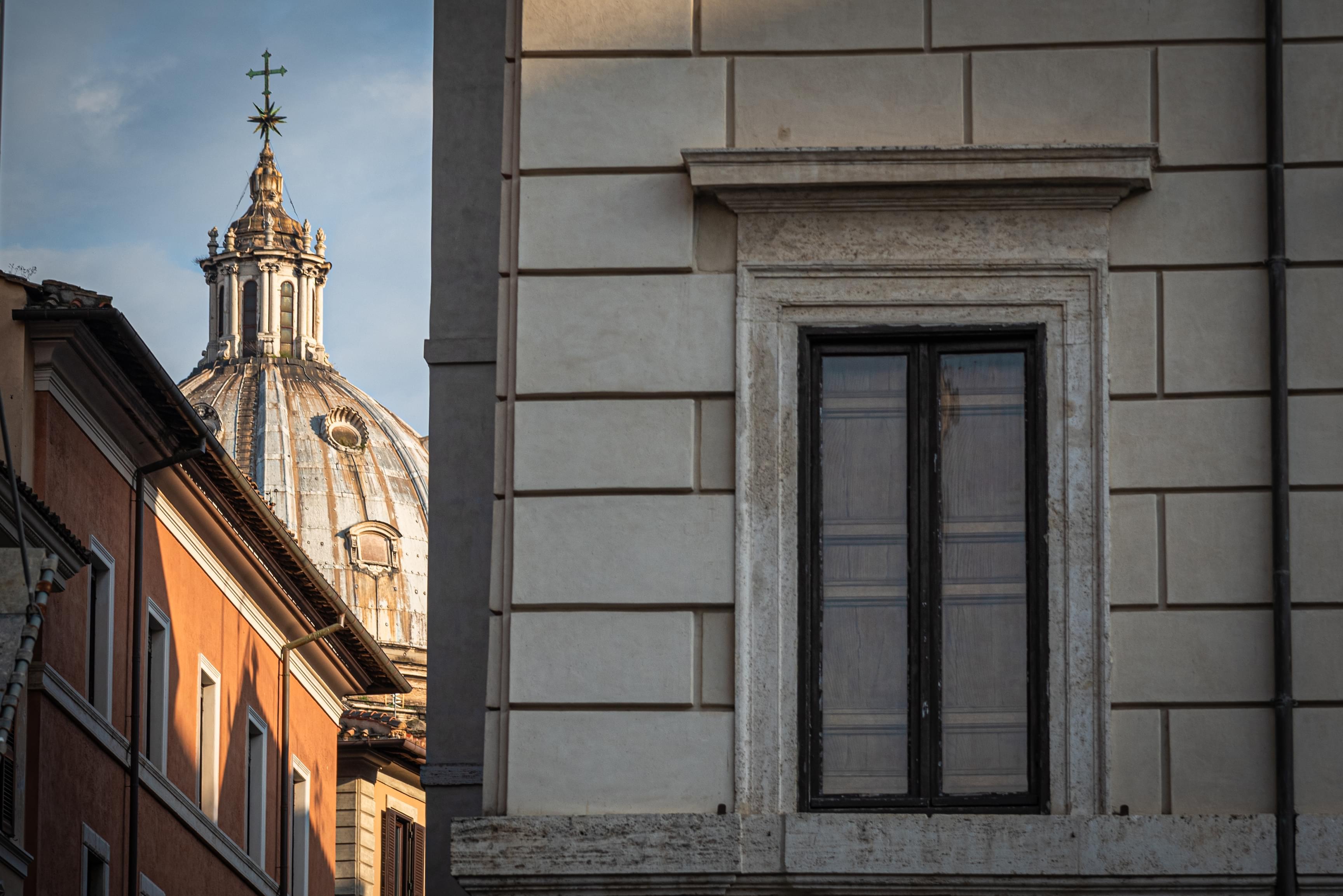
Sicilia (Sicily)
We landed in Sicily at Palermo Airport, stepped off the plane on the tarmac, and looked up to see a beautiful, awe-inspiring cliff in the distance. I initially thought it felt a lot like Iceland but warm and dry, but it is much more complex and diverse. After we picked up our rental, we started driving along the coast, sheer cliffs on one side and turquoise water on the other. As we made our way inland, through rural unpaved roads into rolling hills filled with olive and almond trees. Arriving on the south coast, in the town of Agrigento, in the afternoon. That evening, we walked up and through the city, stopping for a pre-dinner aperitif at a quirky gastropub called Yellove RistoVintage before an excellent dinner at Osteria Expanificio, where we had some fabulous traditional Sicilian cuisine, like an orange, fennel and black olive salad and risotto with burrata cheese and red prawns tartar.
Agrigento was settled by Greek colonists around 582-580 BC, near the current city's location, and has seen its share of outside invaders and conquests, like much of Sicily. A reminder of this history is the "Valley of the Temples," located south of the city. This UNESCO World Heritage site is considered to have some of the best examples of ancient Greek art and architecture, including the Temple of Concordia. This remarkably preserved Greek Temple was built around 440–430 BC. The Valley itself has a total of seven temples. This was our first stop the following day before leaving Agrigento and heading East toward our next stop, Siracusa (Syracuse). Along the way, we stopped through some beautiful towns, including Ragusa, where we had a quick lunch and admired the art and architecture, such as the Cattedrale di San Giovanni Battista and Modica, which is also filled with great examples of Sicilian Baroque architecture. The drive from Comiso up to and through Modica was extraordinarily hilly and scenic. Winding up and around tight corners with epic views around each corner. After we visited the towns, we moved on to our next apartment in Siracusa on the Isola di Ortigia. After arriving in Siracusa, we strolled the streets, taking in the smells of fresh cannoli and sweet roasted pistachios from vendors in the alleys. We walked across town to the city wall and looked out upon the Ionian Sea before finding a place for drinks and food. We stopped at Evoe Wine Bar Shop, ordering a wonder platter of various Salumi and local pecorino cheese. At the same time, our wonderfully personable server guided us through a couple of glasses of Sicilian wine.
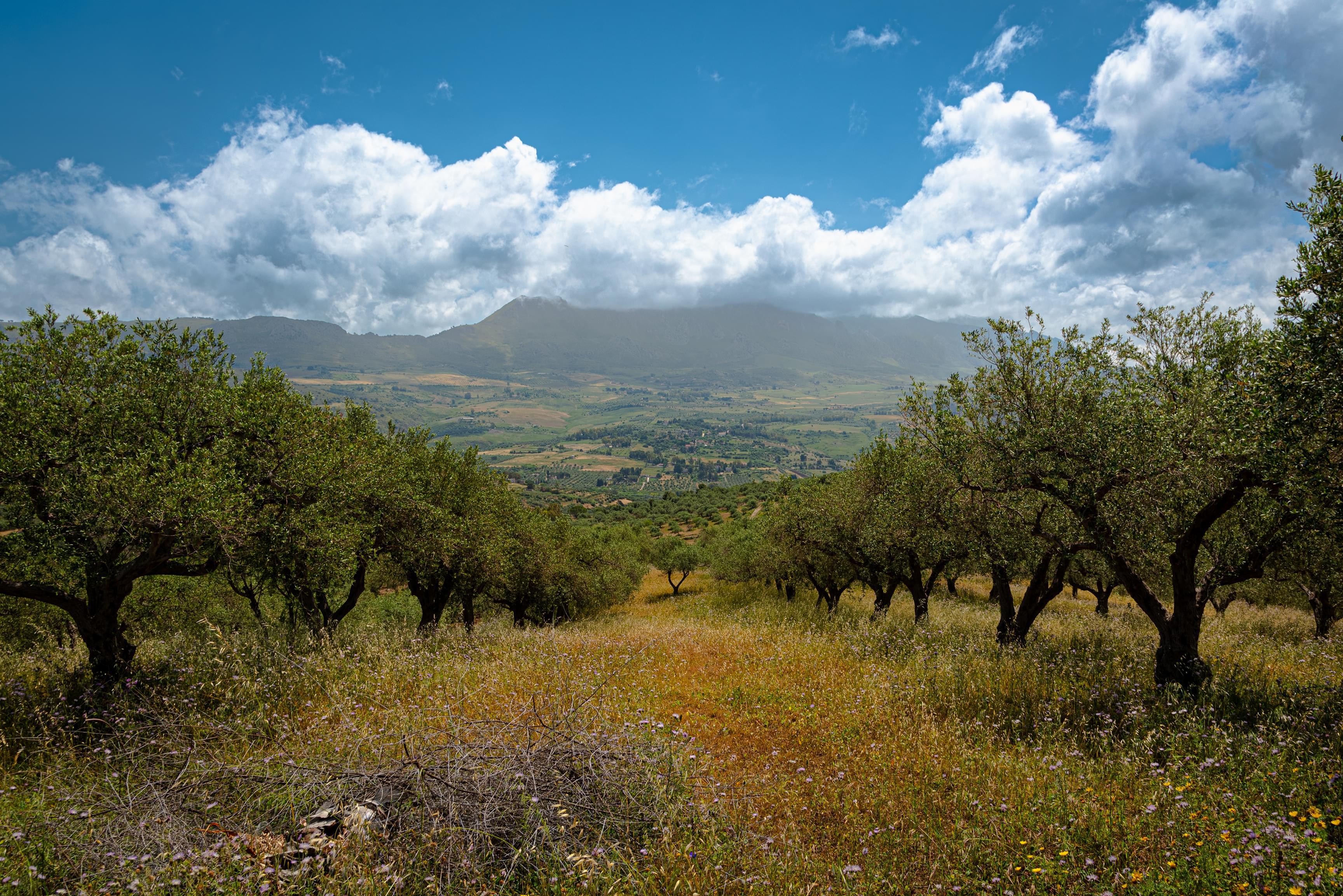
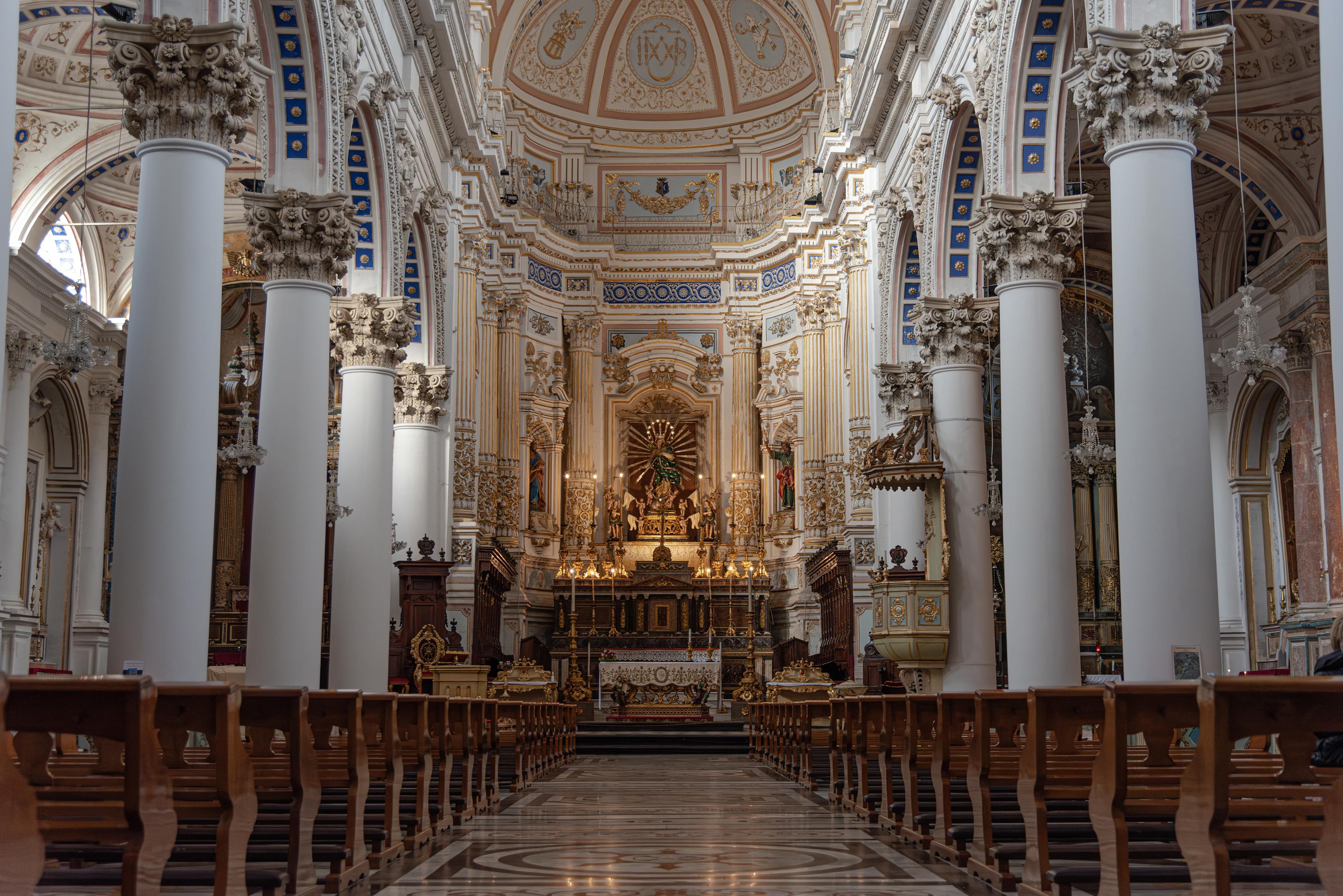
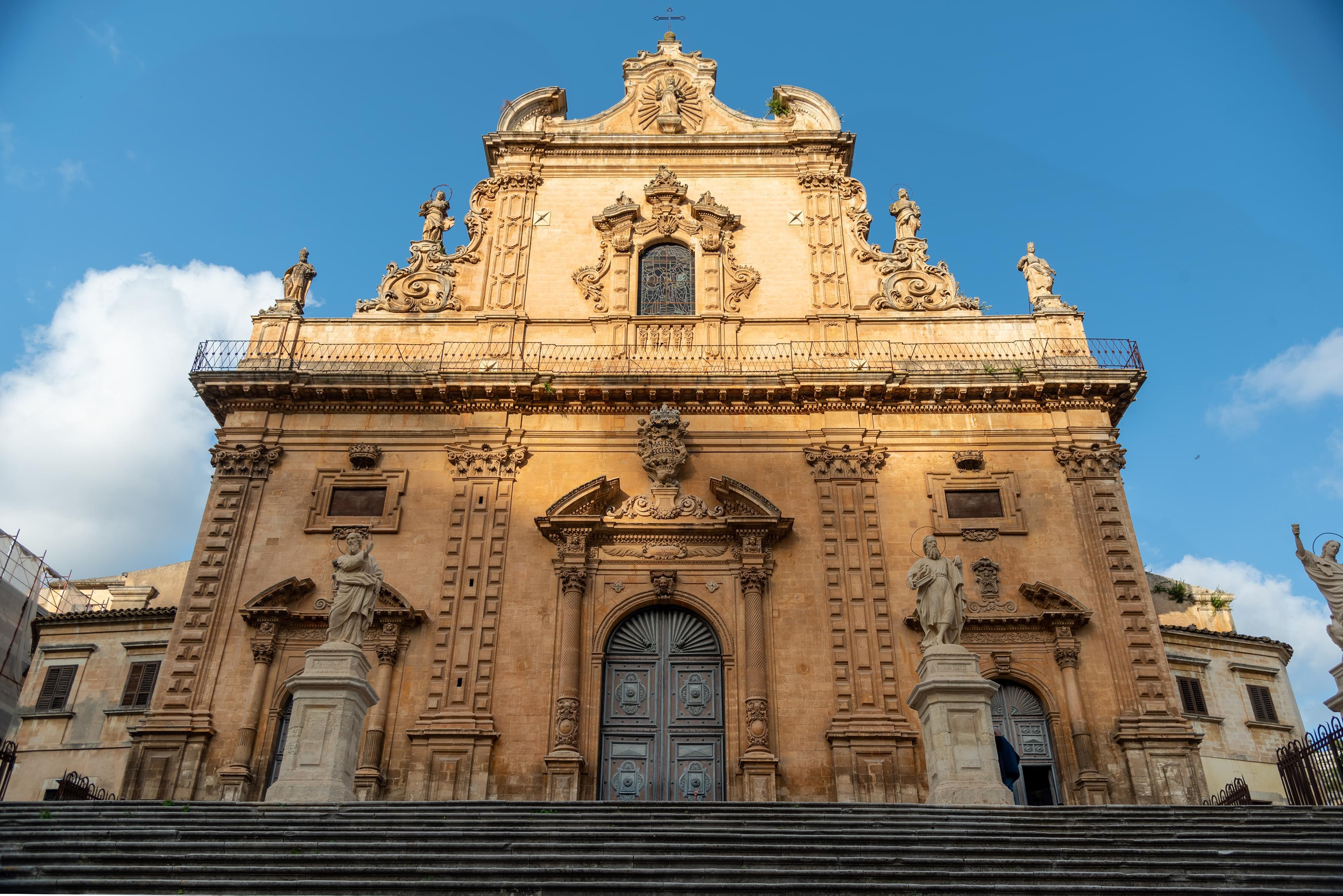
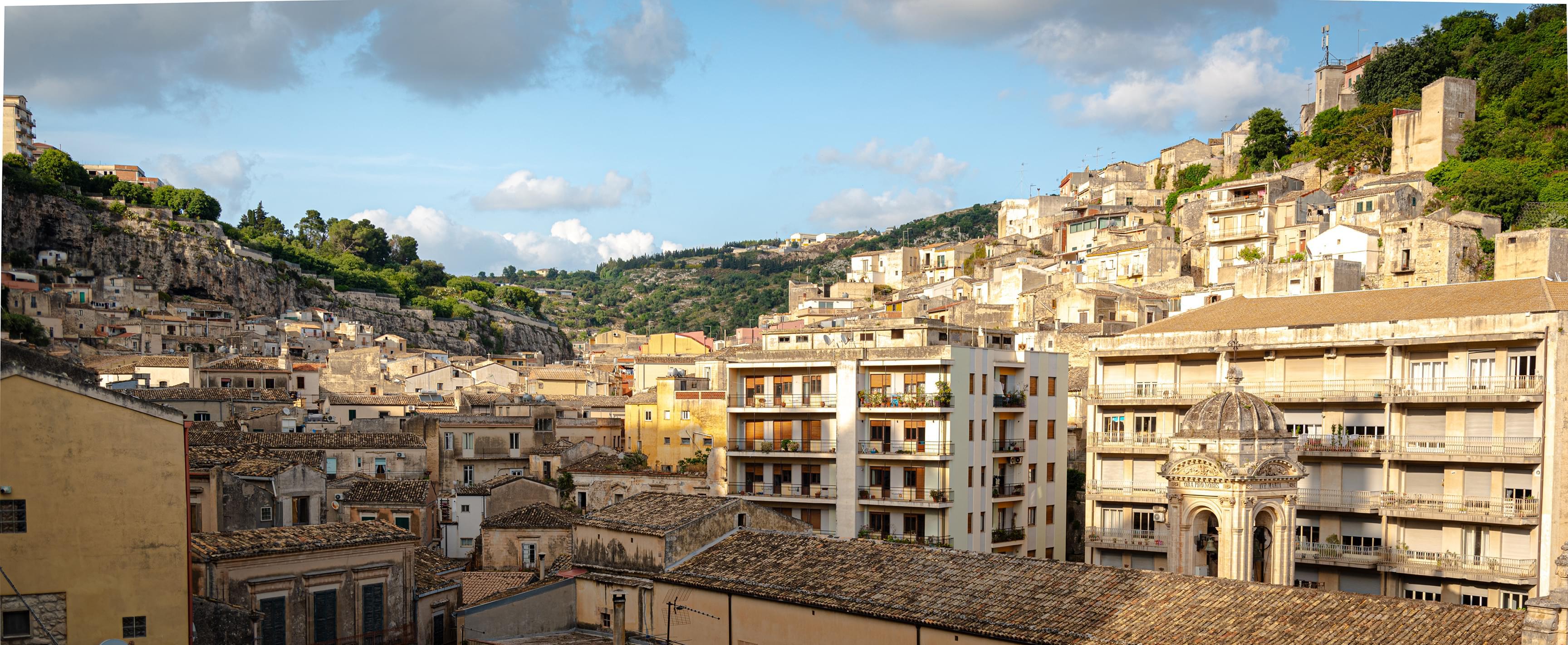
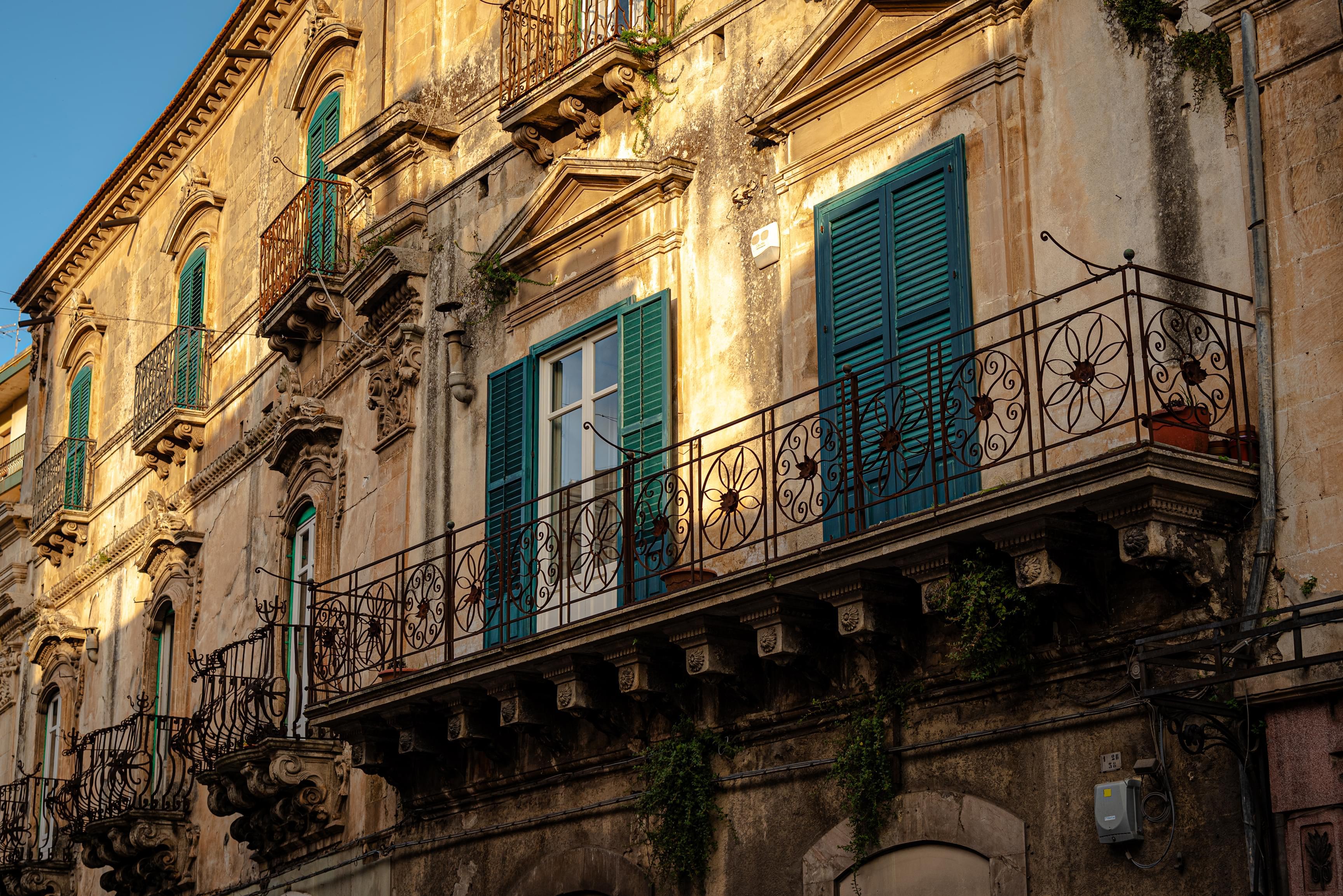
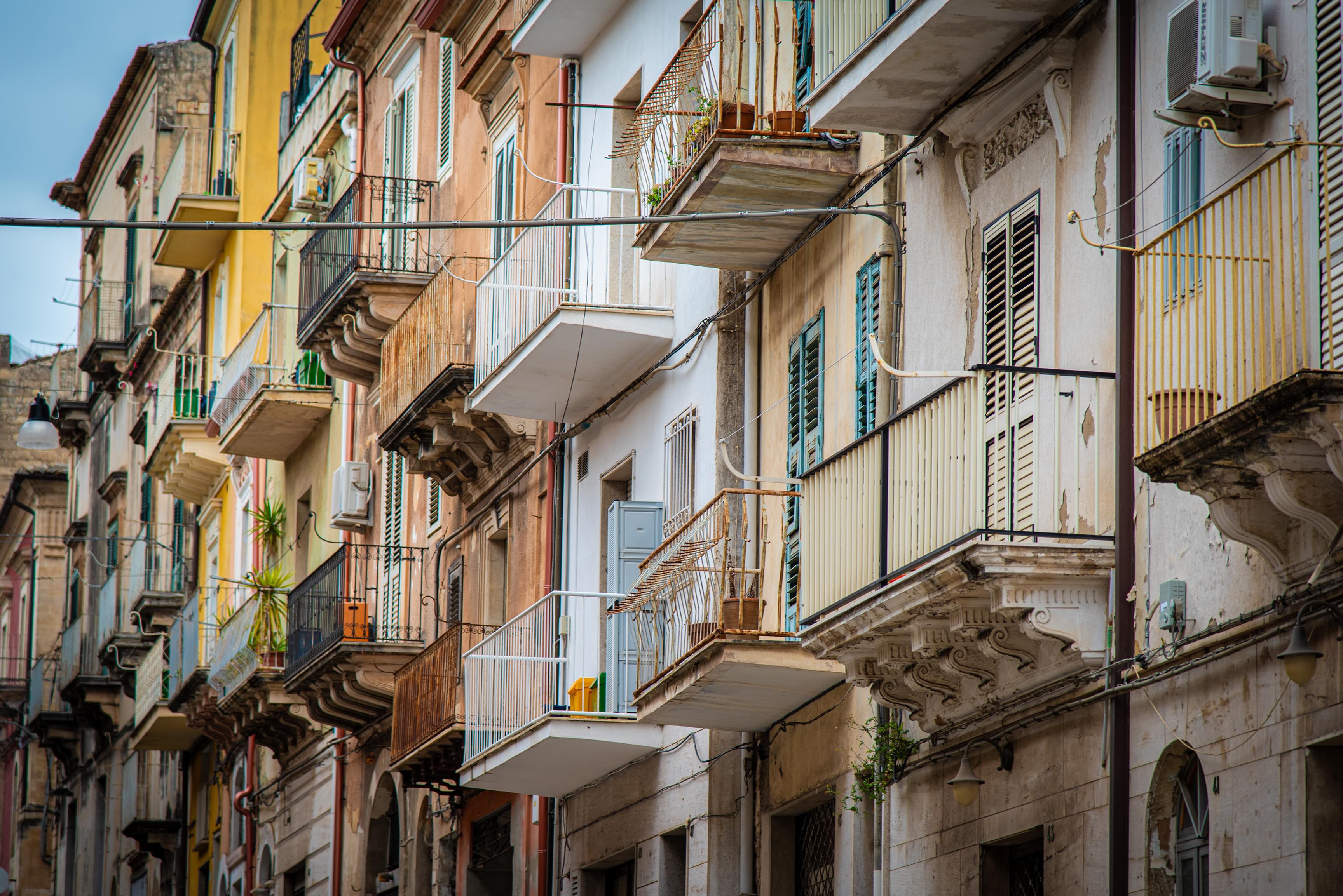
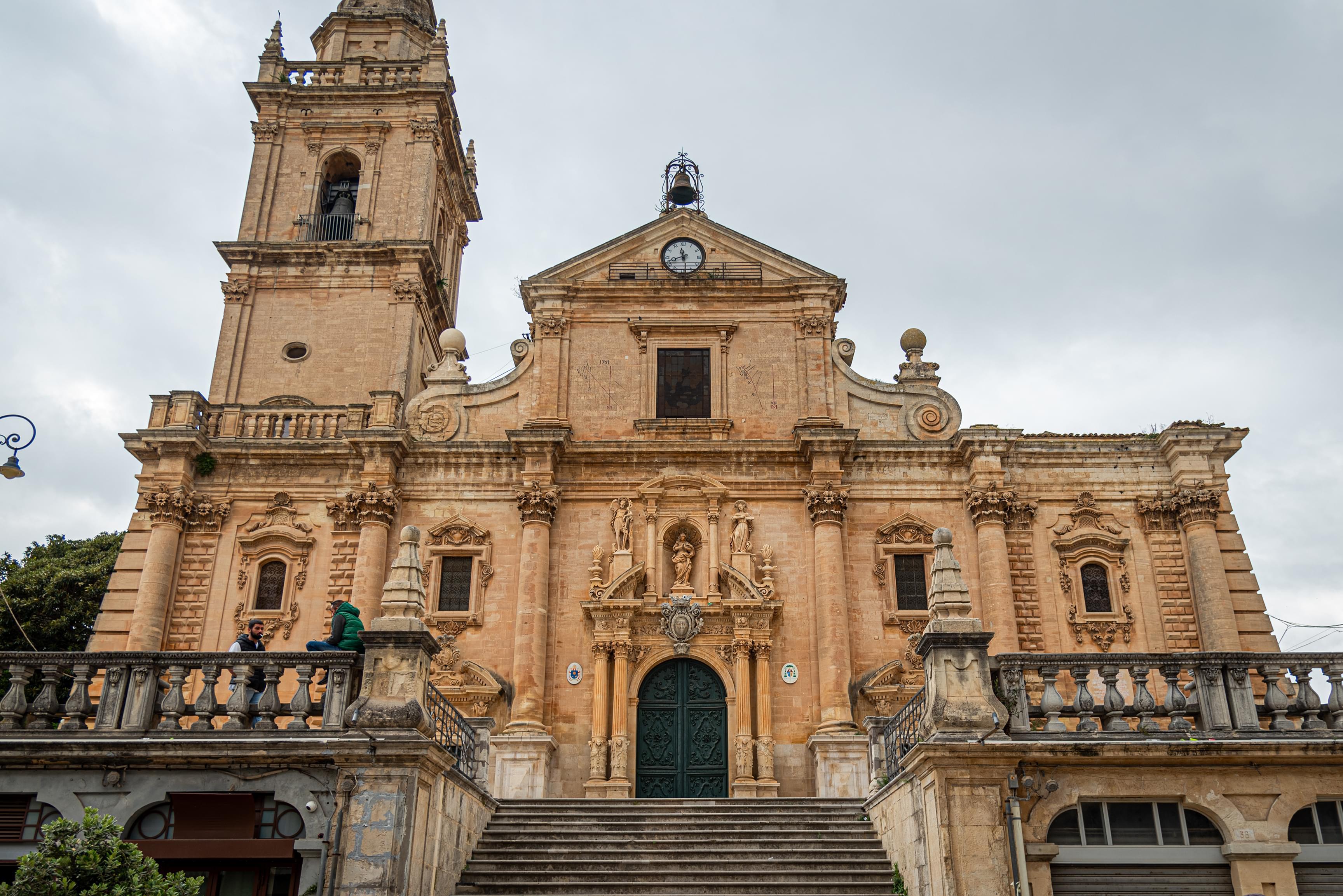
We wandered around the island the following morning, enjoying the absolutely stunning views. The city's architecture was an almost golden hue, while the surrounding Sea had a beautiful crystal-clear turquoise. We walked through Piazza del Duomo with Syracuse Cathedral, the baroque 7th-century church, and Chiesa di Santa Lucia alla Badia, which features Caravaggio's "Burial of Saint Lucy." Next, it was down to the Fountain of Arethusa, where, according to Greek myths, the nymph Arethusa returned to Earth from her undersea home. We walked past Castello Maniace, an ancient military fort from around 1232, back into town, along the coast, past Spiaggia Diana nel Forte, and onward to our vehicles. We drove to the outskirts of town to Parco Archeologico Neapolis, home to ancient Greek and Roman theaters. There are also numerous relics of the Romans's time here. In addition to the historical things to see, there are many natural sights. Among the sheer cliffs of Temenites Hill are a series of caves, including the well-known Ear of Dionysius, a limestone cave known for its resemblance to the human ear and excellent acoustic properties. Afterward, it was back down to the small town of Noto. Noto is known for its incredible collection of Sicilian baroque architecture, many considered some of the best examples in Sicily. Noto was recognized as a UNESCO World Heritage Site in 2002. We were also here to experience the legendary Caffé Sicilia Noto, known as the "secret holy place" of Sicilian confectionery art. Its chef, Corrado Assenza, was featured in the Netflix series Chef's Table: Pastry in 2018. After this incredibly delicious experience, we returned to Siracusa for the night, enjoying a nice dinner overlooking the bay.
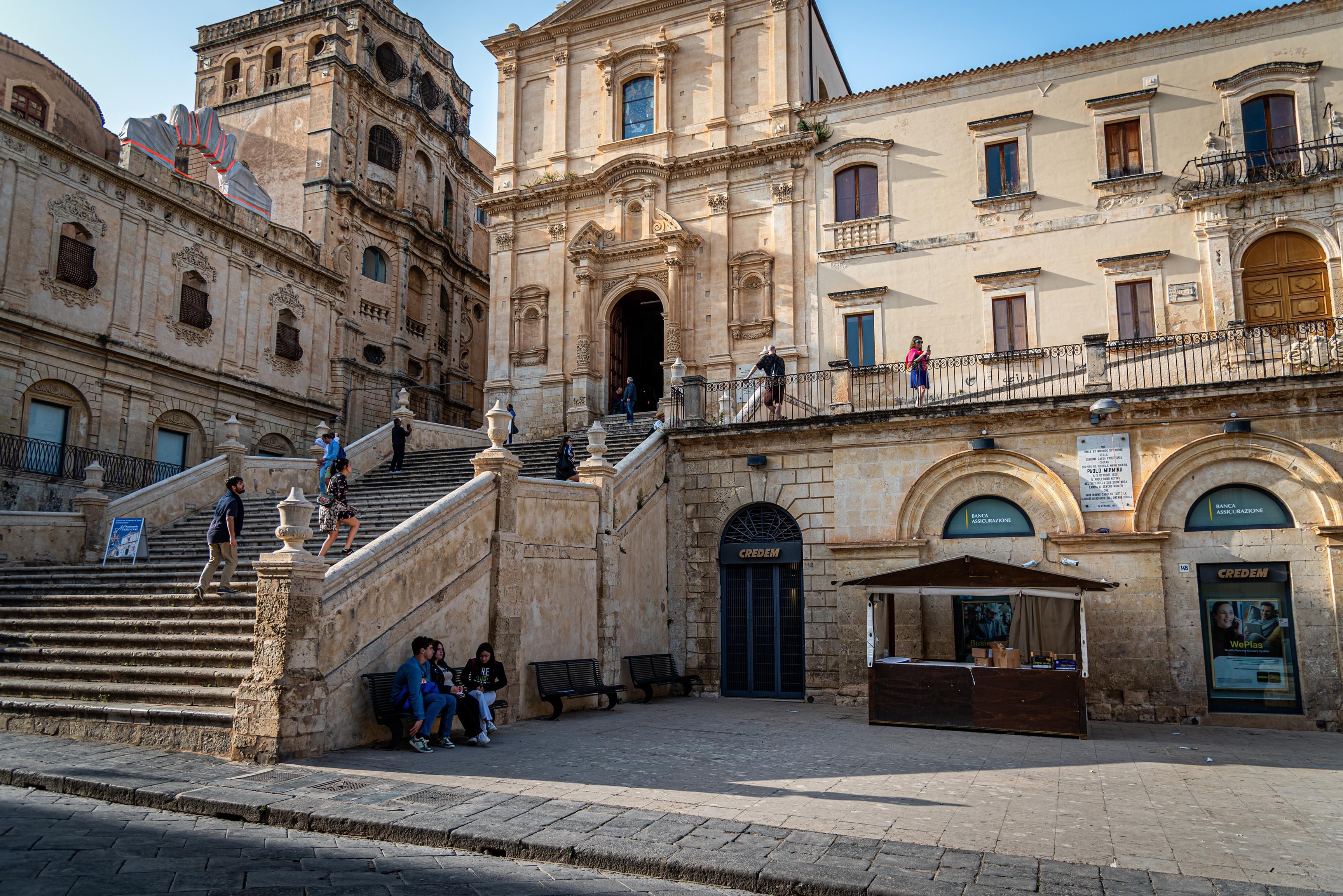
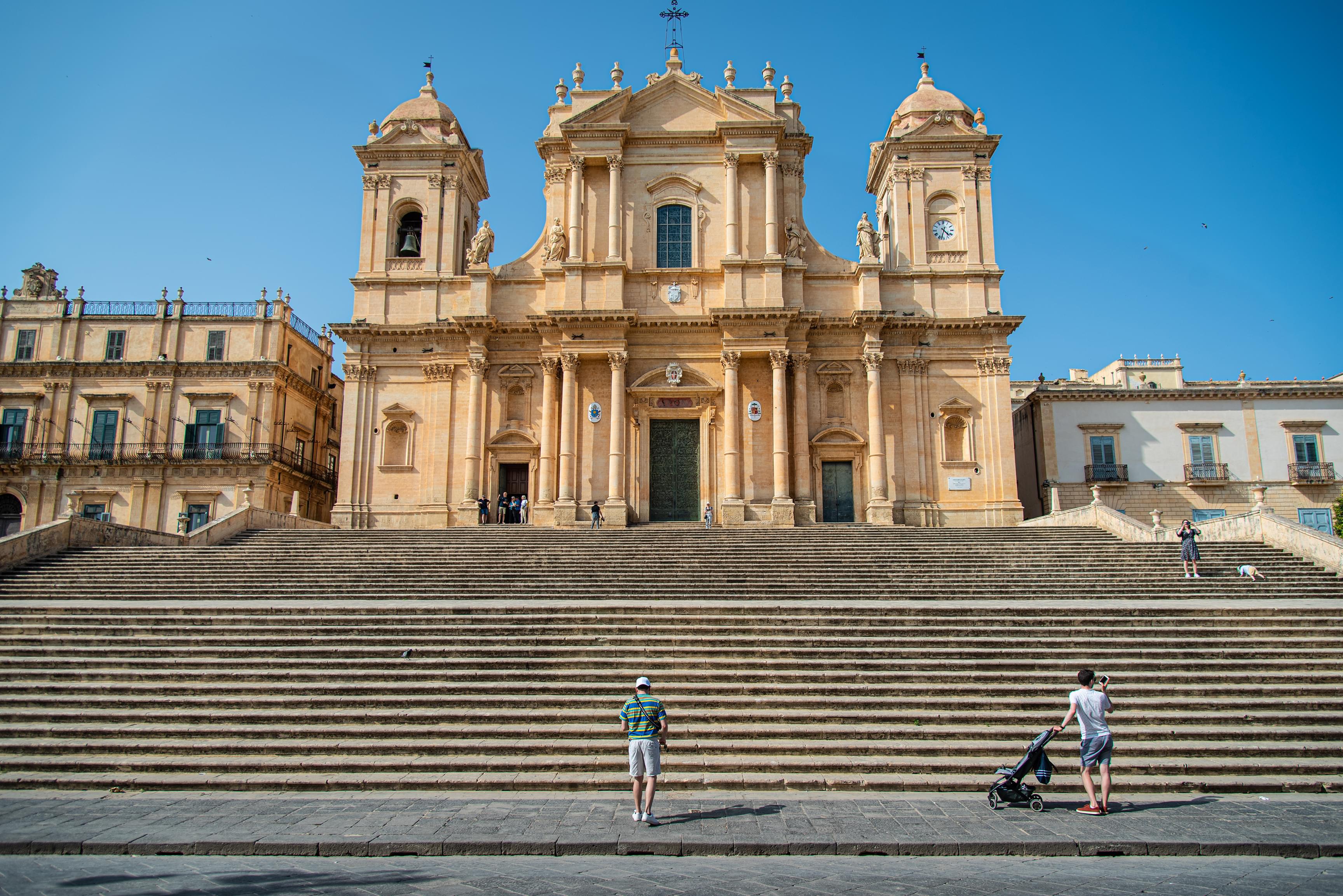
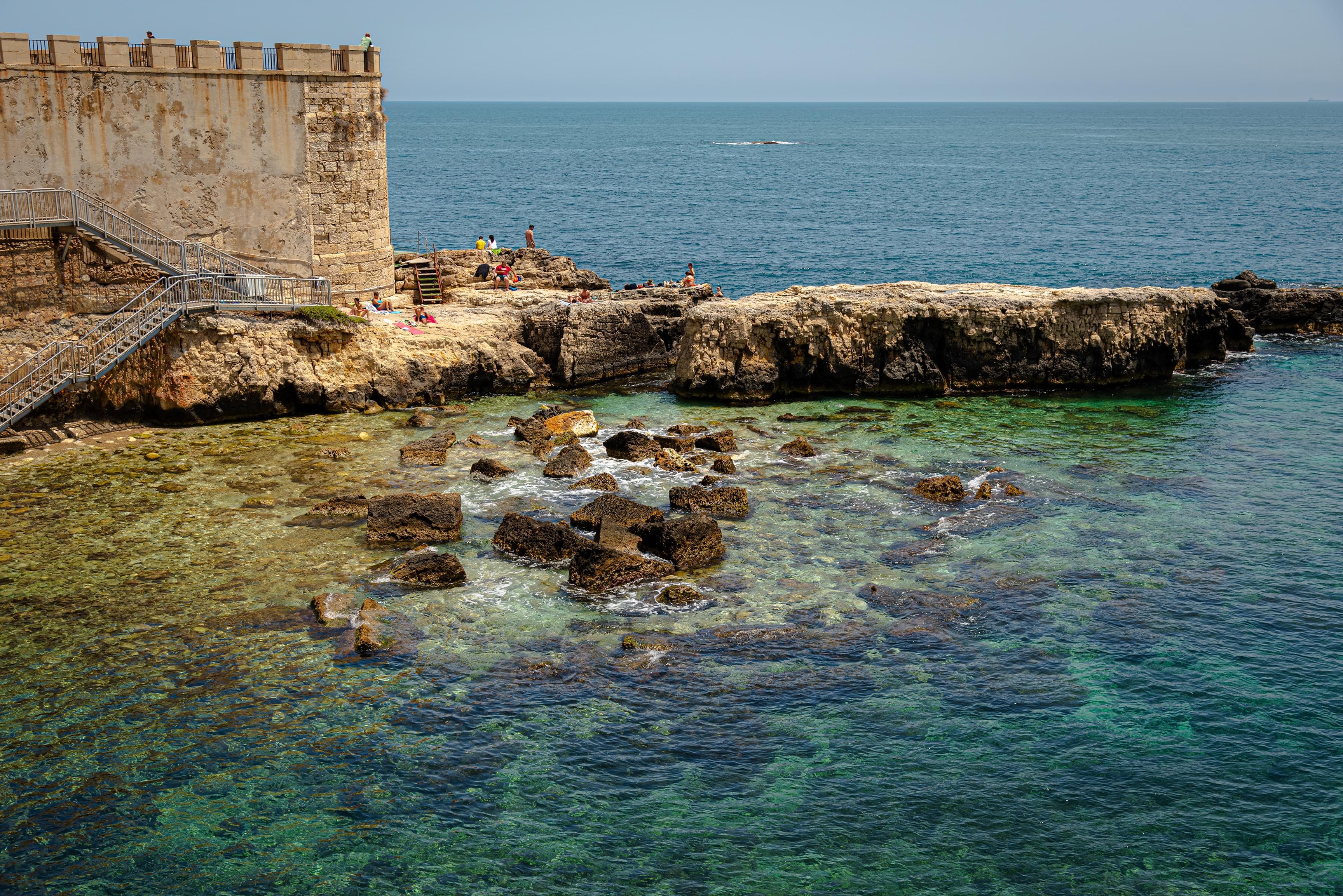
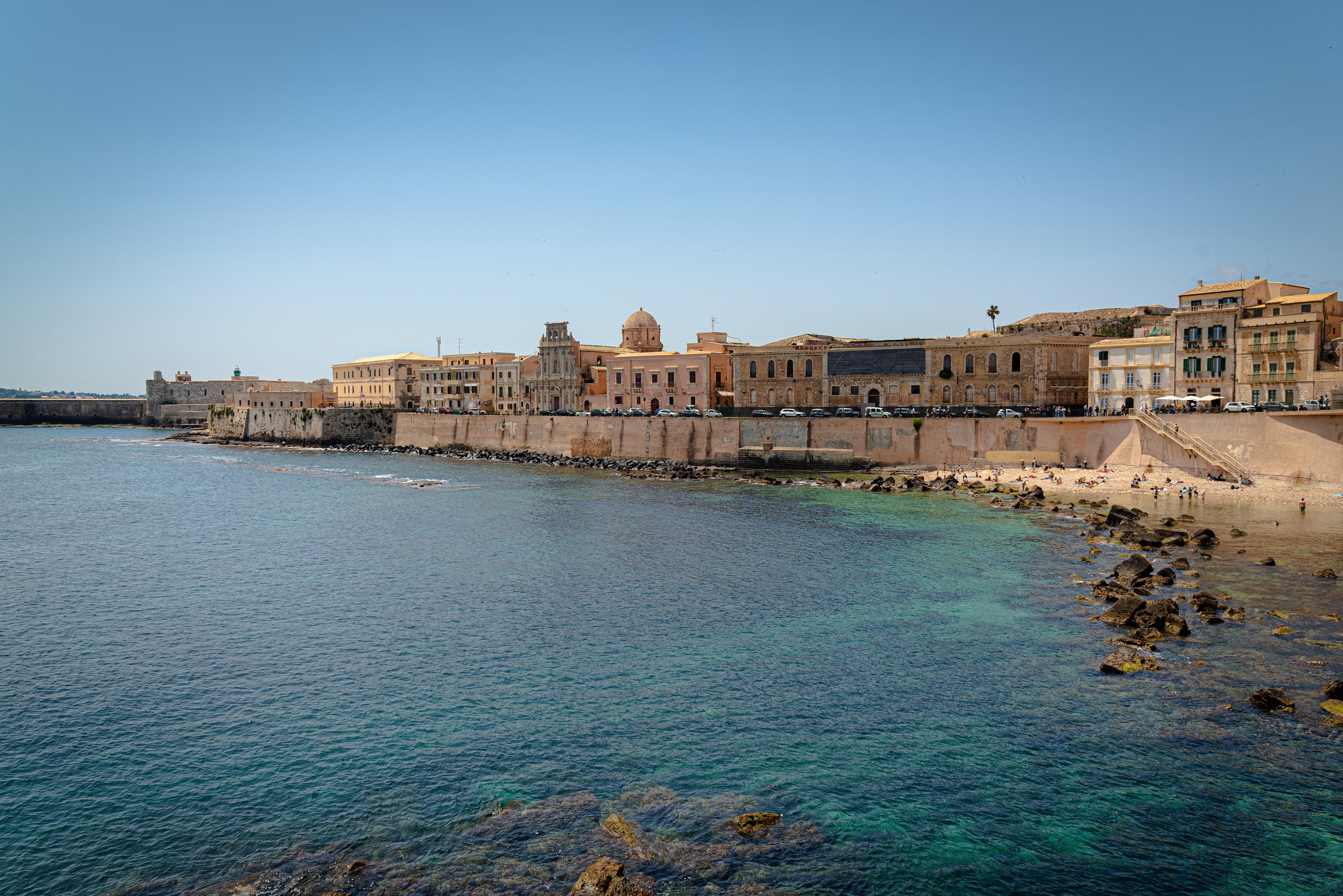
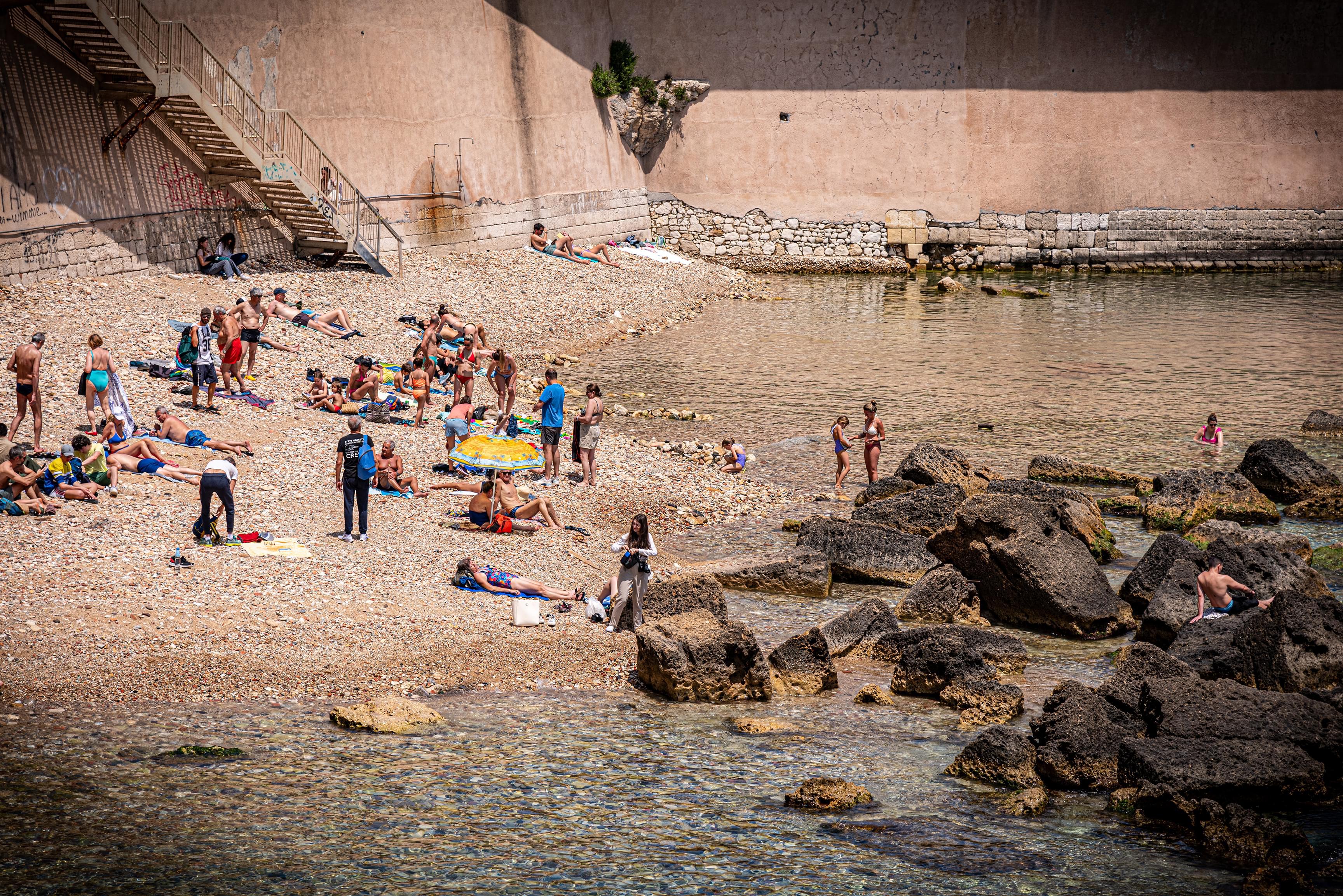
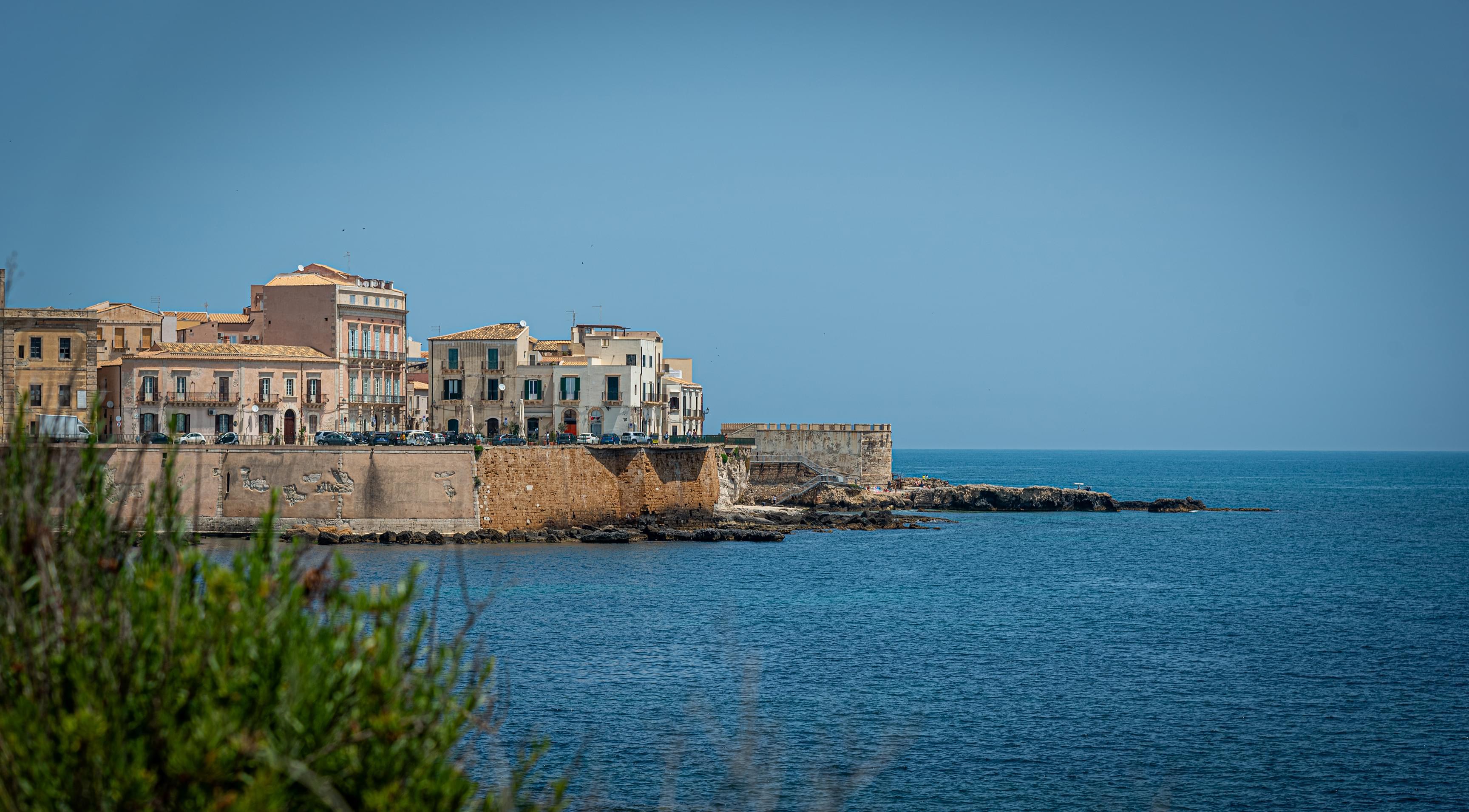
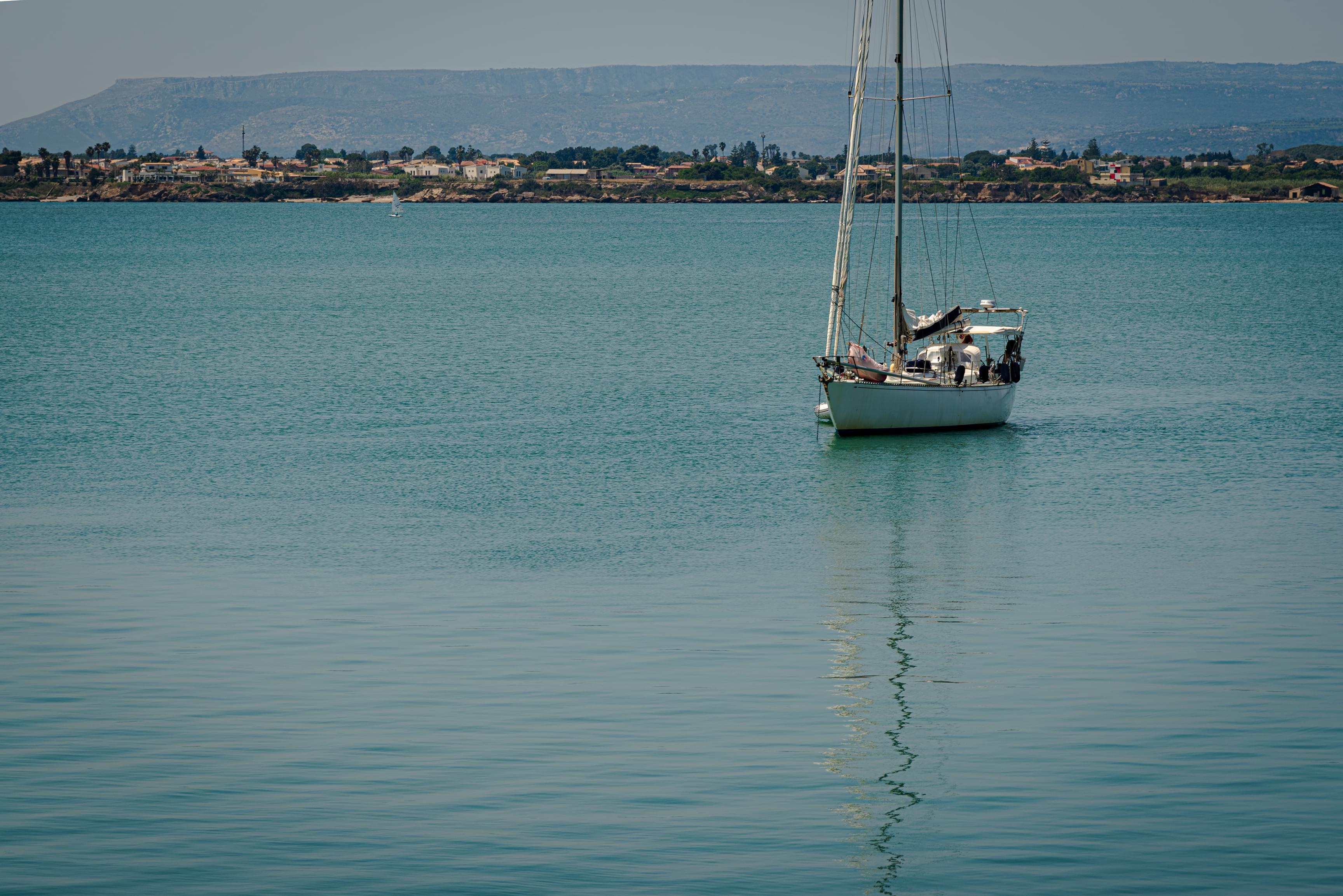
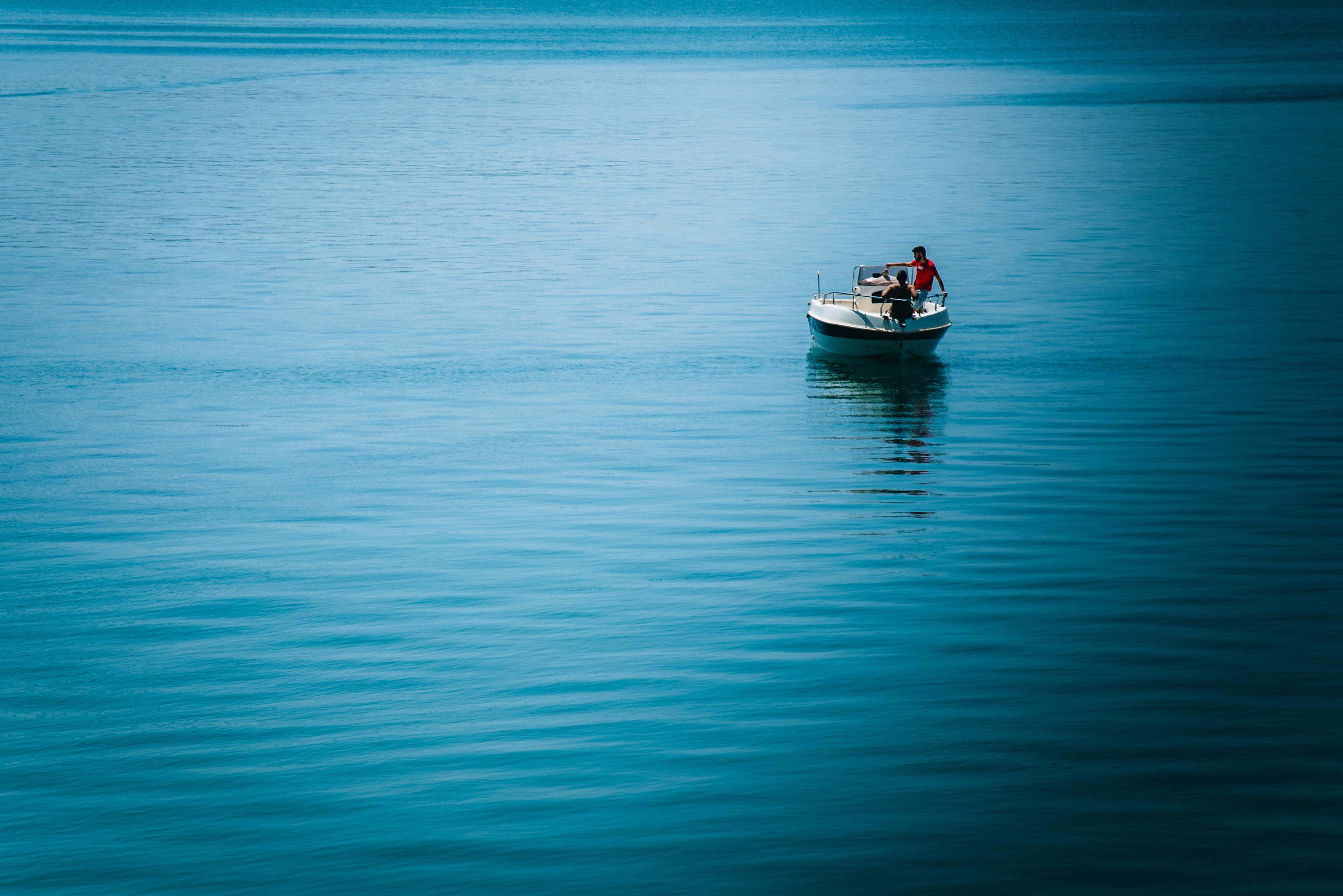
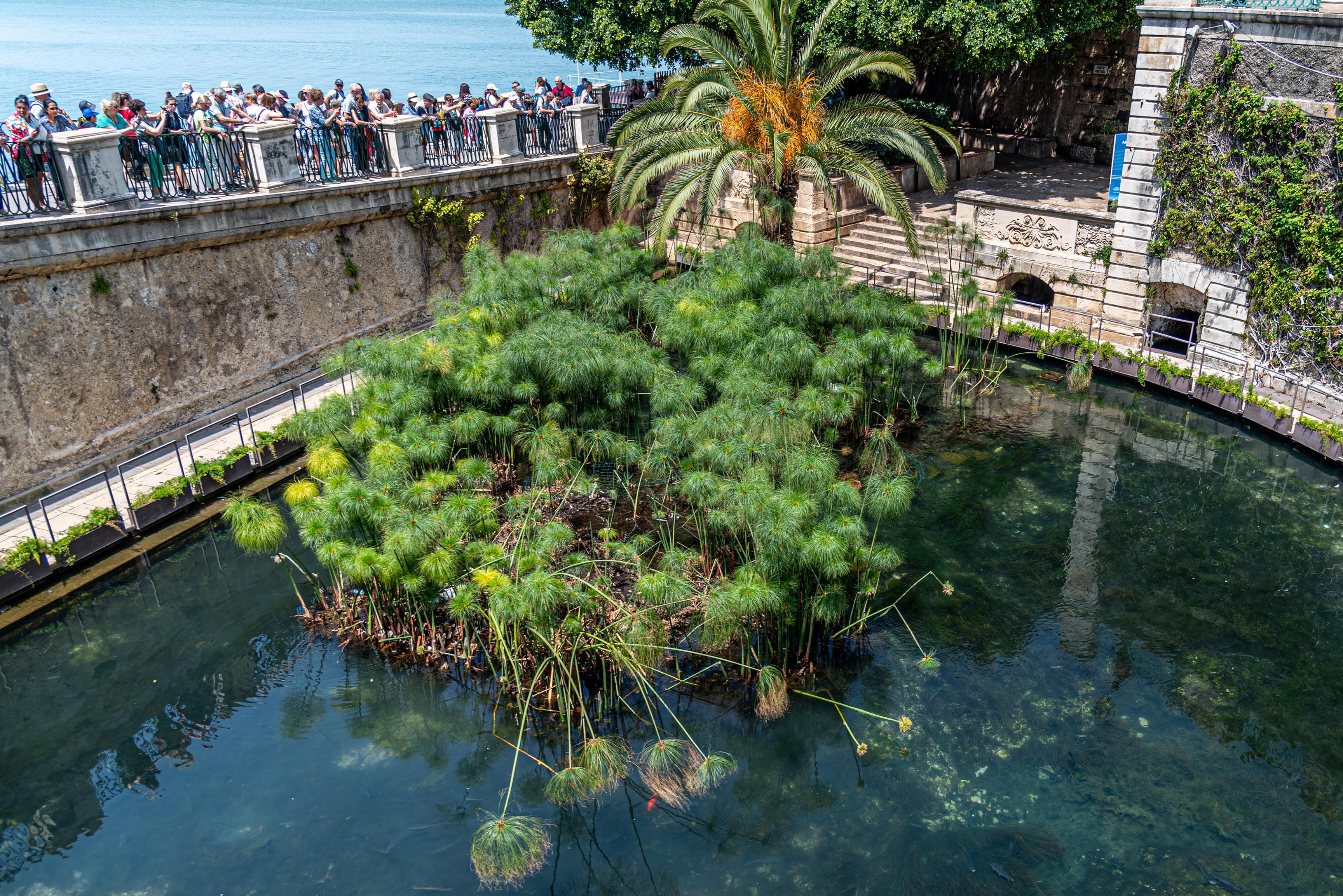
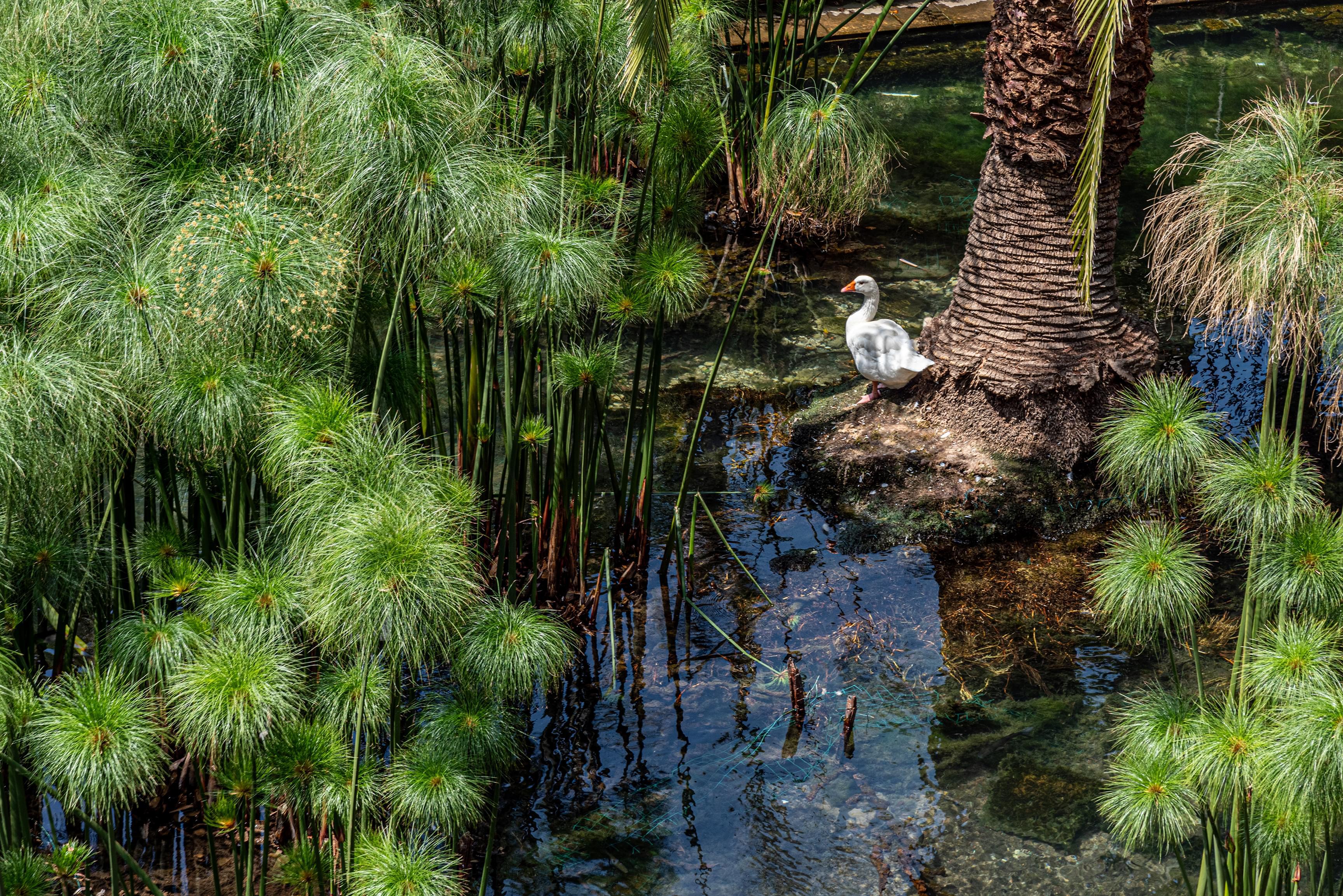
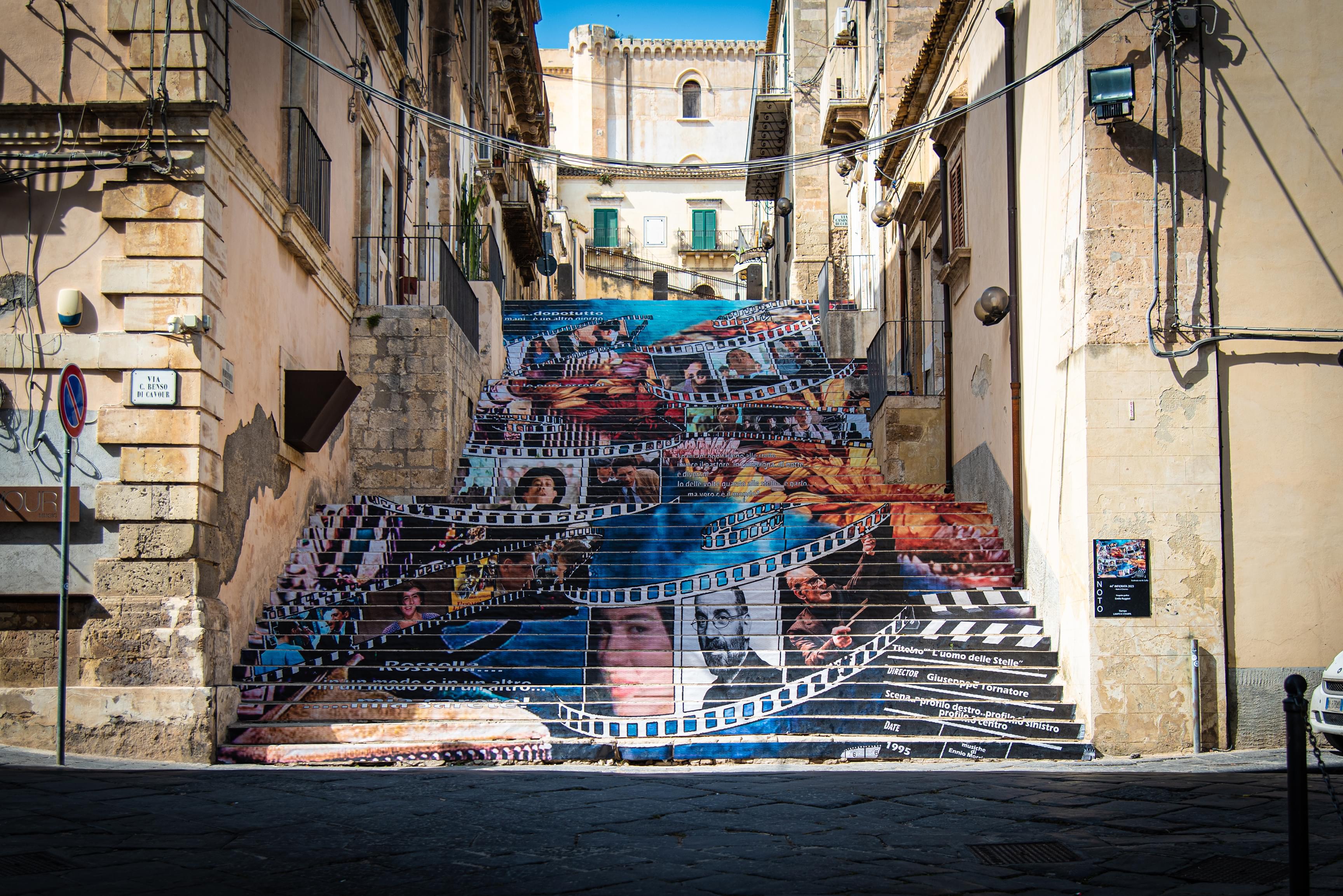
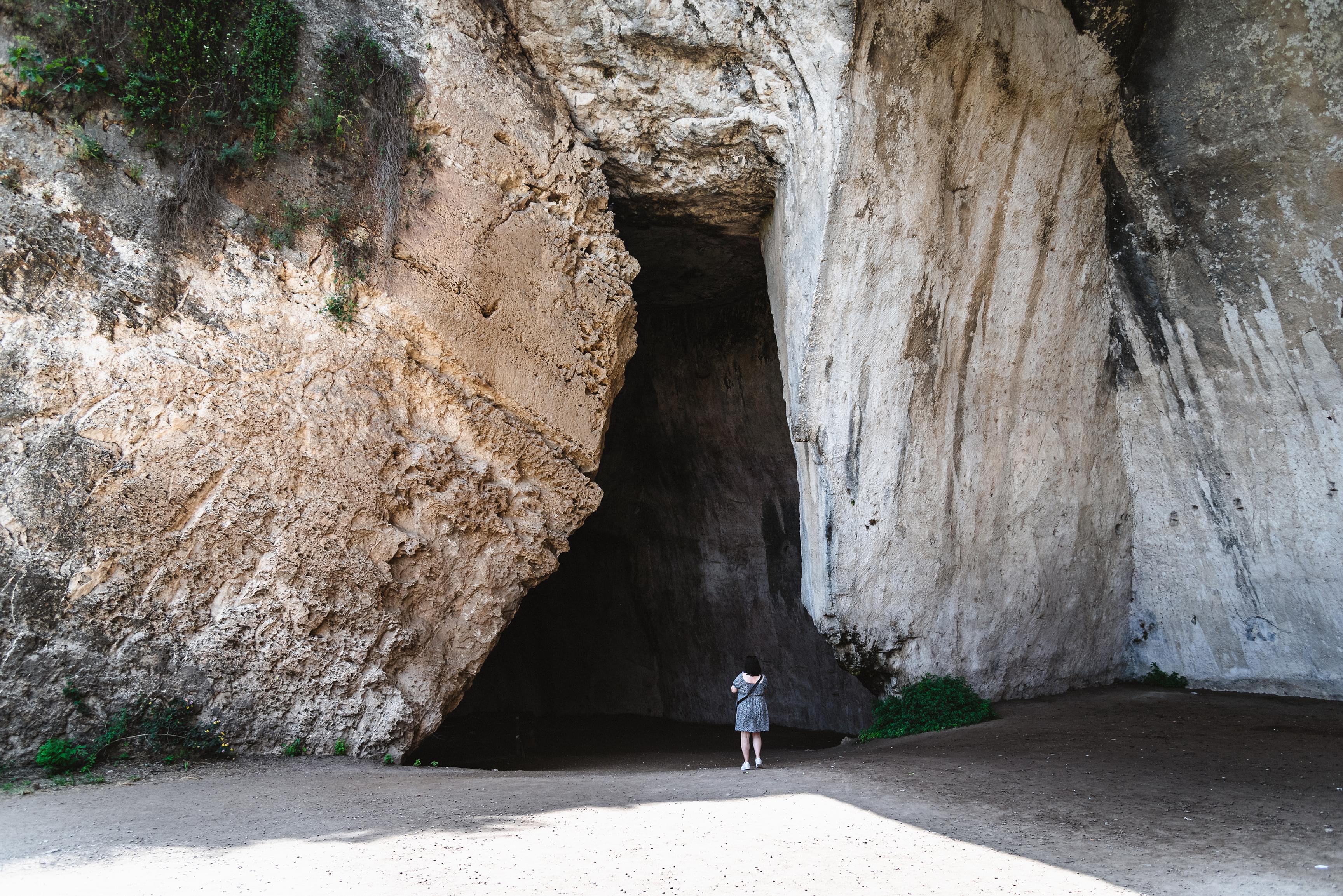
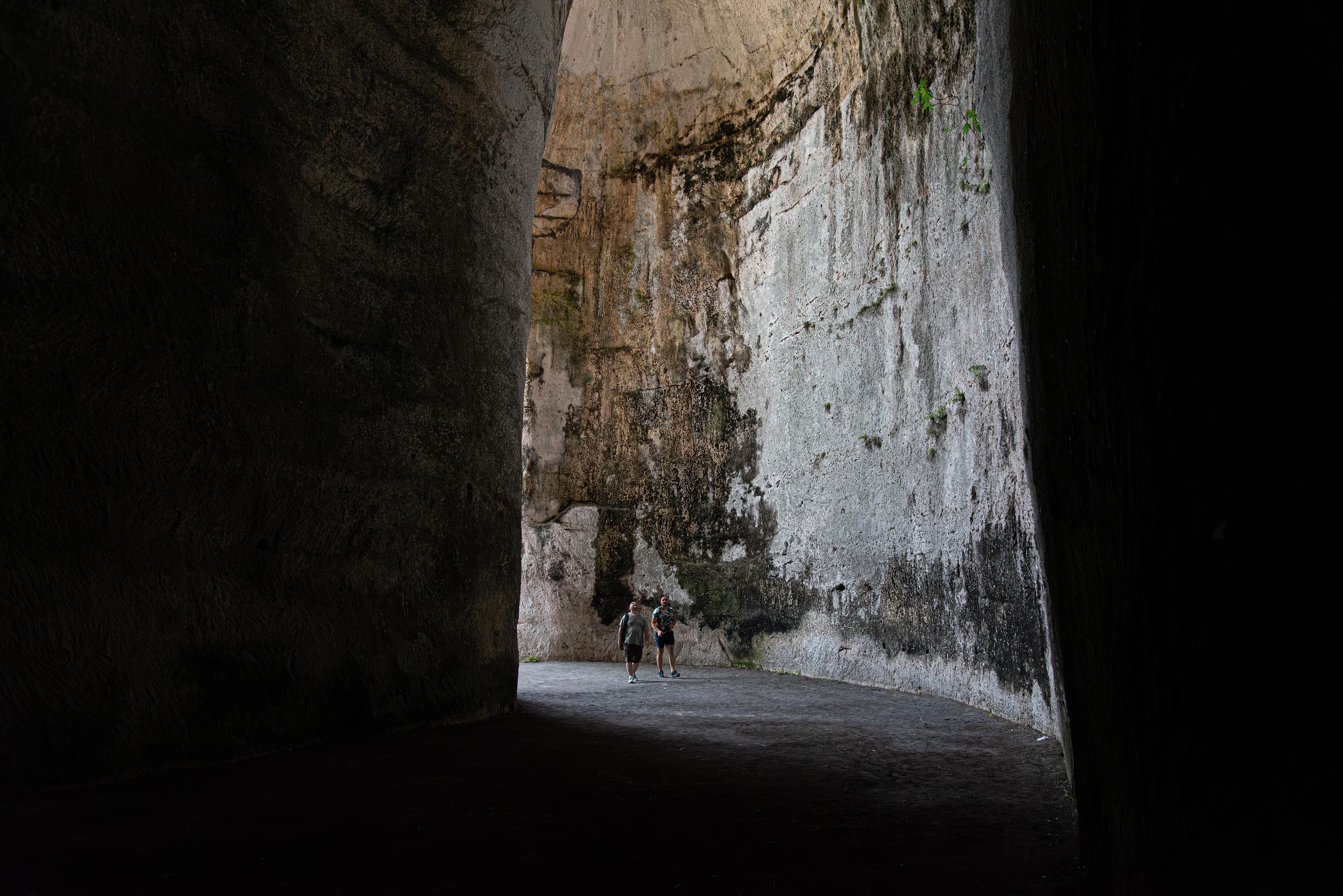
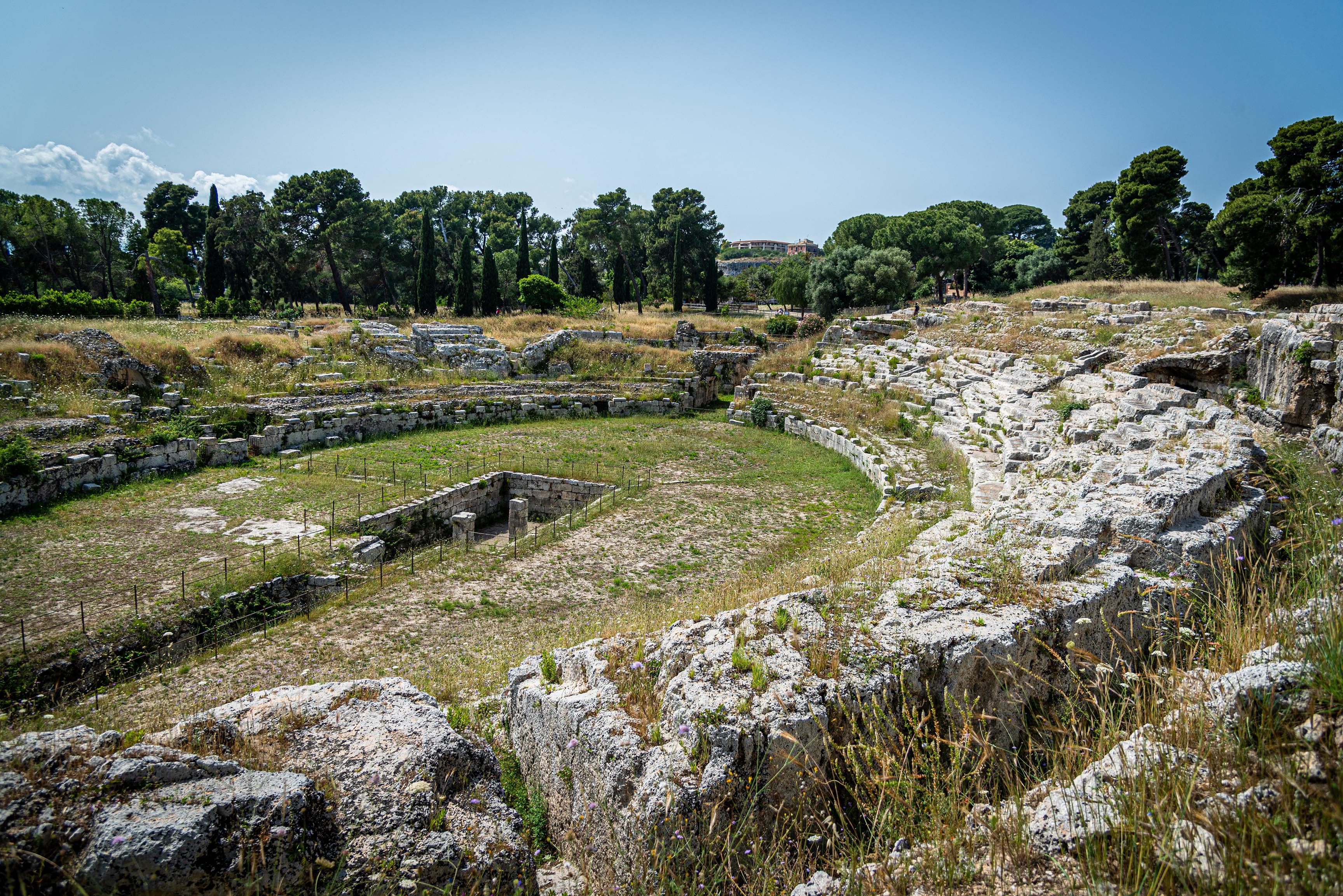
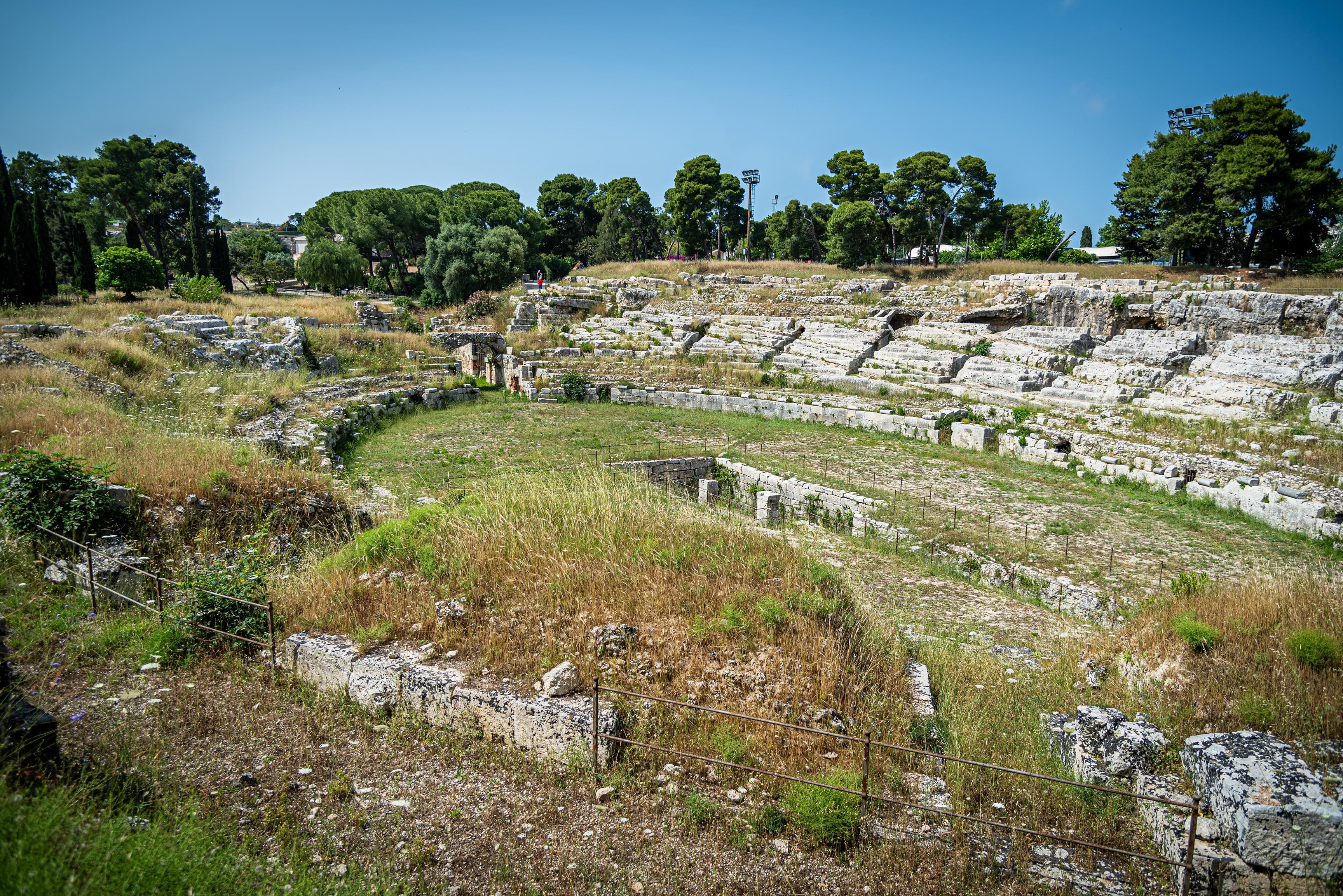
The following morning, we hopped back in the car and headed north. As we began to get closer to Catania, we got our first glimpse of Mount Etna off in the distance. It grew more imposing as we drove through Catania and up the coast on our way to Taormina. On the northeast coast of Sicily, Taormina shares a similar history to many other places here. Established around 396 BC, it has a rich history dating back to before the Ancient Greeks. The Taormina Theatre, an Ancient Greek theatre, is a remarkably well-preserved example of this history that is still visible today. We arrived in the early afternoon and were immediately taken back by the scenic views of the Ionian Sea and Mount Etna. This town has a vibrant, colorful vibe with lush green trees and other colorful plants. We stopped at Piazza Duomo with the notable church Duomo di Taormina before having a delicious lunch at Tischi Toschi, a renowned local restaurant that serves local Sicilian cuisine. Afterward, we walked around town, past San Domenico Palace, the hotel featured in "White Lotus," up to Piazza IX Aprile for some epic panoramic views, over to Villa Comunale di Taormina, a luxuriant, peaceful garden before ending up at Teatro Antico di Taormina, the Ancient Greek theatre mentioned earlier. After taking some time to appreciate everything, we headed back and took off to our second stop in Catania. Catania is the second largest city in Sicily and sits at the foot of Mount Etna. It's renowned for its excellent seafood, street food, and rich culture. Unfortunately, we only got a tiny glimpse of this as it was starting to get late, and Catania deserves a few days on its own. We managed to get a glimpse of Basilica Cattedrale di Sant'Agata before returning to Syracuse. Once back in Syracuse, we had a nice, relaxing dinner at La Sciccheria, just outside our apartment.
The following day, we walked up past the remains of the Temple of Apollo and around the local market, admiring the morning's freshly caught fish, an impressive array of spices, and fresh produce. We finished up with a quick breakfast of espresso and granita on Piazza Archimede before heading back to the apartment to finish collecting our belongings. It was time to depart Syracuse and head to our next stop, Cefalu. We spent most of the day driving to Cefalu, arriving in the afternoon. After parking our car, we walked a short distance to Duomo di Cefalù to get the keys to our apartment. We spent the remainder of the afternoon shopping, walking down to the beach, and exploring the historic district of Cefalù, where we were staying. That evening, we had dinner at 22 Cucina Isolana, which served upscale local Sicilian cuisine. It was chosen at the last minute but became one of our most memorable meals on the trip. The food was exceptional, and the service was friendly and impeccable. Our table had an excellent view of the open, modern kitchen where you can watch the chefs work.
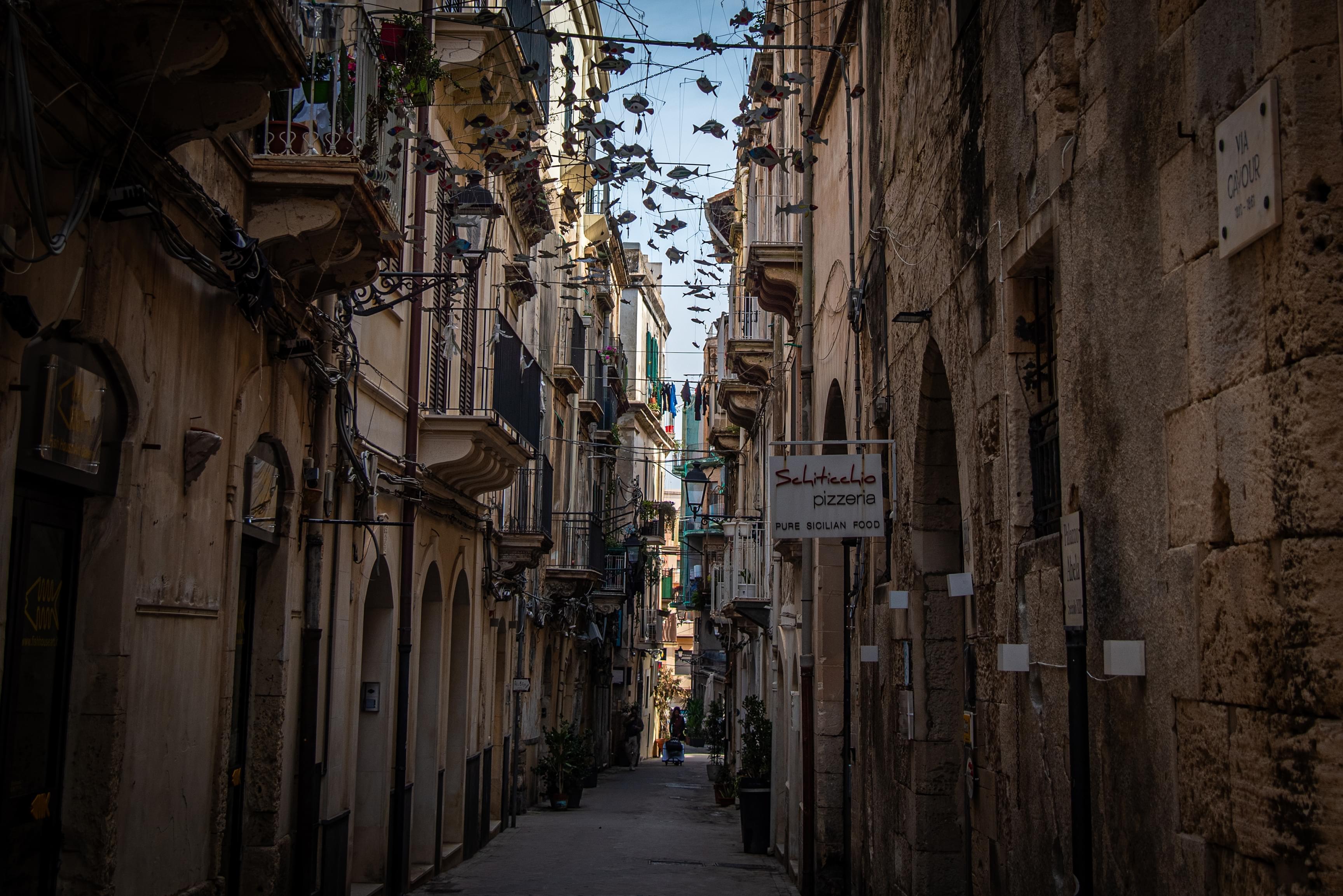
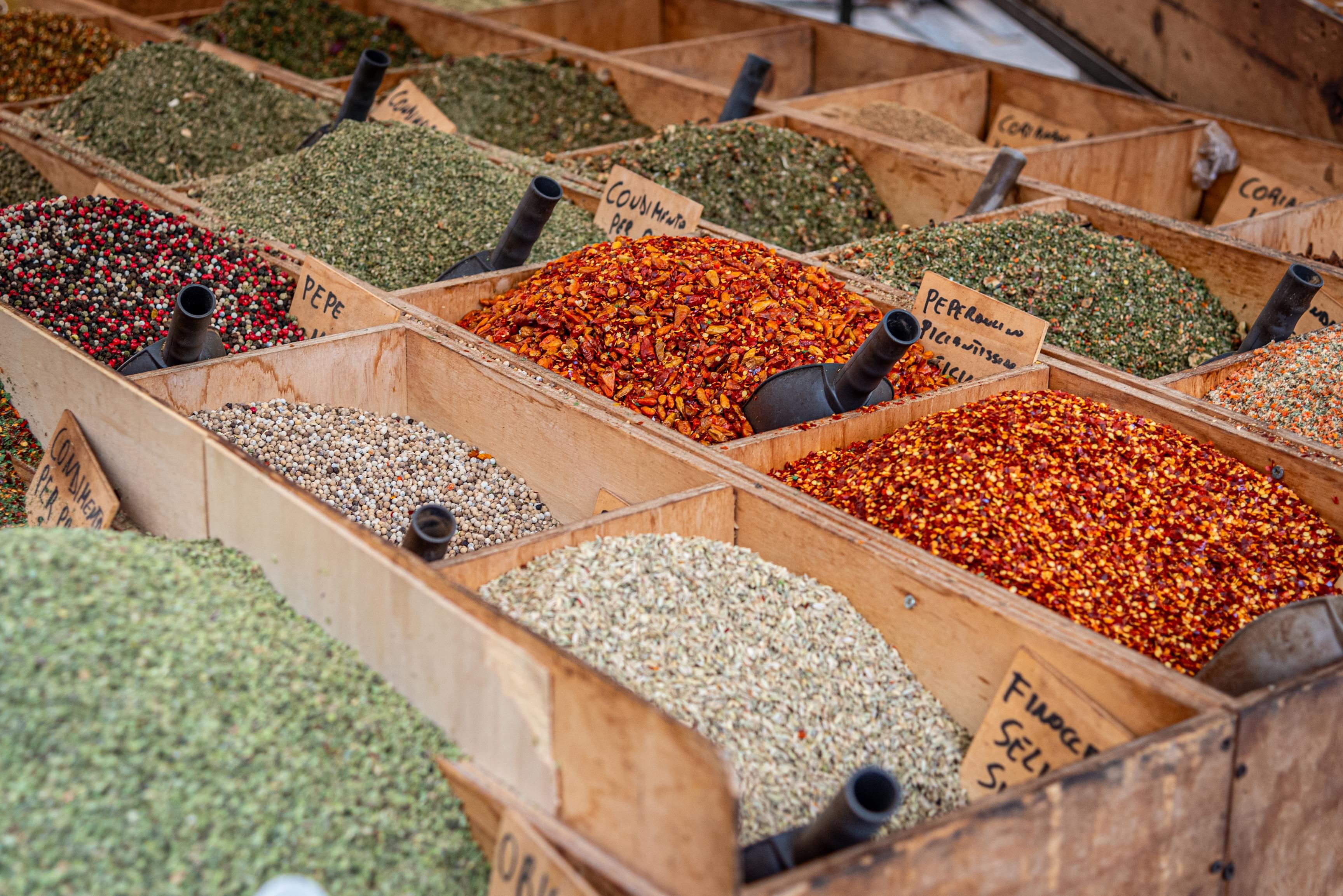
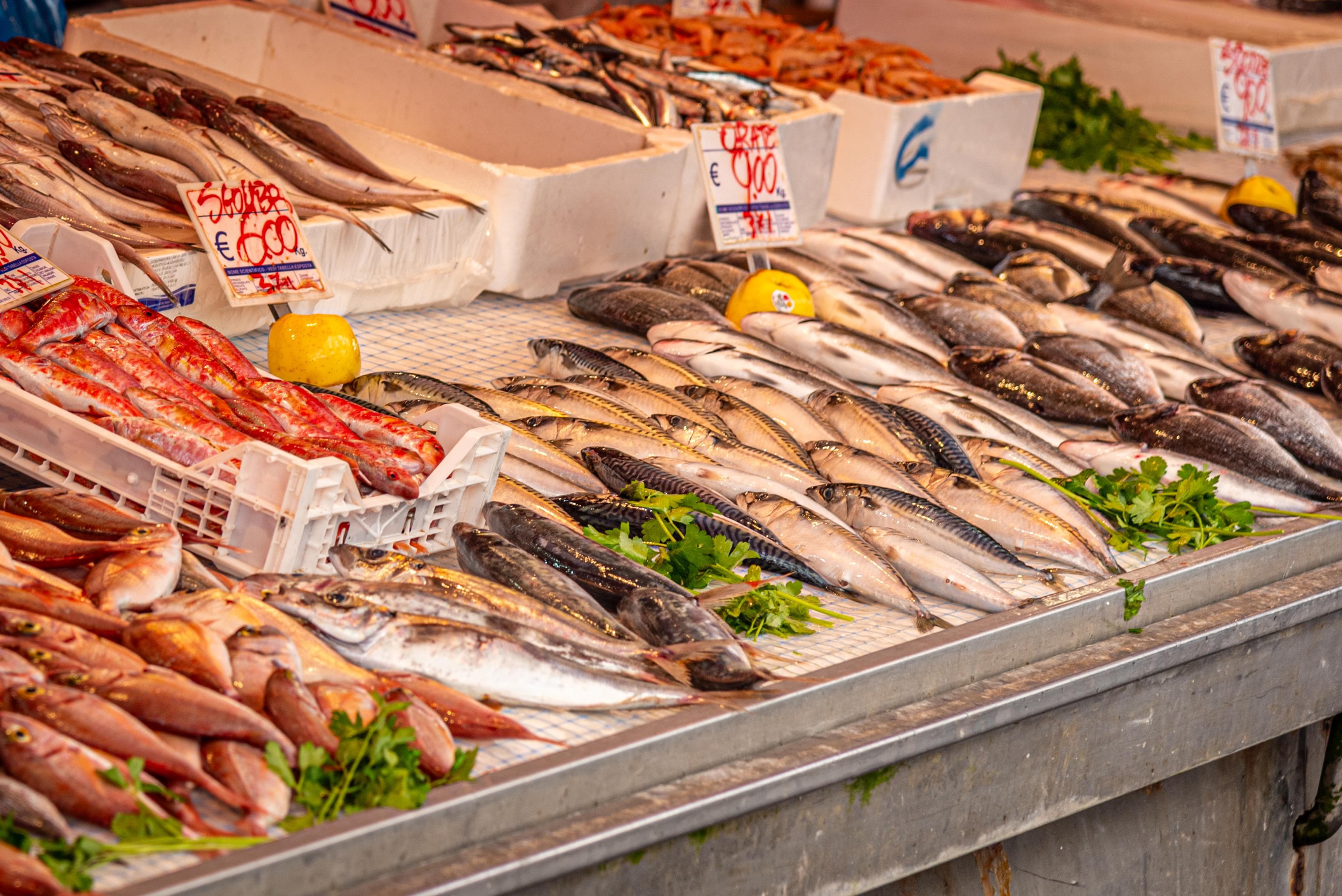
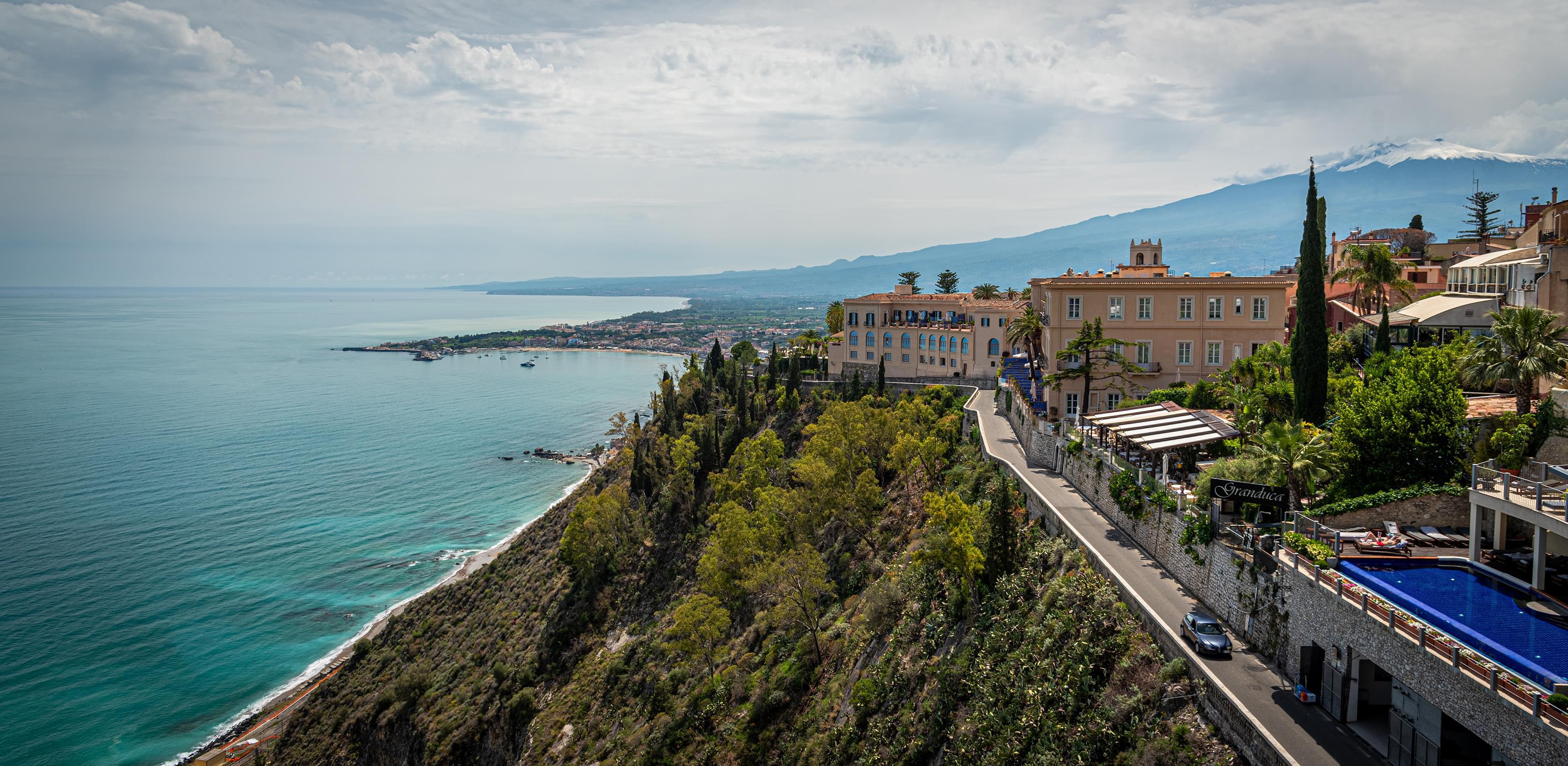
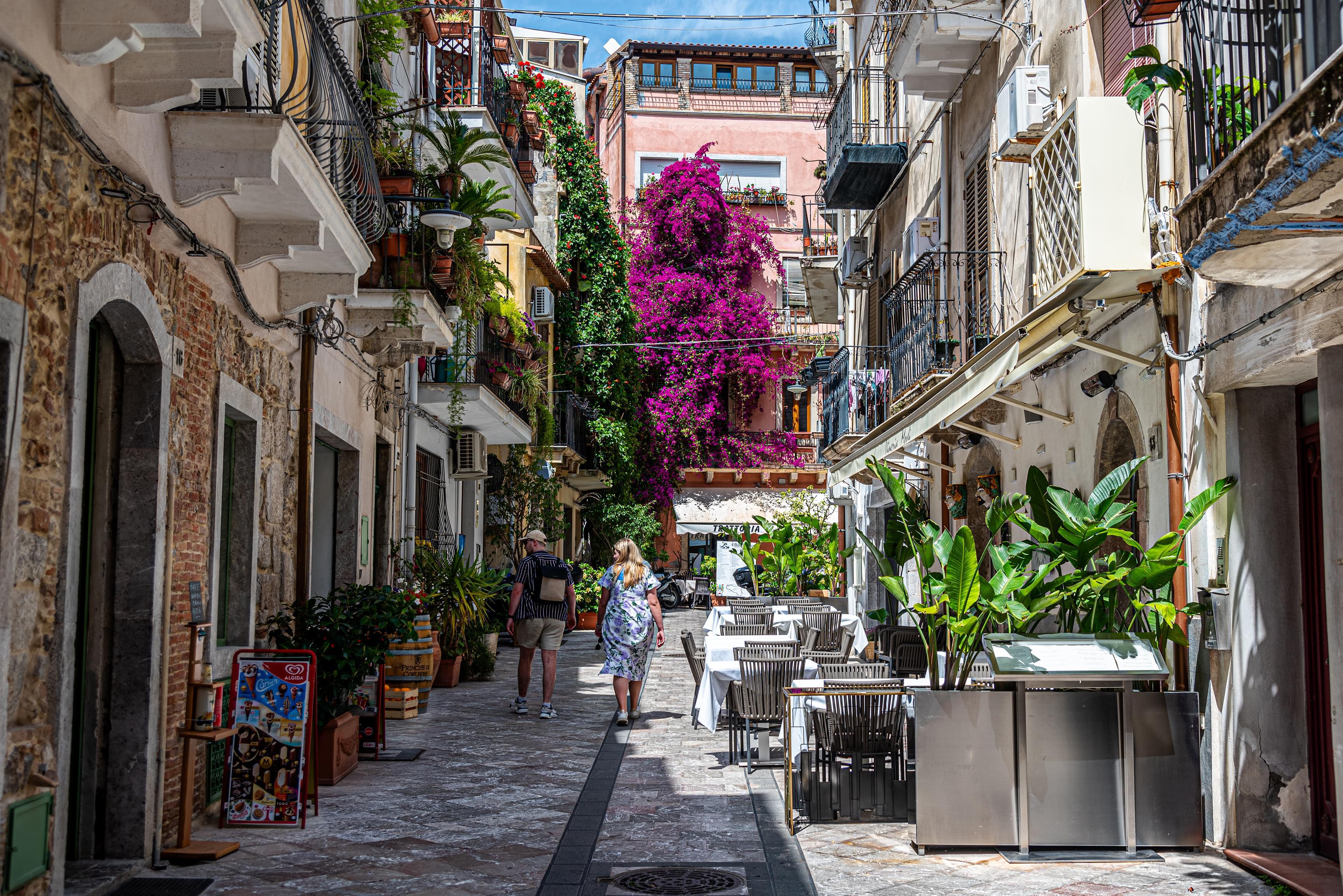
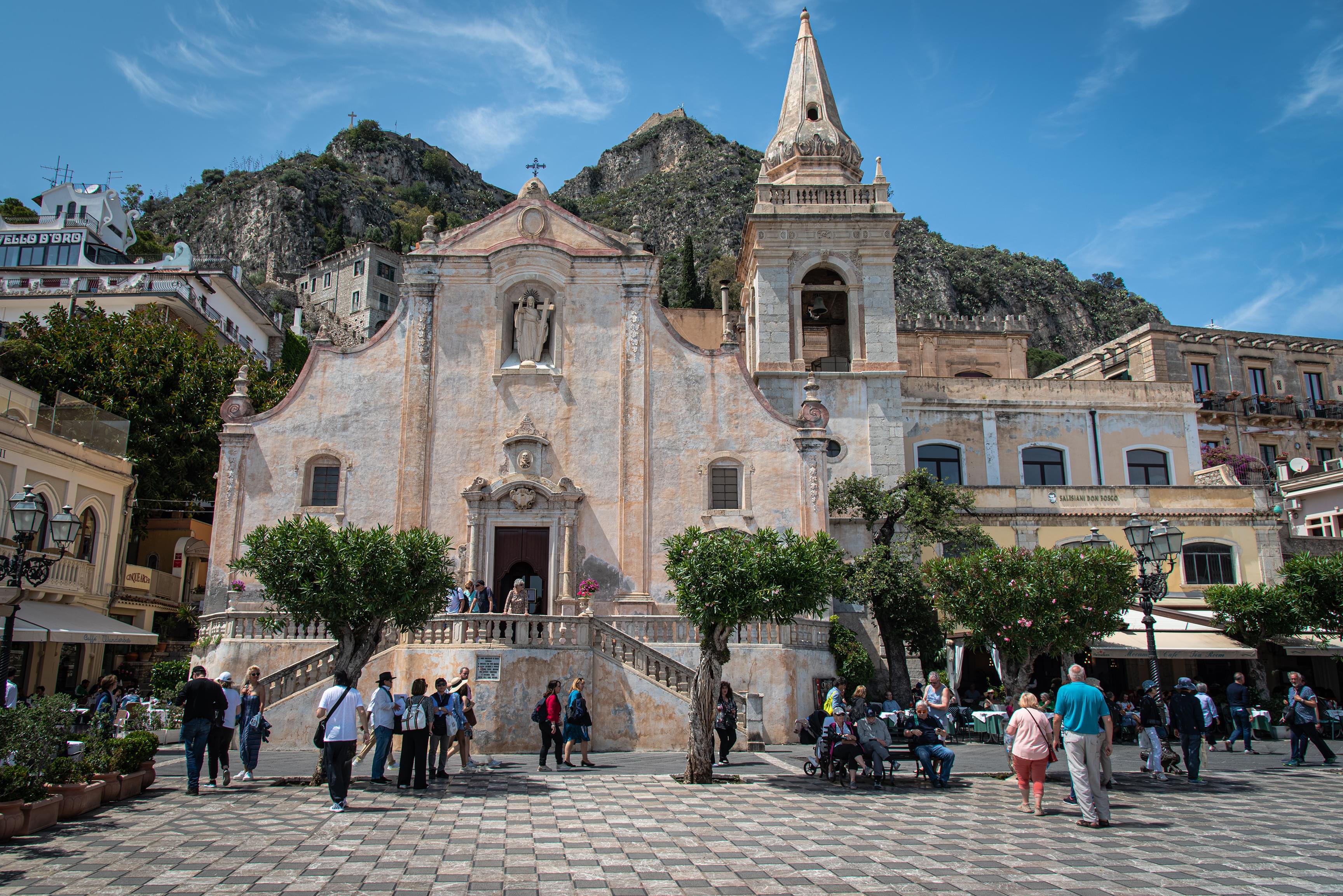
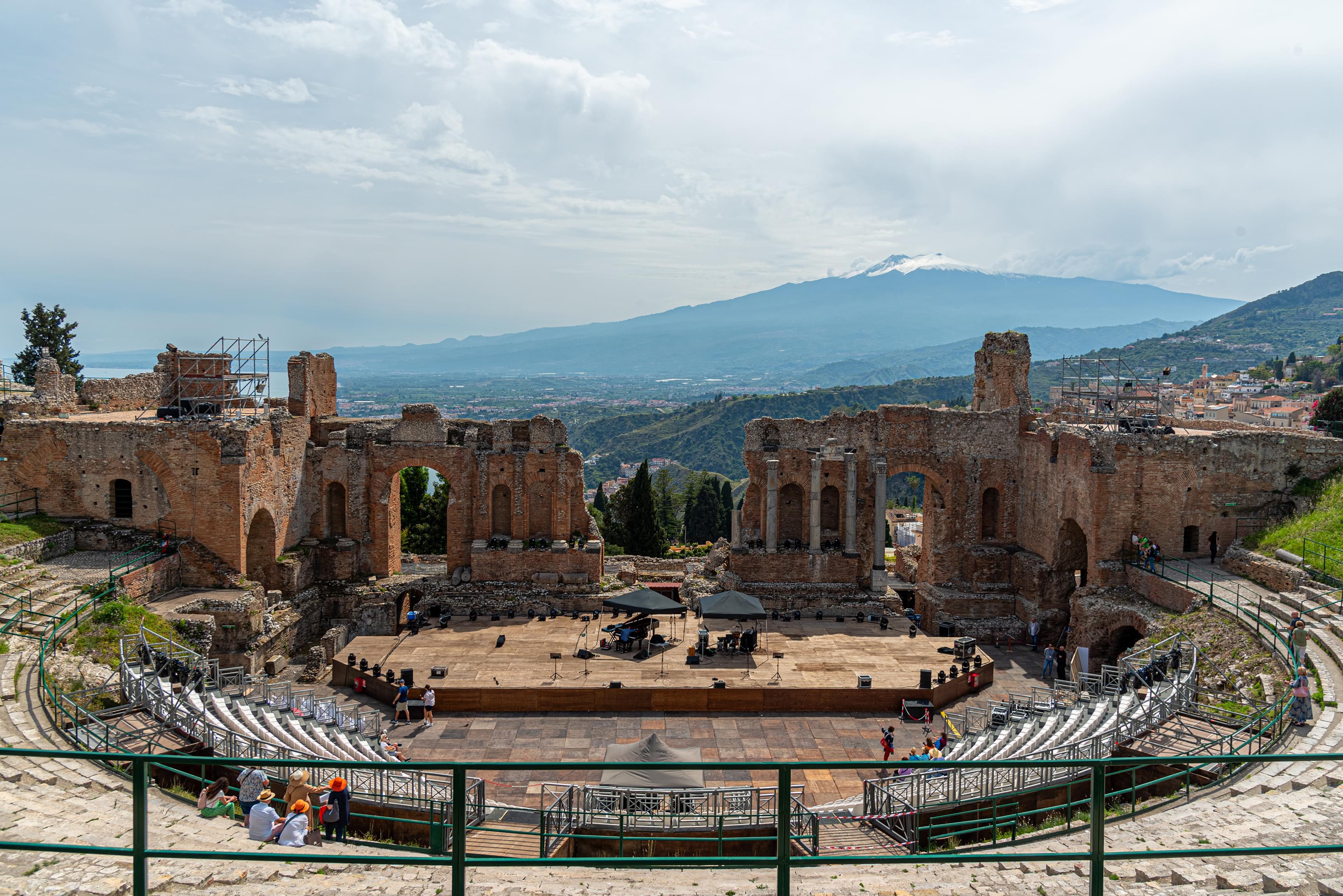

The following day, everyone had their own goals. Some people wanted to shop, others relaxed. On the other hand, I hoped to climb to the top of Rocca di Cefalù, the imposing 270-meter-tall rock that towers over Cefalù. I convinced my father to come along on the adventure, though it didn't take much as he was also very excited to check it out. The rock itself played a key role dating back to the Ancient Greeks. One building in particular is the Temple of Diana, dating back to 8–9th century BC. At the top are the ruins of Castello di Cefalù, a fortress dating back to the twelfth century. Walking up, you pass by fortification walls built over the years to protect themselves from invaders. Once at the top, you are treated to incredible panoramic views of Cefalù and the Tyrrhenian Sea. Once we settled back down from our hike, we spent the second half of the day relaxing on the beach and swimming in the Sea. Feeling the water and sand on your skin, which allows you to connect with the land, was an exceptional experience. That evening, we gathered at Liska for dinner. We were seated outside overlooking the Sea and ate dinner while we watched the sun set over the horizon. This was a spectacular way to conclude our last full day of the trip.
Day number seventeen is the final day of our two-plus week trip. After checking out of our Cefalù, we stopped in the capital of Sicily, Palermo. We had a few hours to grab lunch and check out a few sights there. First was a decent pizza at SciùRum. After lunch, we walked up Via Vittorio Emanuele with quick stops at Fontana Pretoria and the stunning Cattedrale di Palermo. The Cathedral has been a UNESCO World Heritage site since 2015, and it is an excellent example of various architectural styles such as Byzantine, Norman Romanesque, Islamic, Gothic, Renaissance, Baroque, and Neoclassical. Before returning to our cars, we stopped at Dolce Capo for one last gelato. They serve some exceptional gelato that is unmistakably fresh and flavorful. But now our adventures are coming to an end. We dropped off our cars at Palermo Airport and boarded an early evening flight back to Rome. In Rome, we stayed the night at a hotel at the airport and boarded our flight back to New York early the following day.
Once again, we were thrilled to have the privilege to have such an enriching experience. We're looking forward to returning again in the future to expand upon our experiences this time, but now it's onward to whatever comes next.
